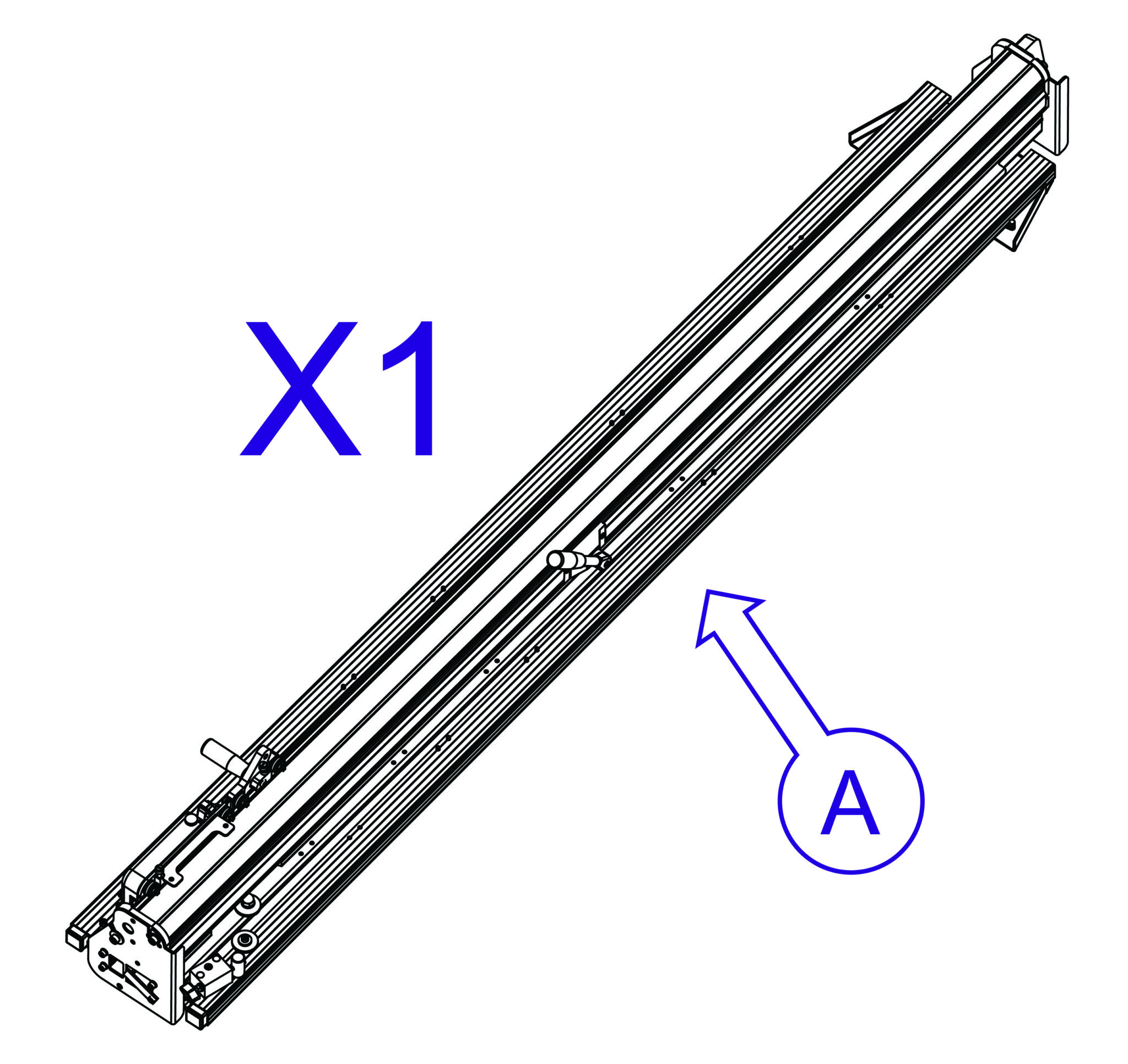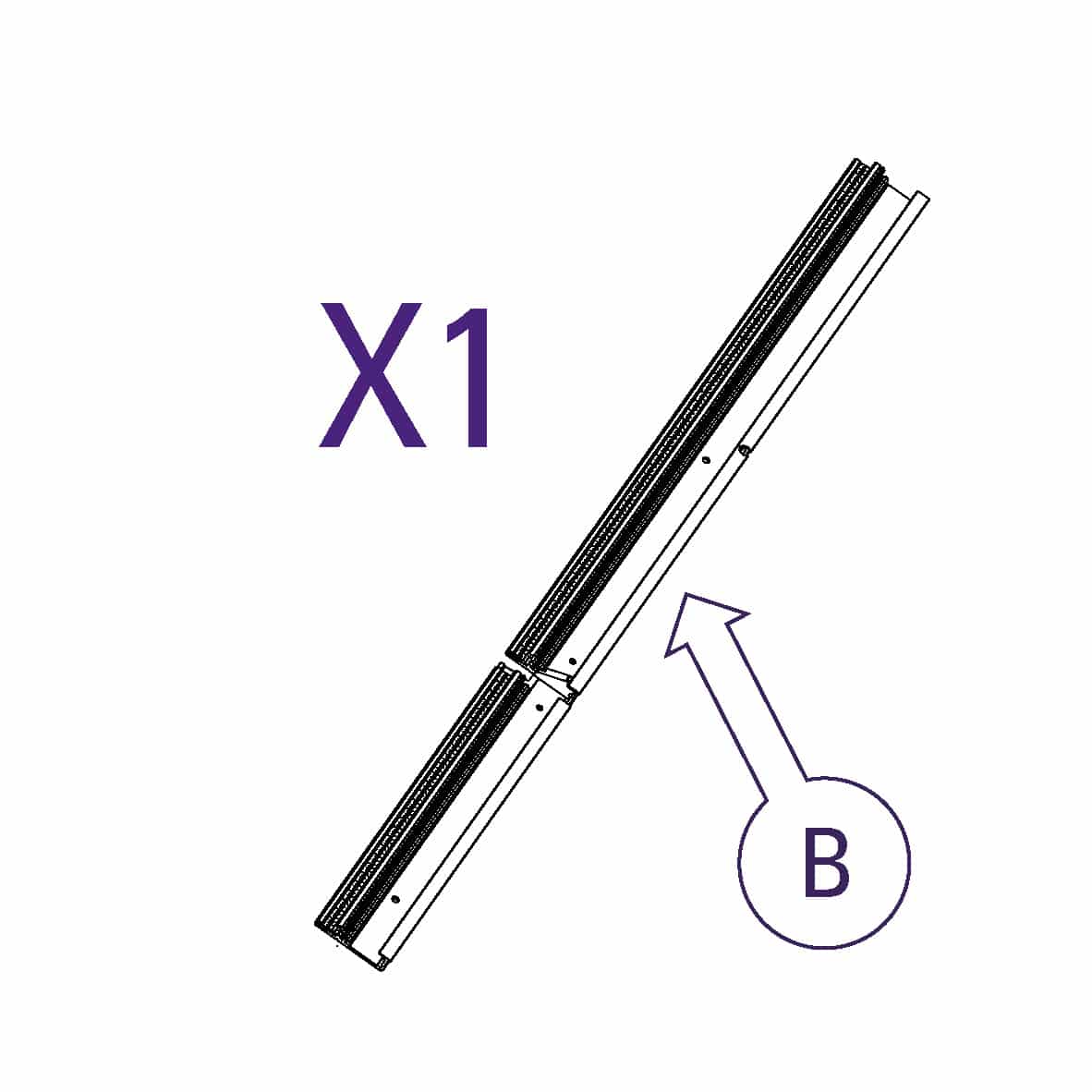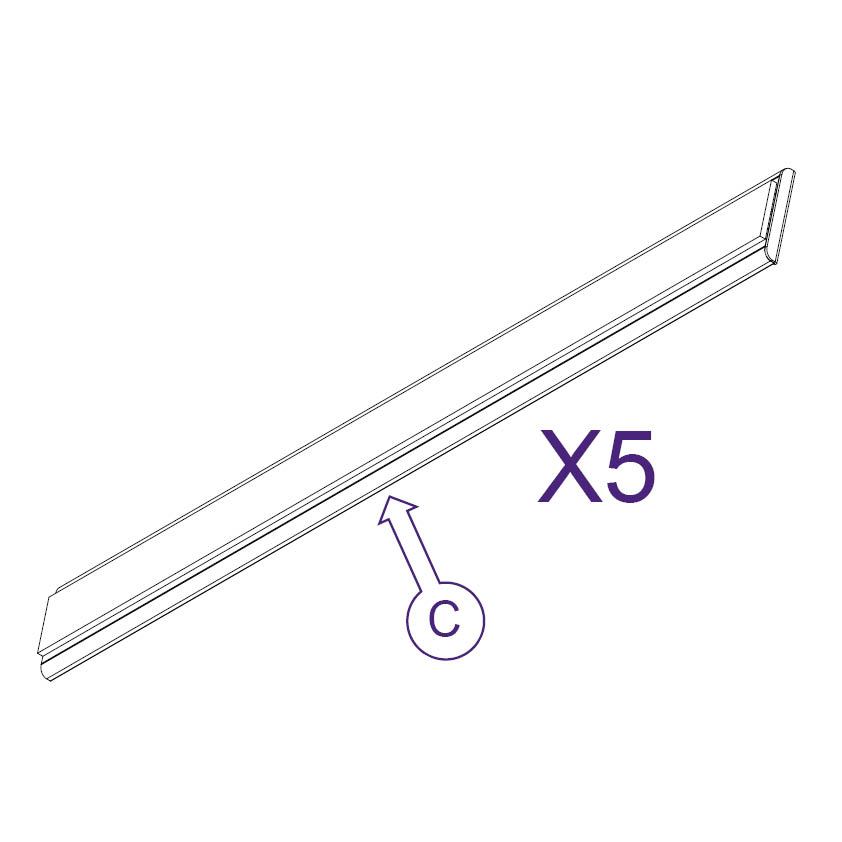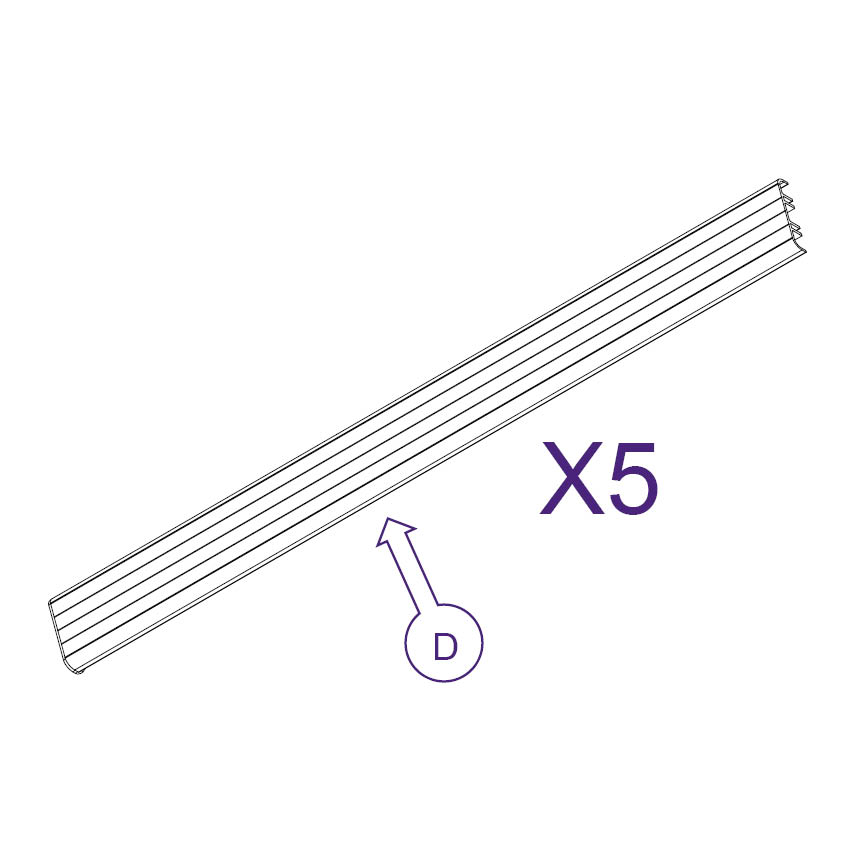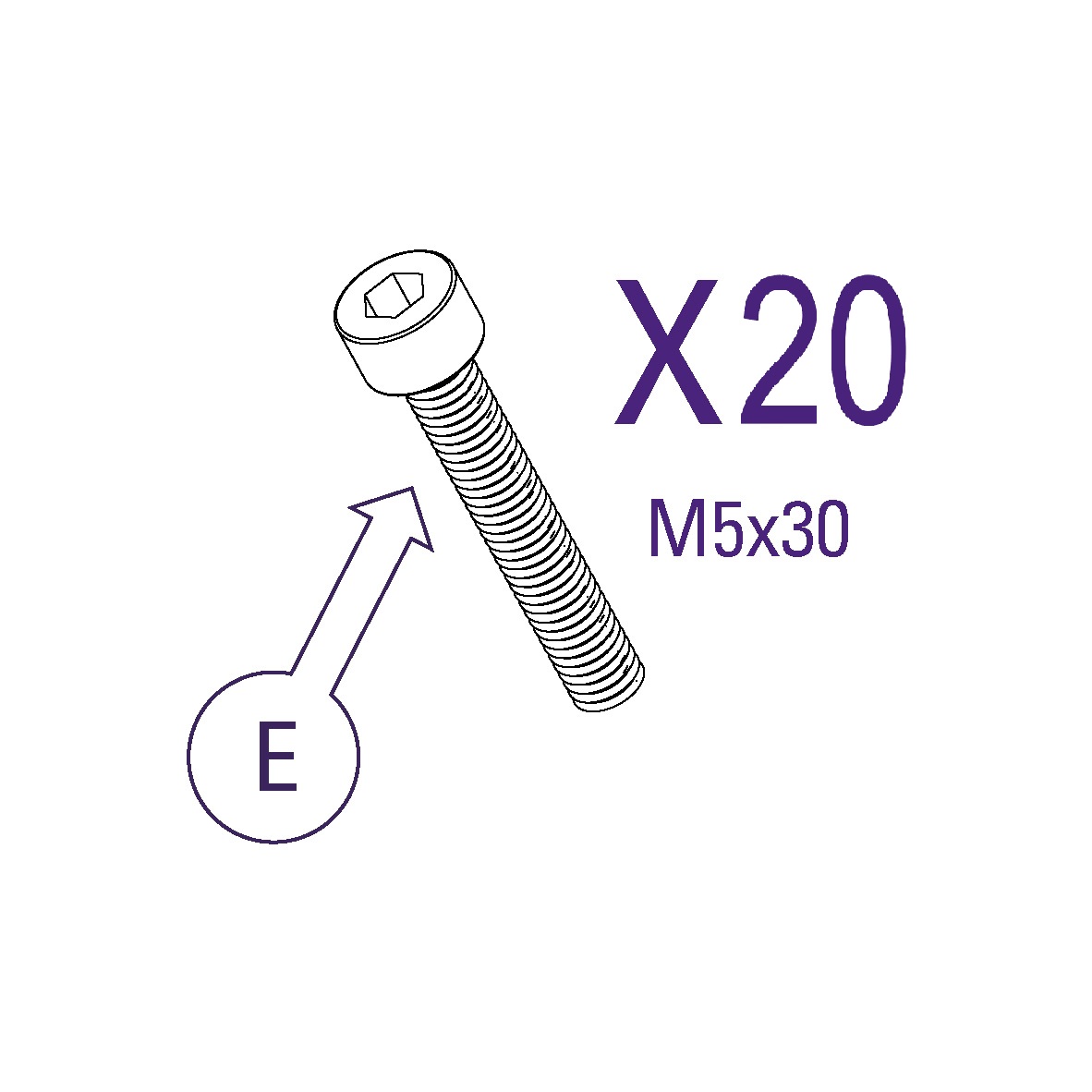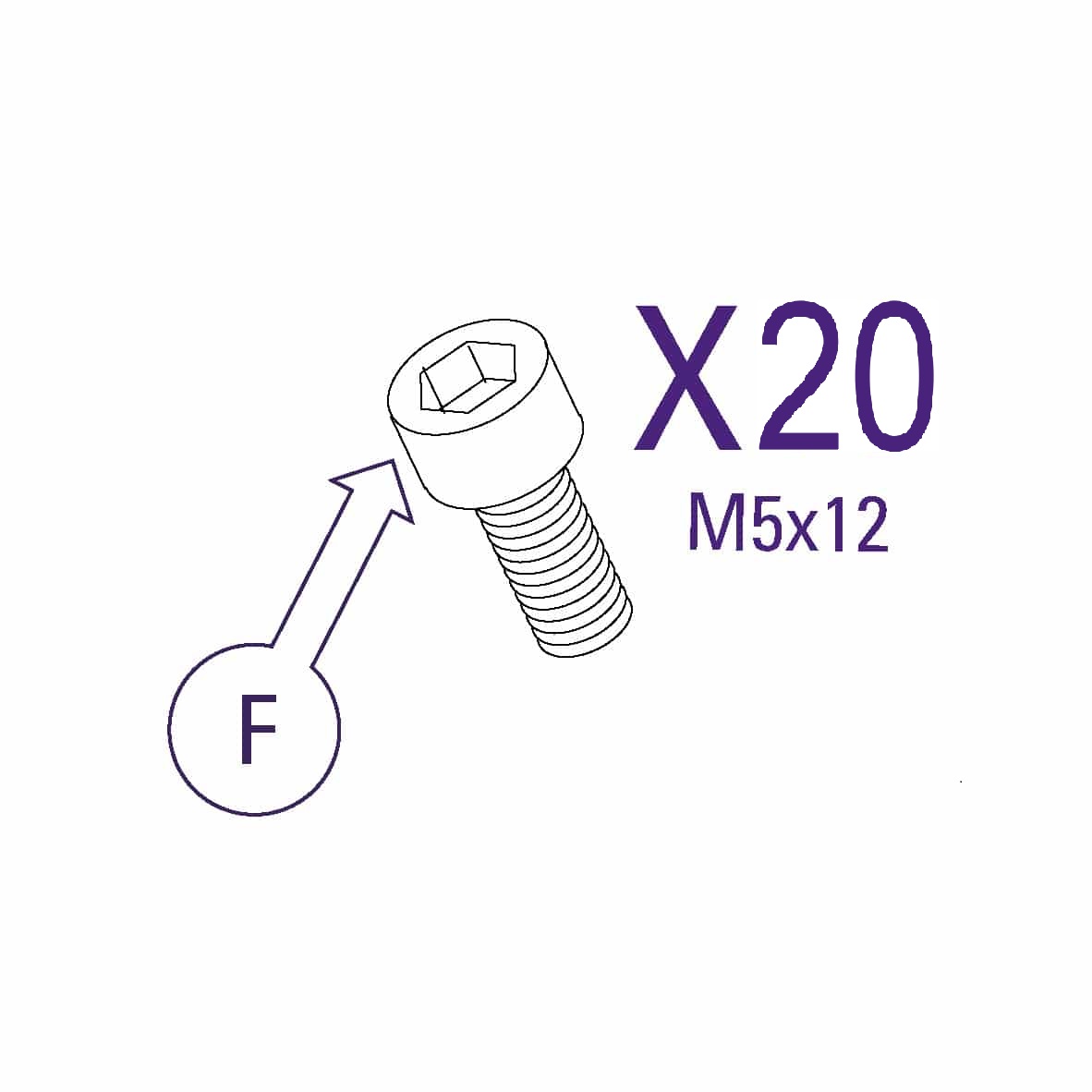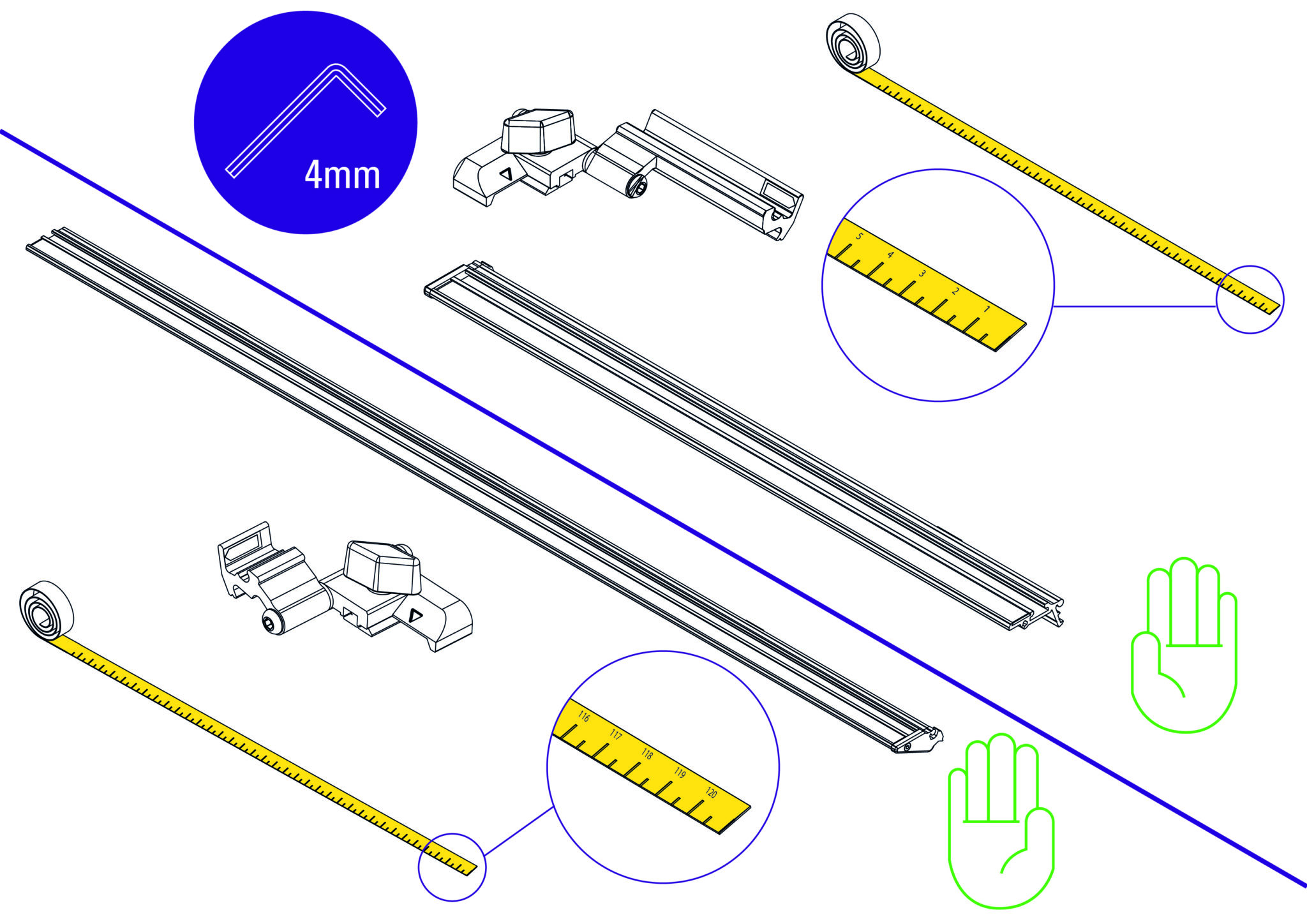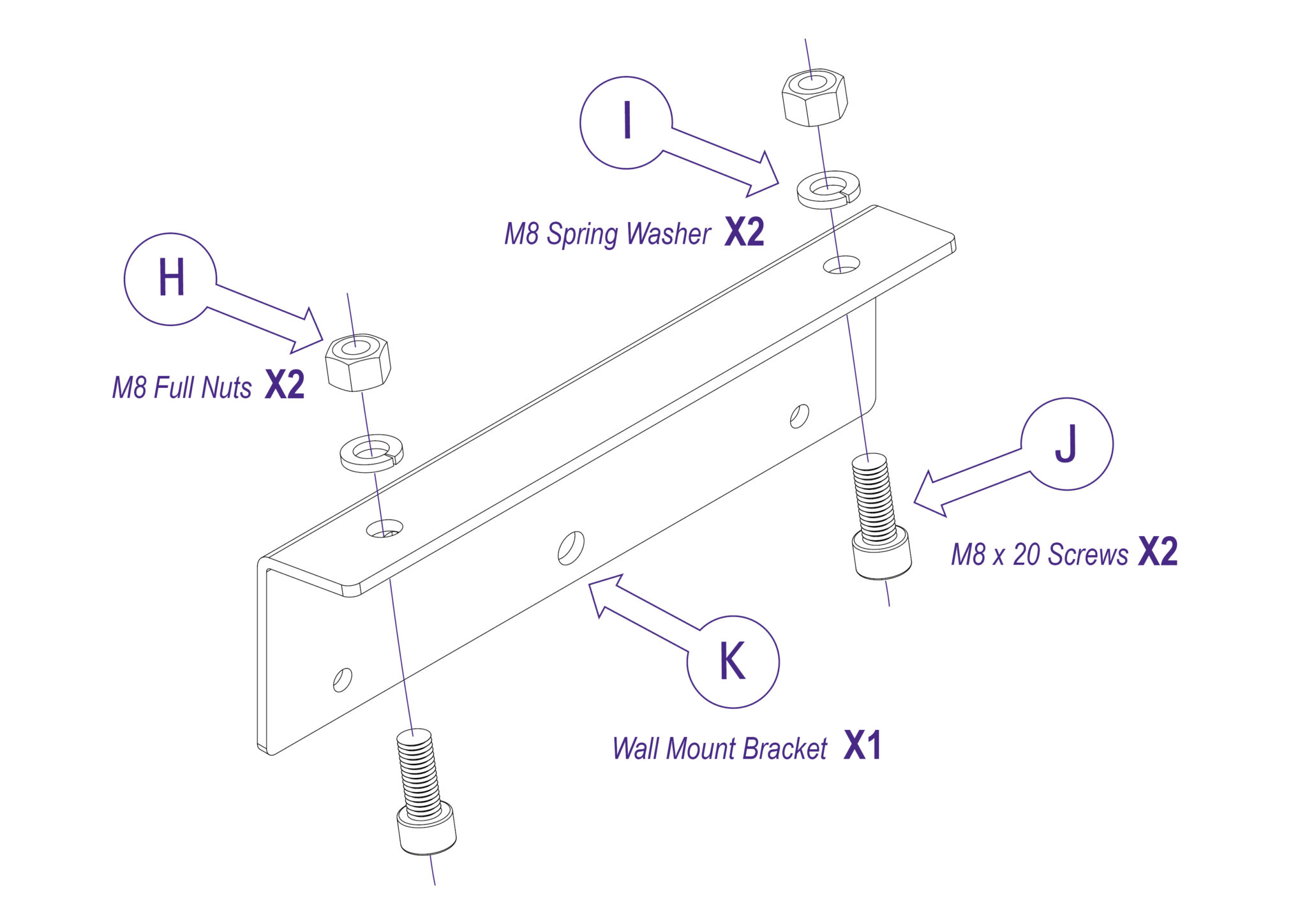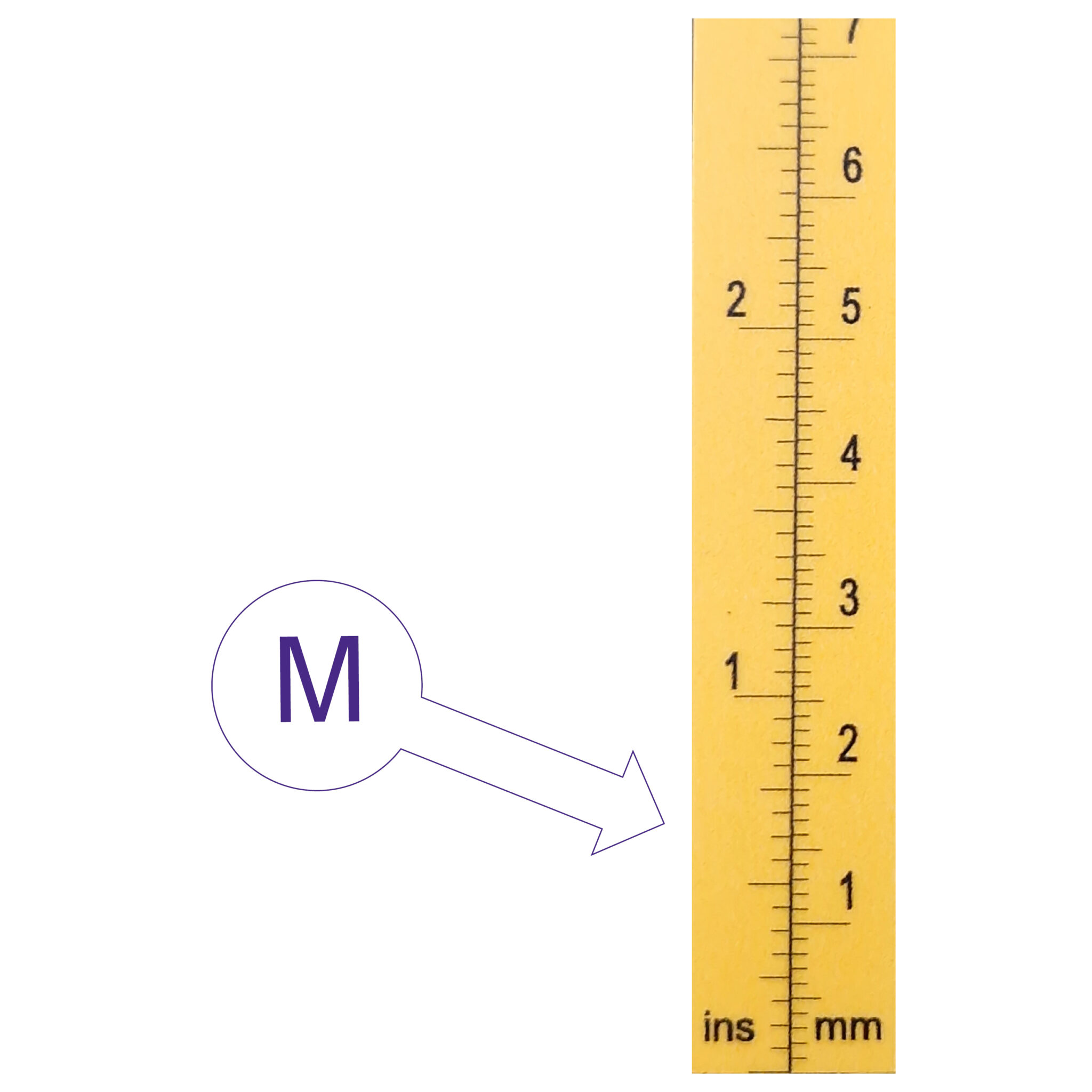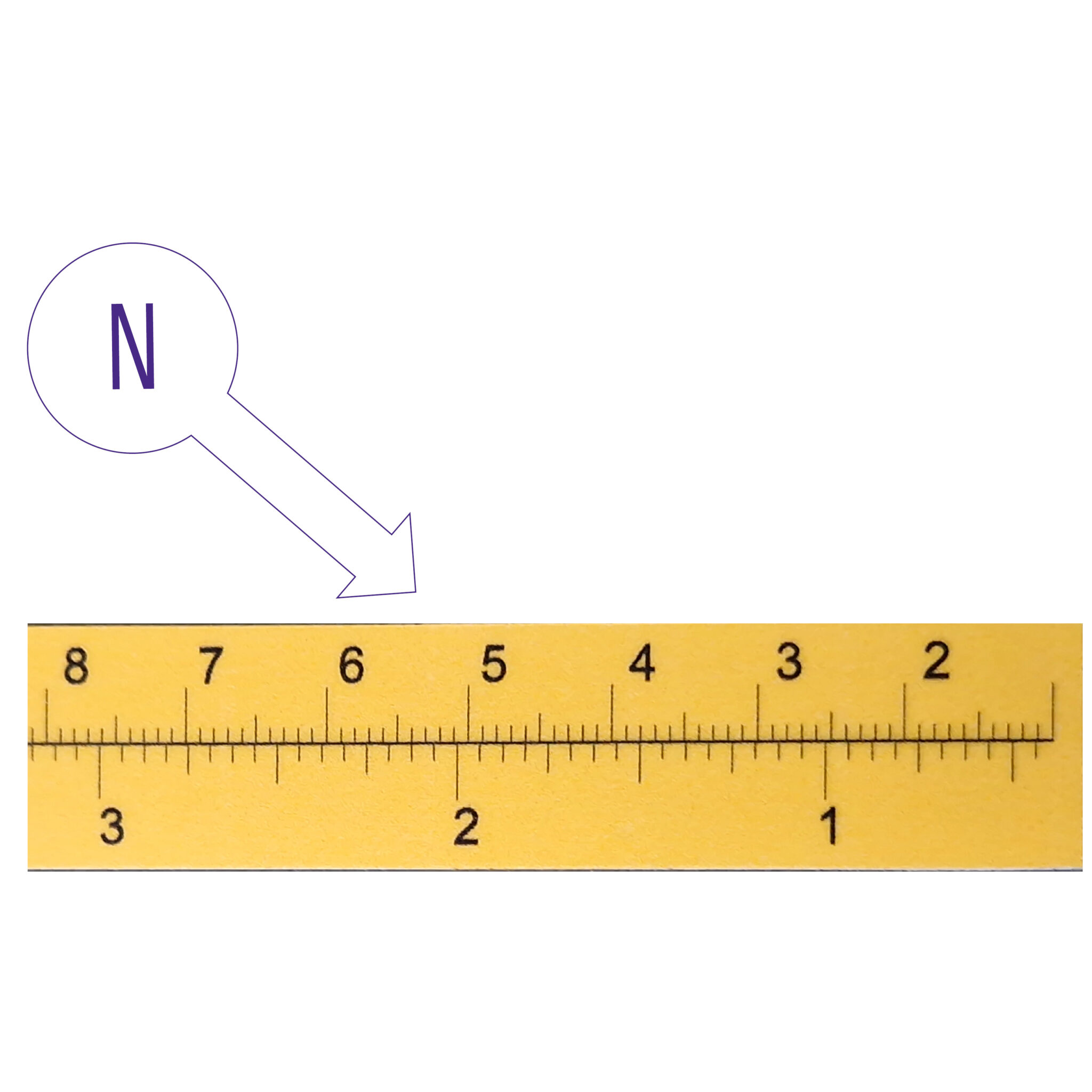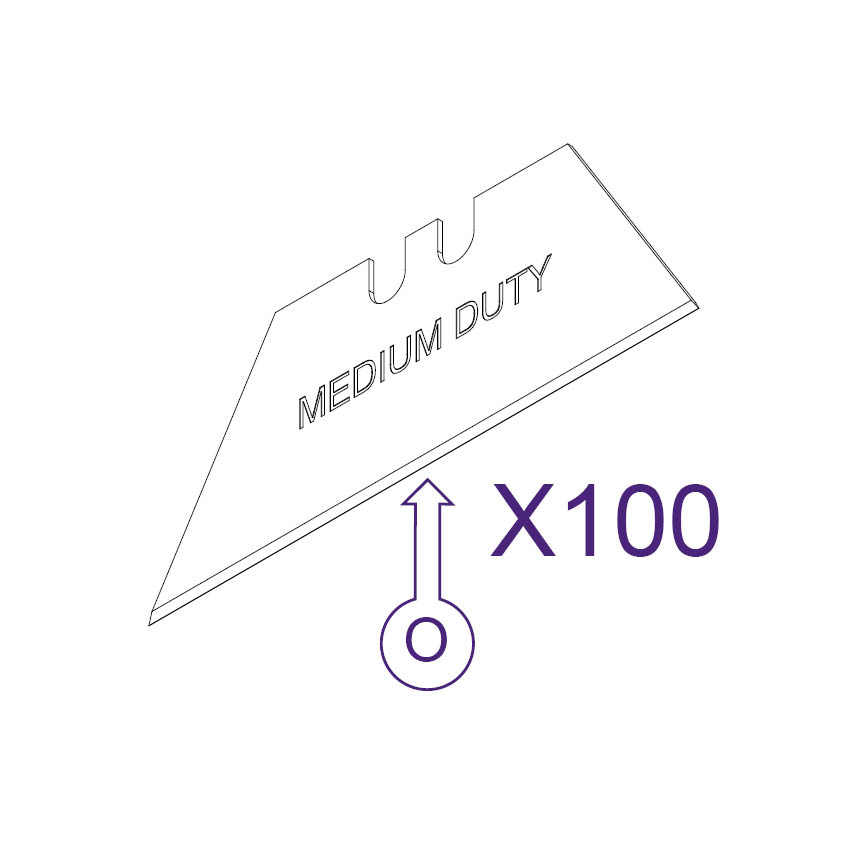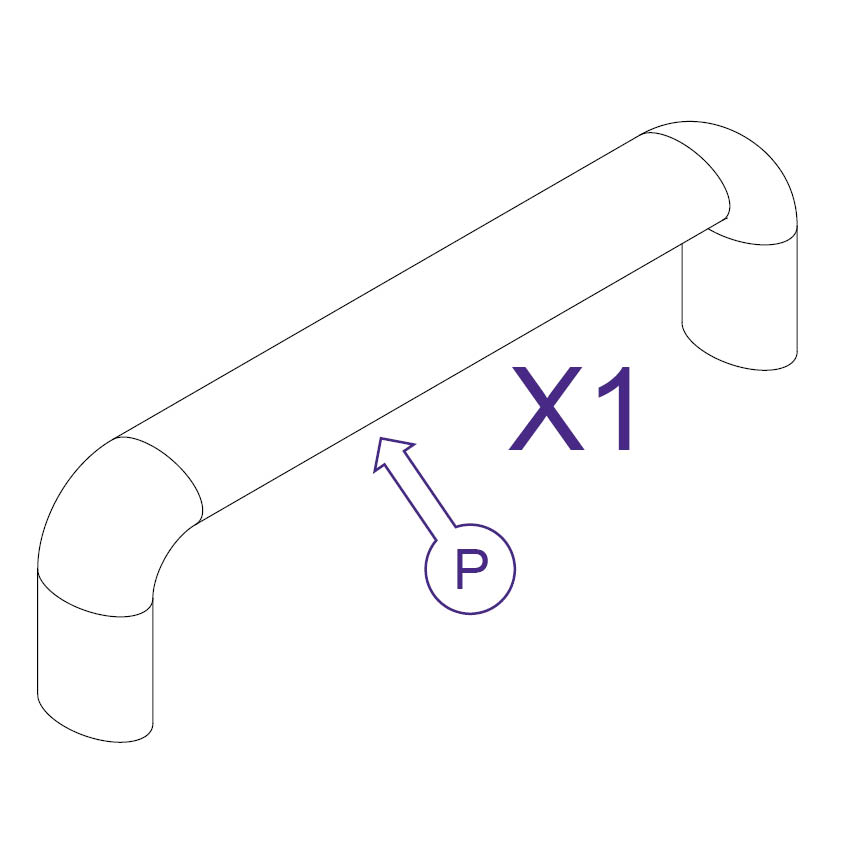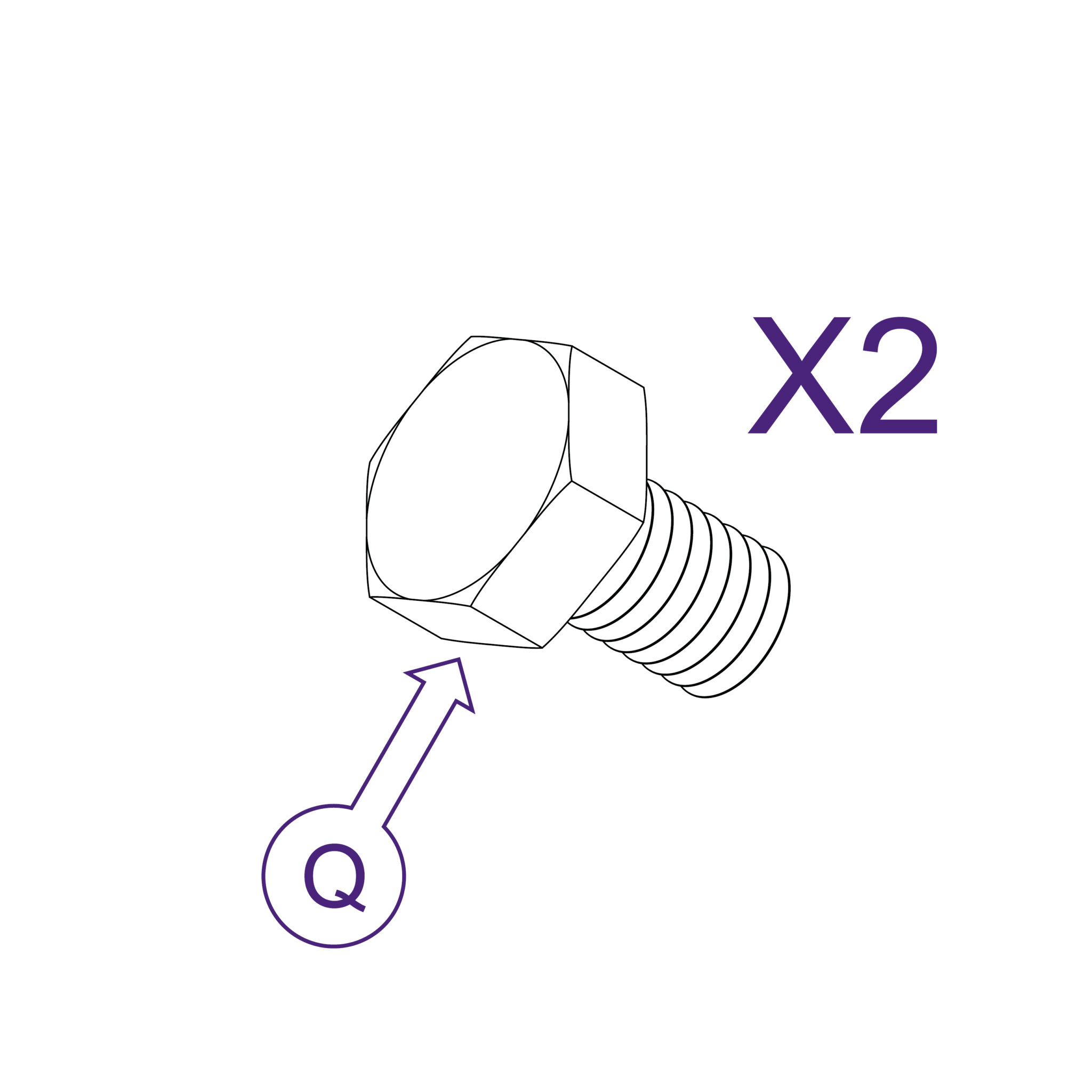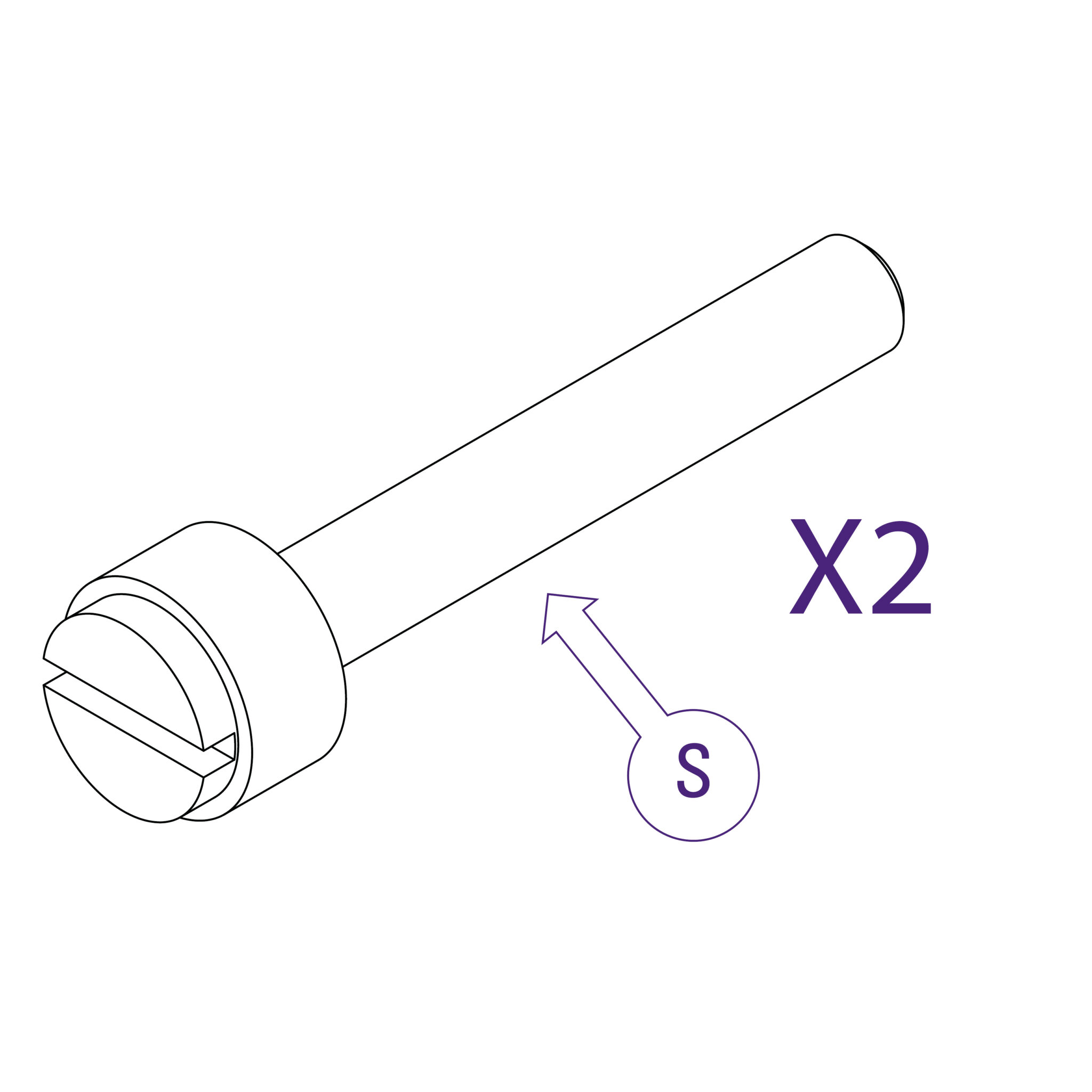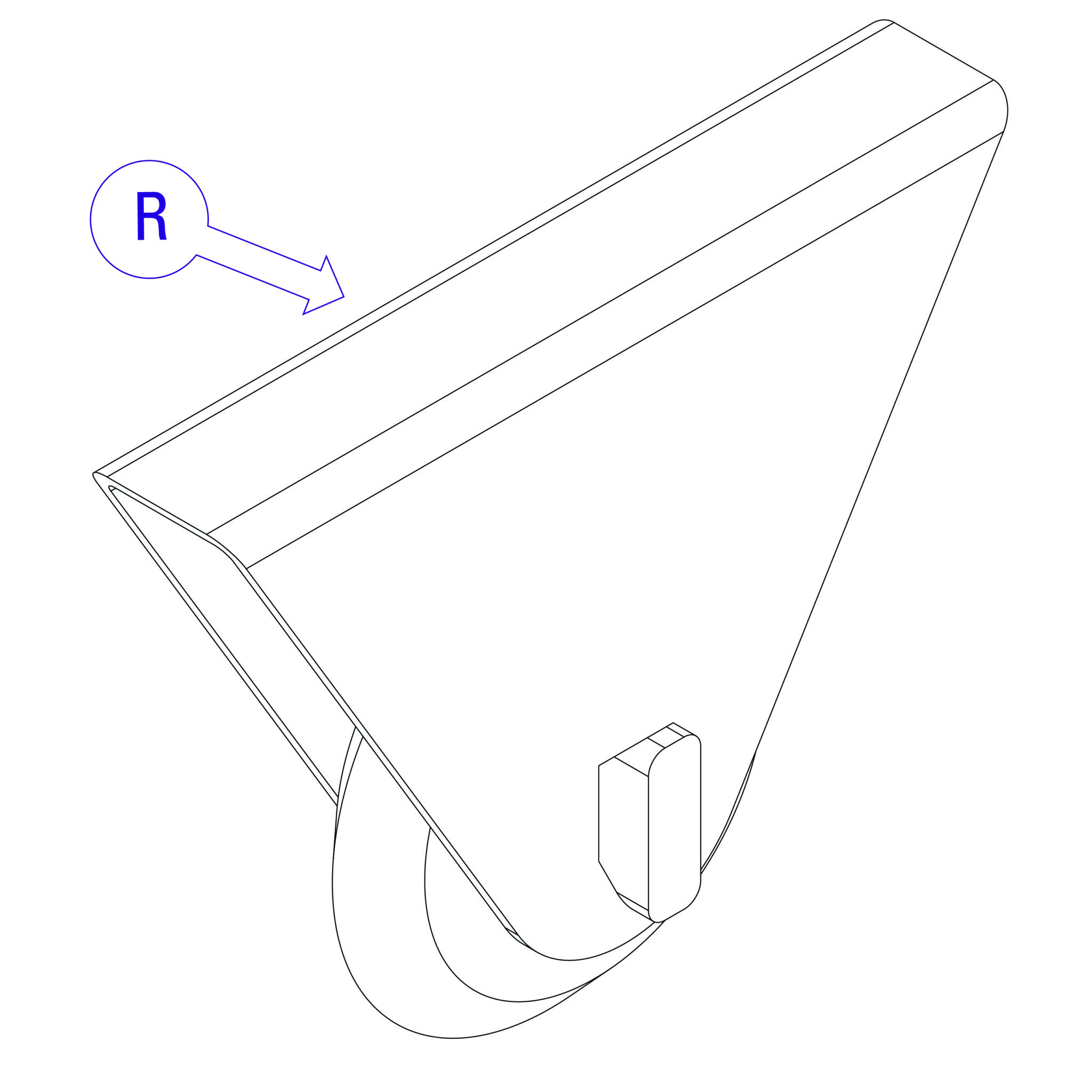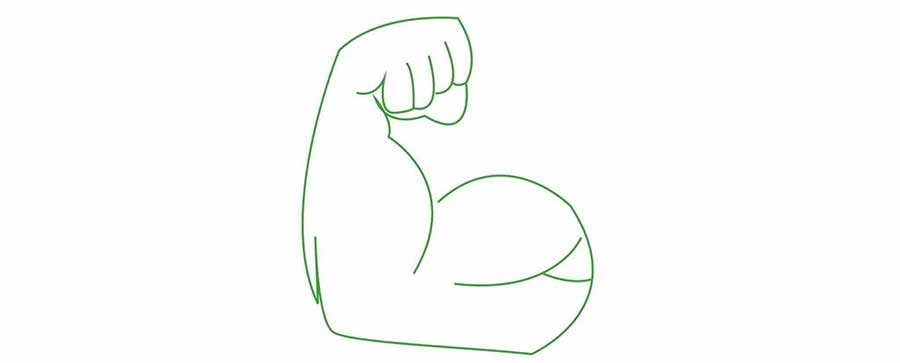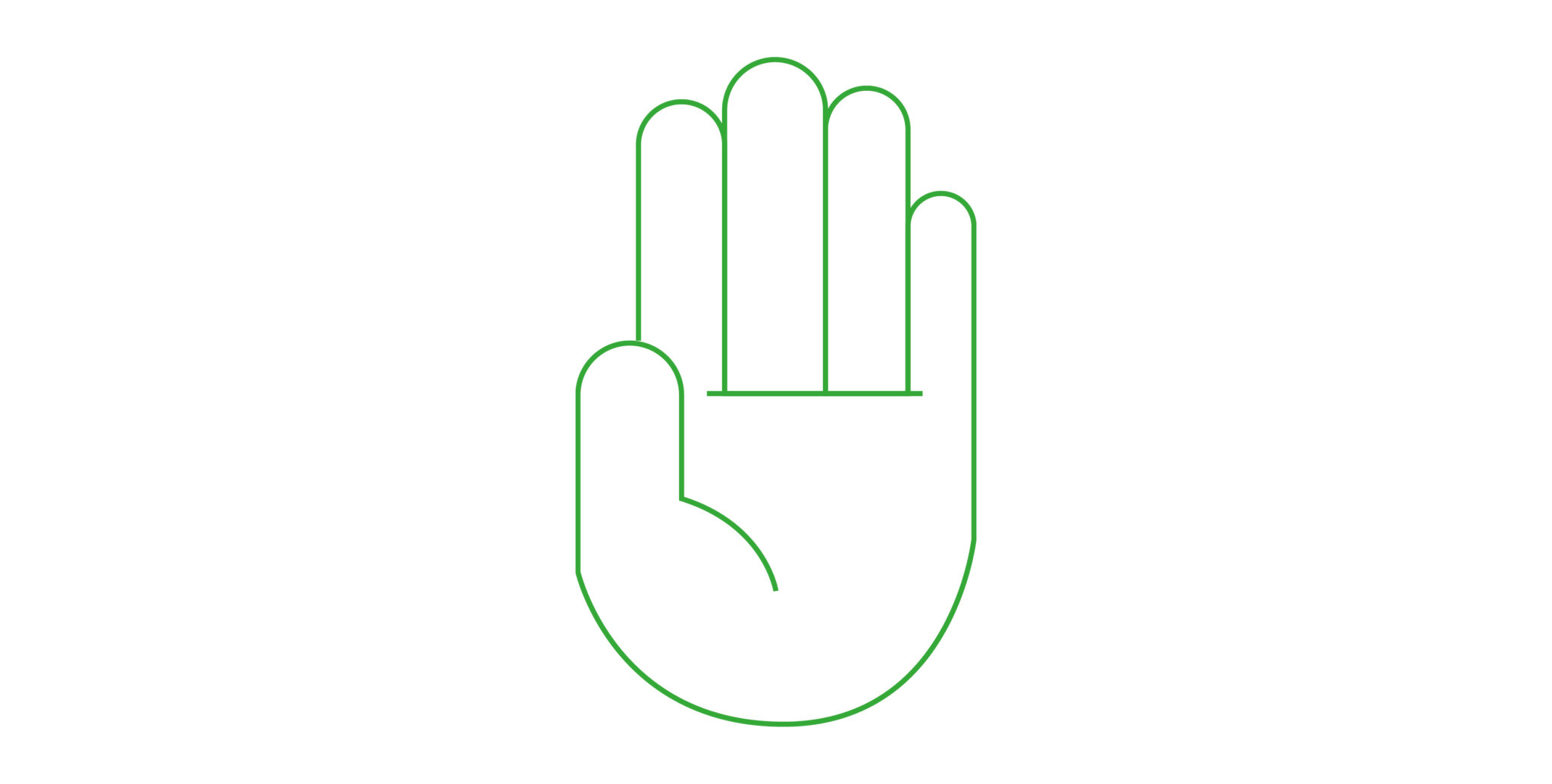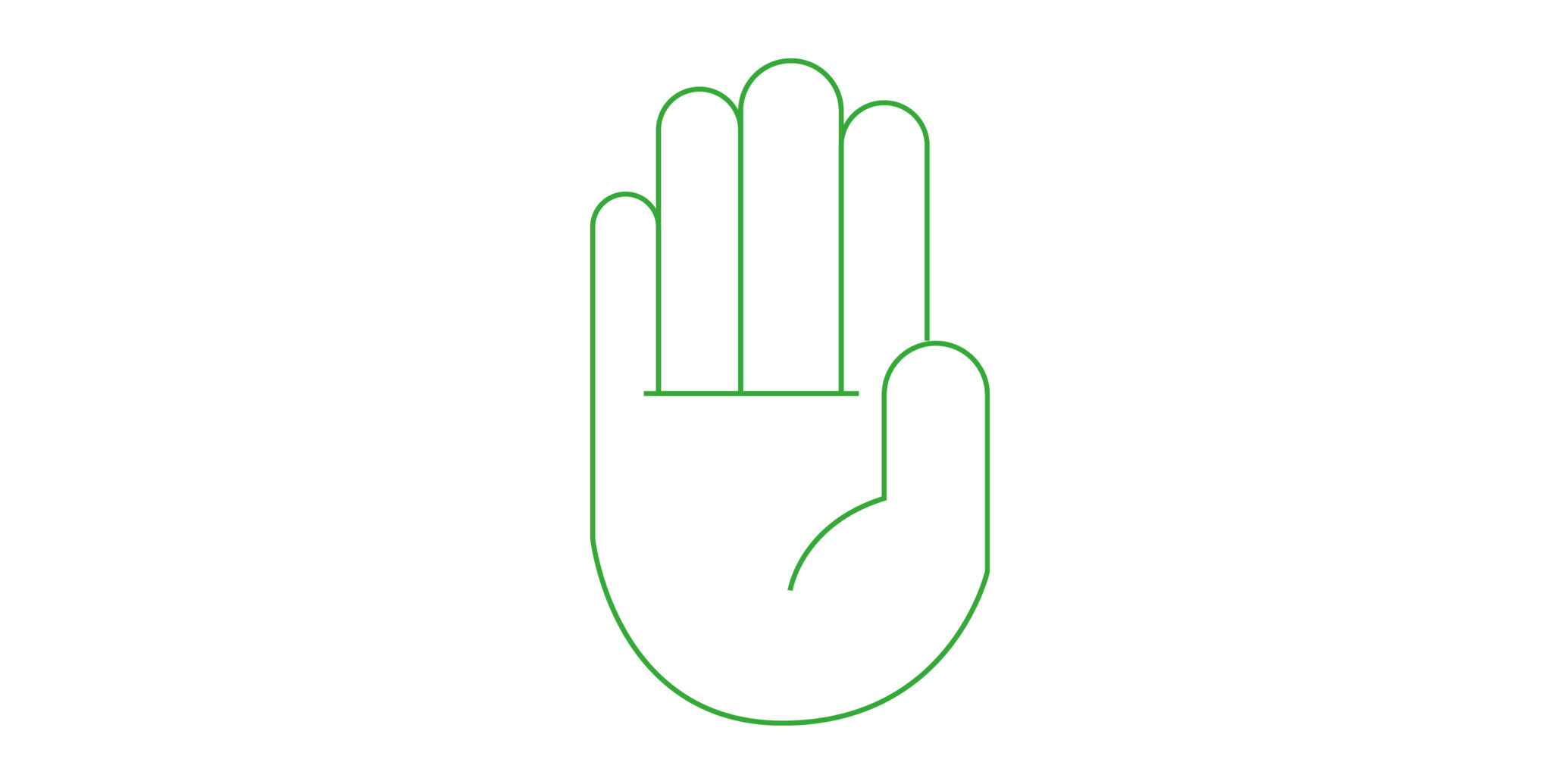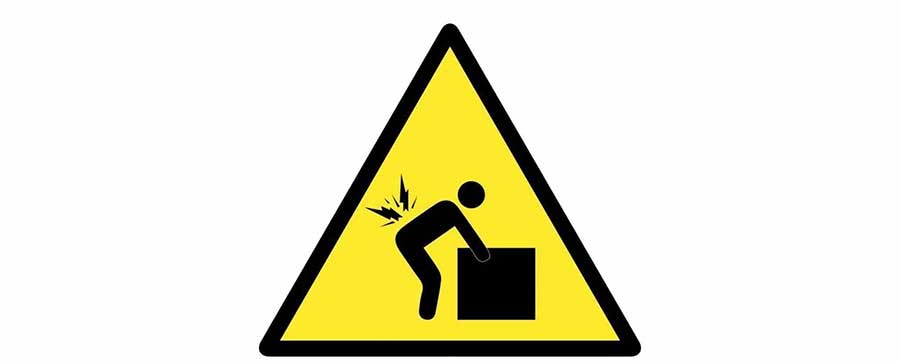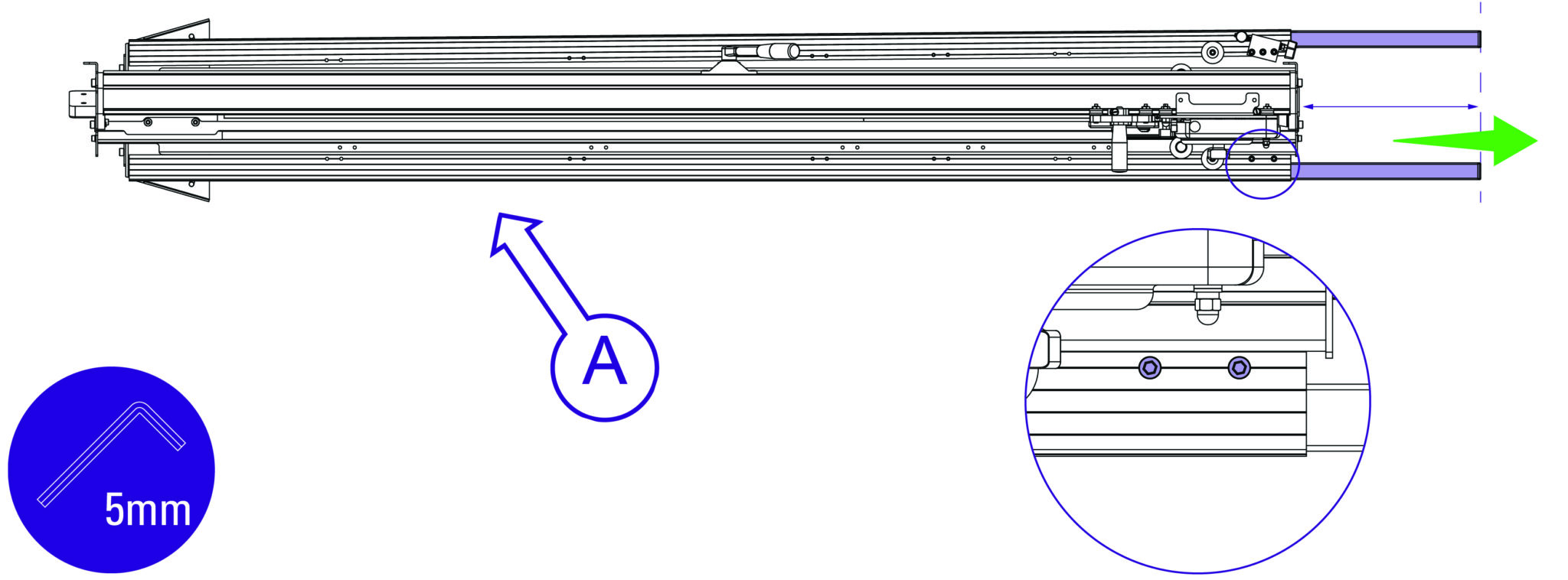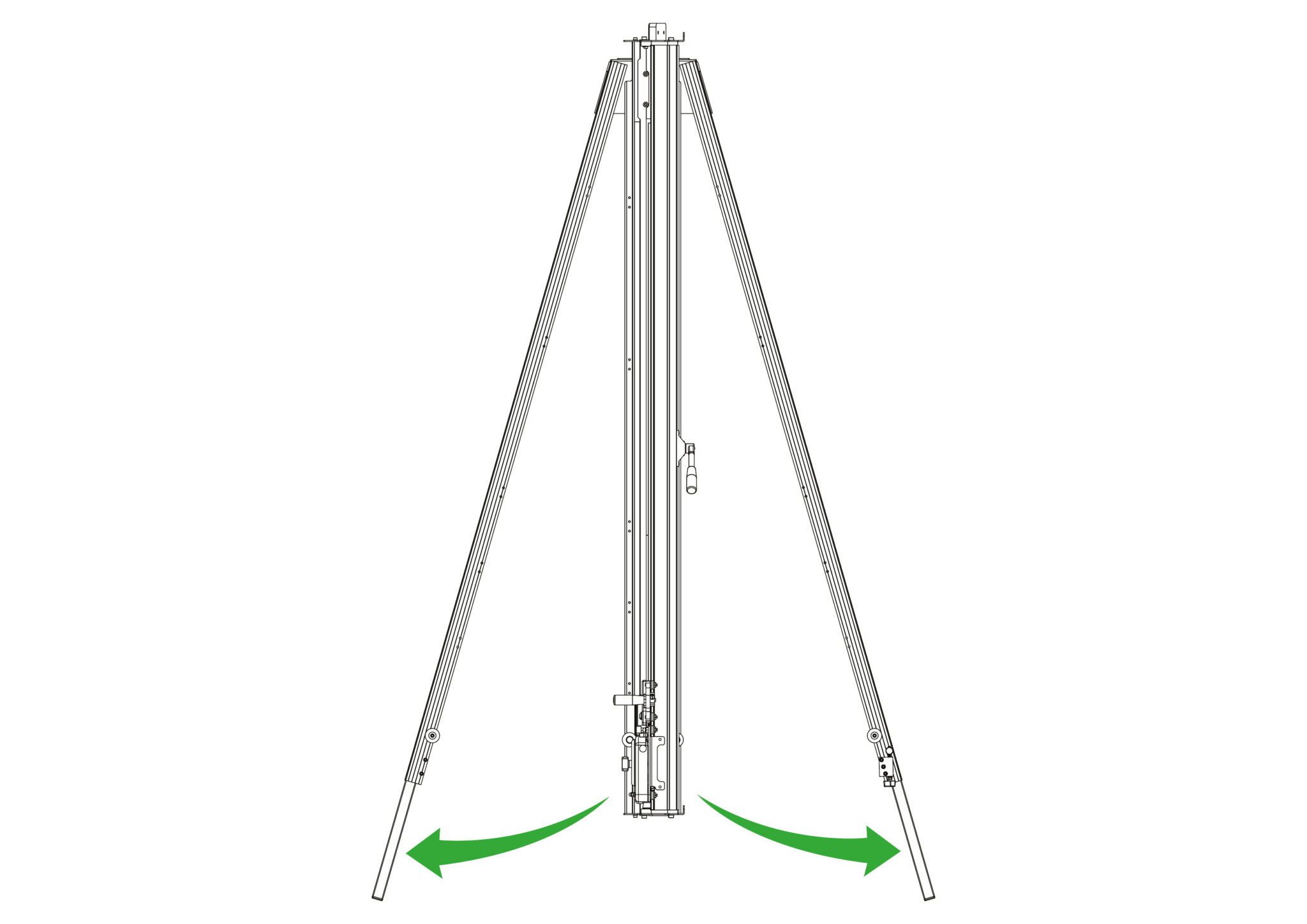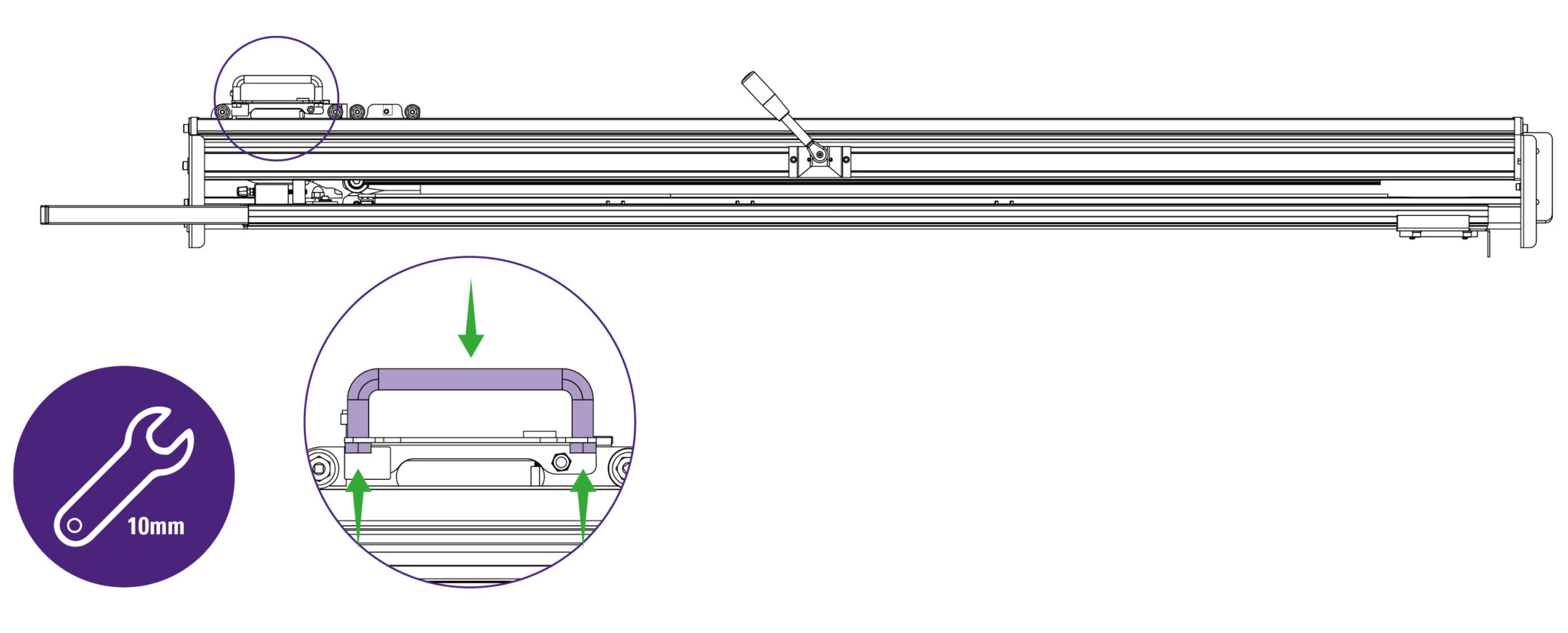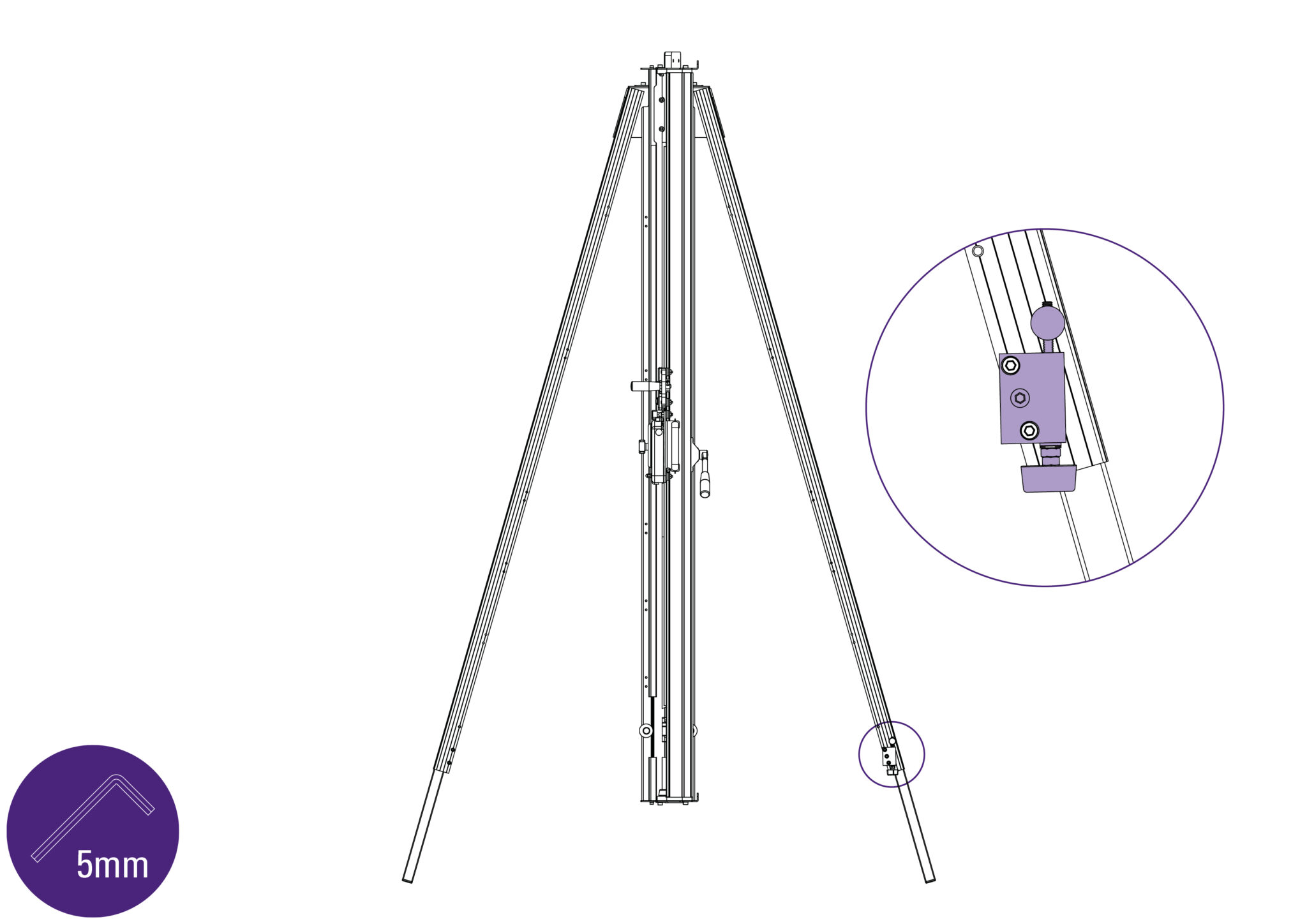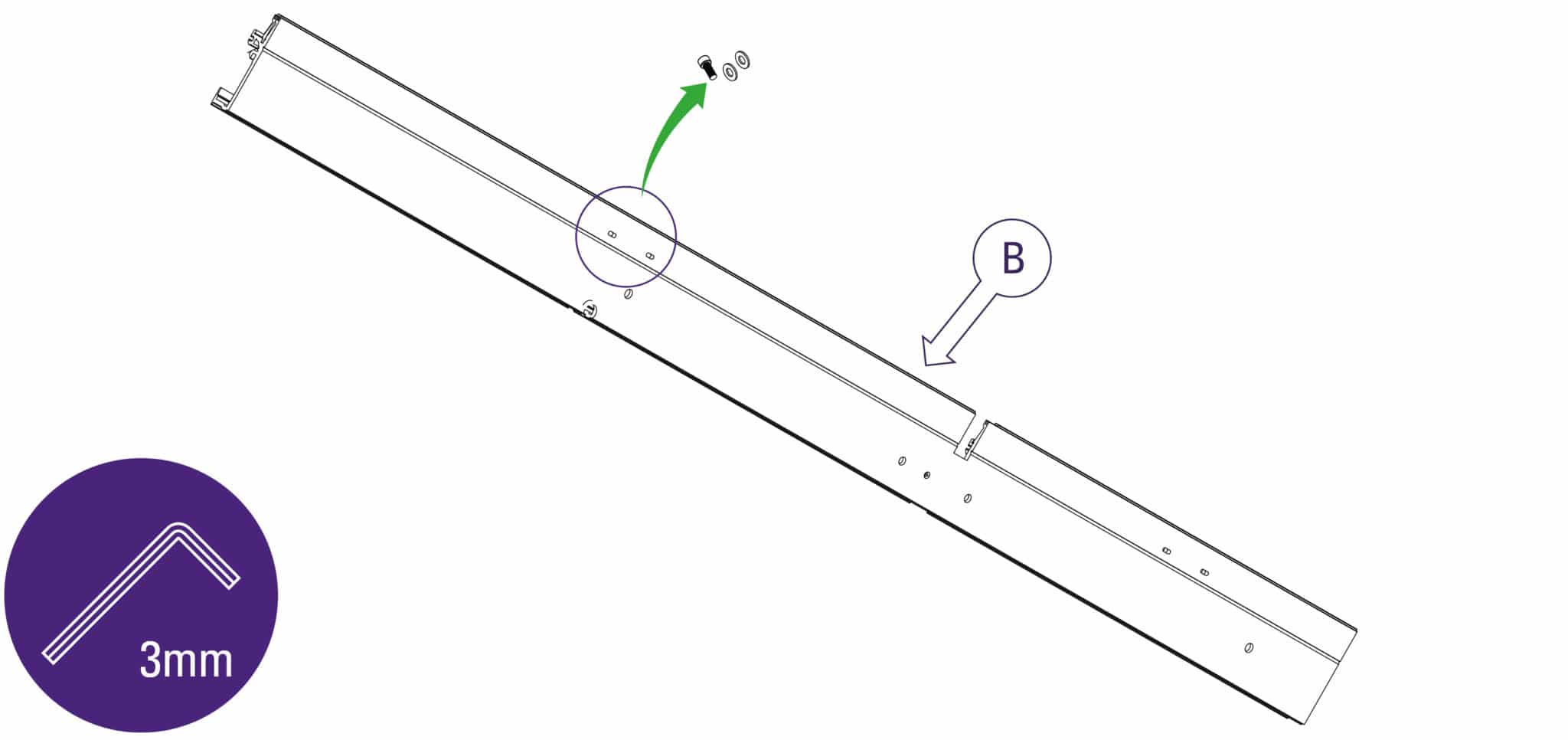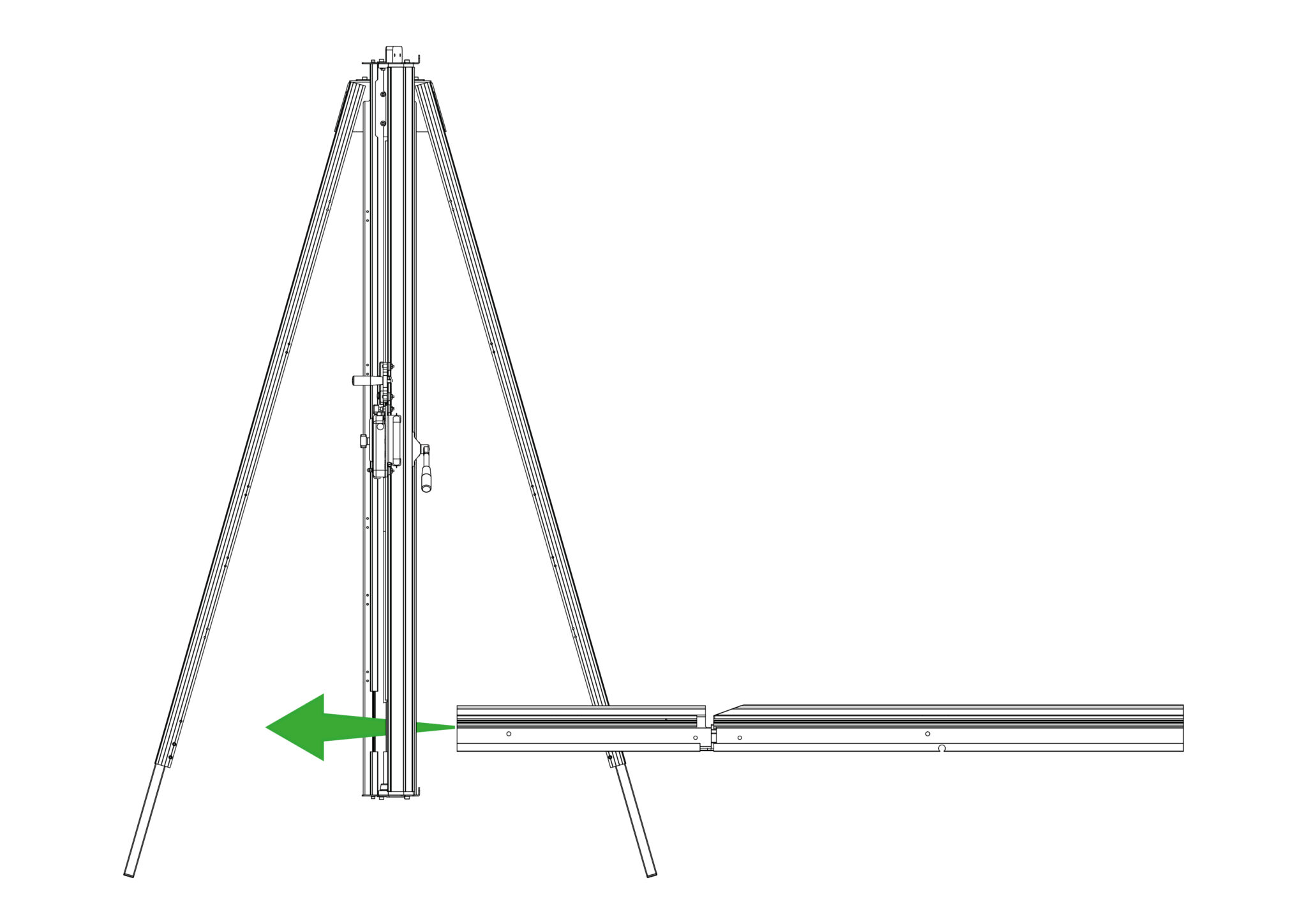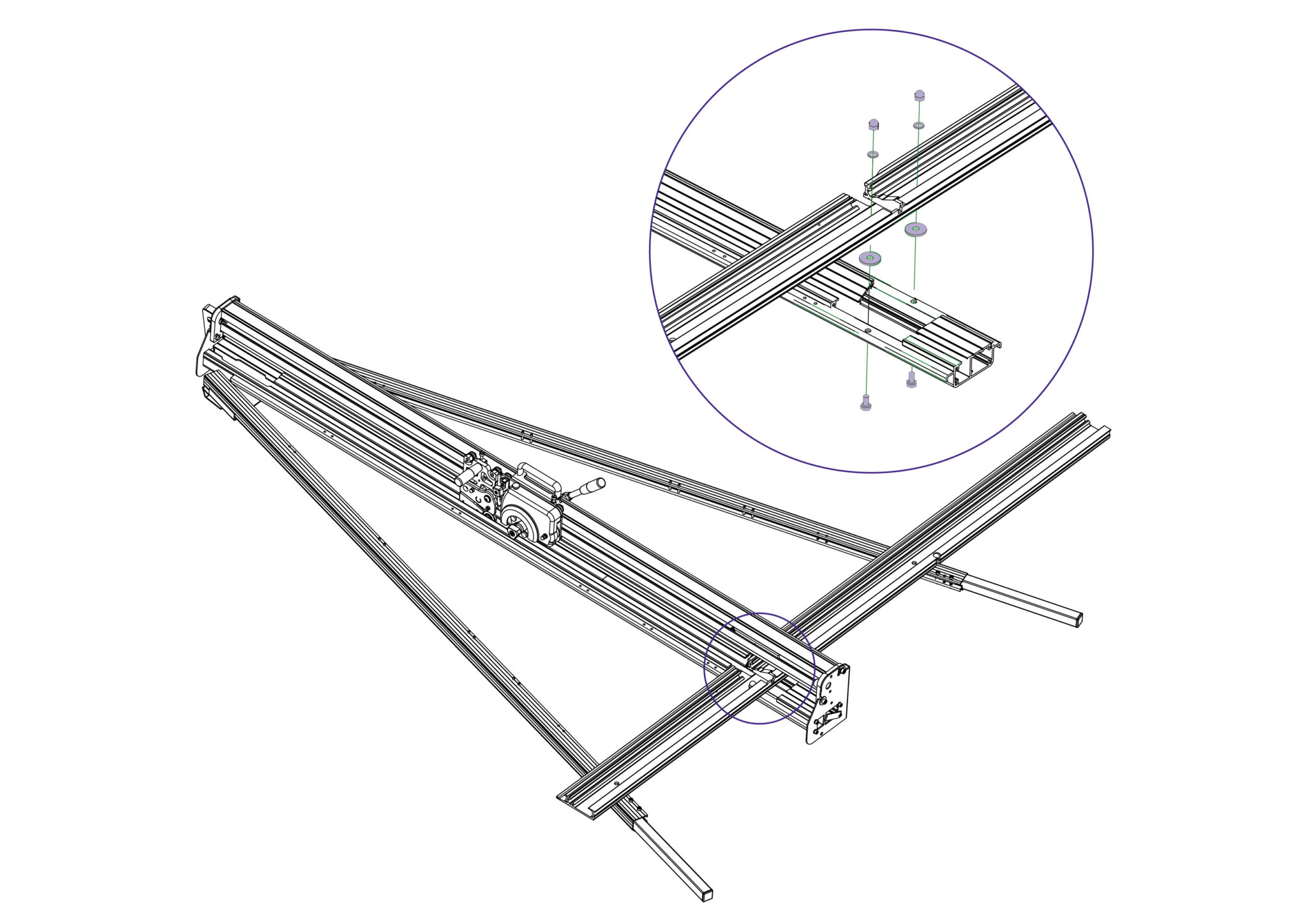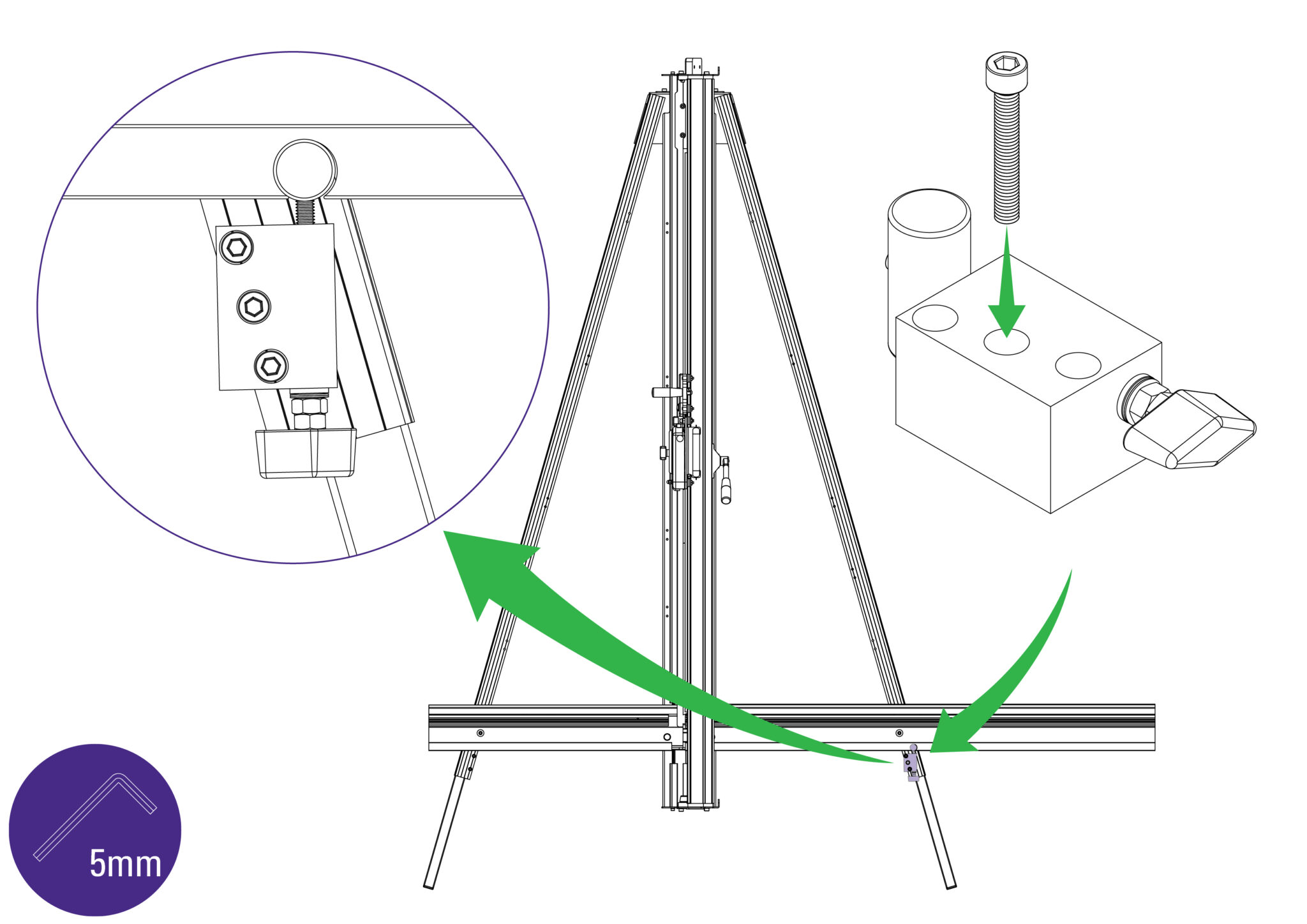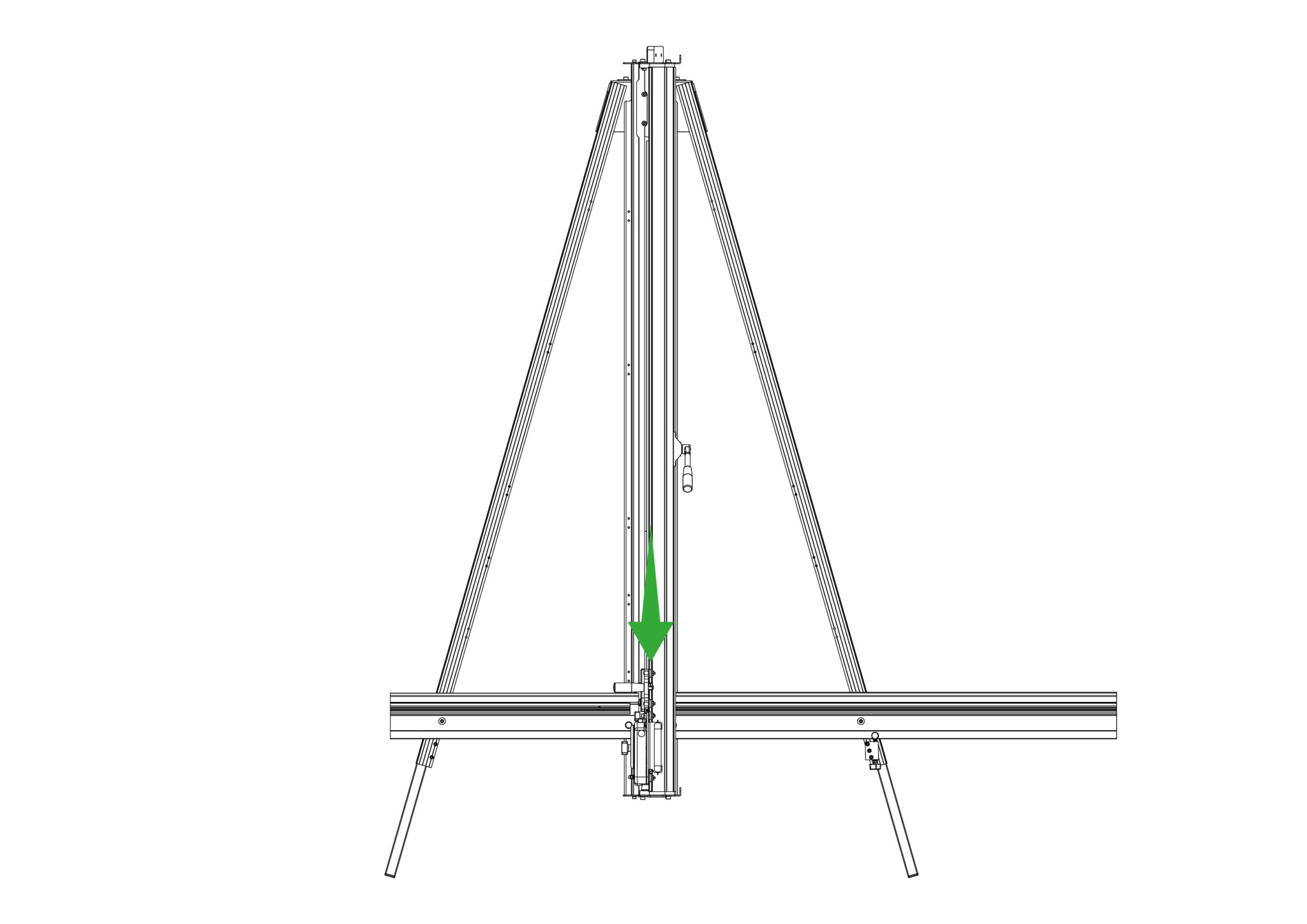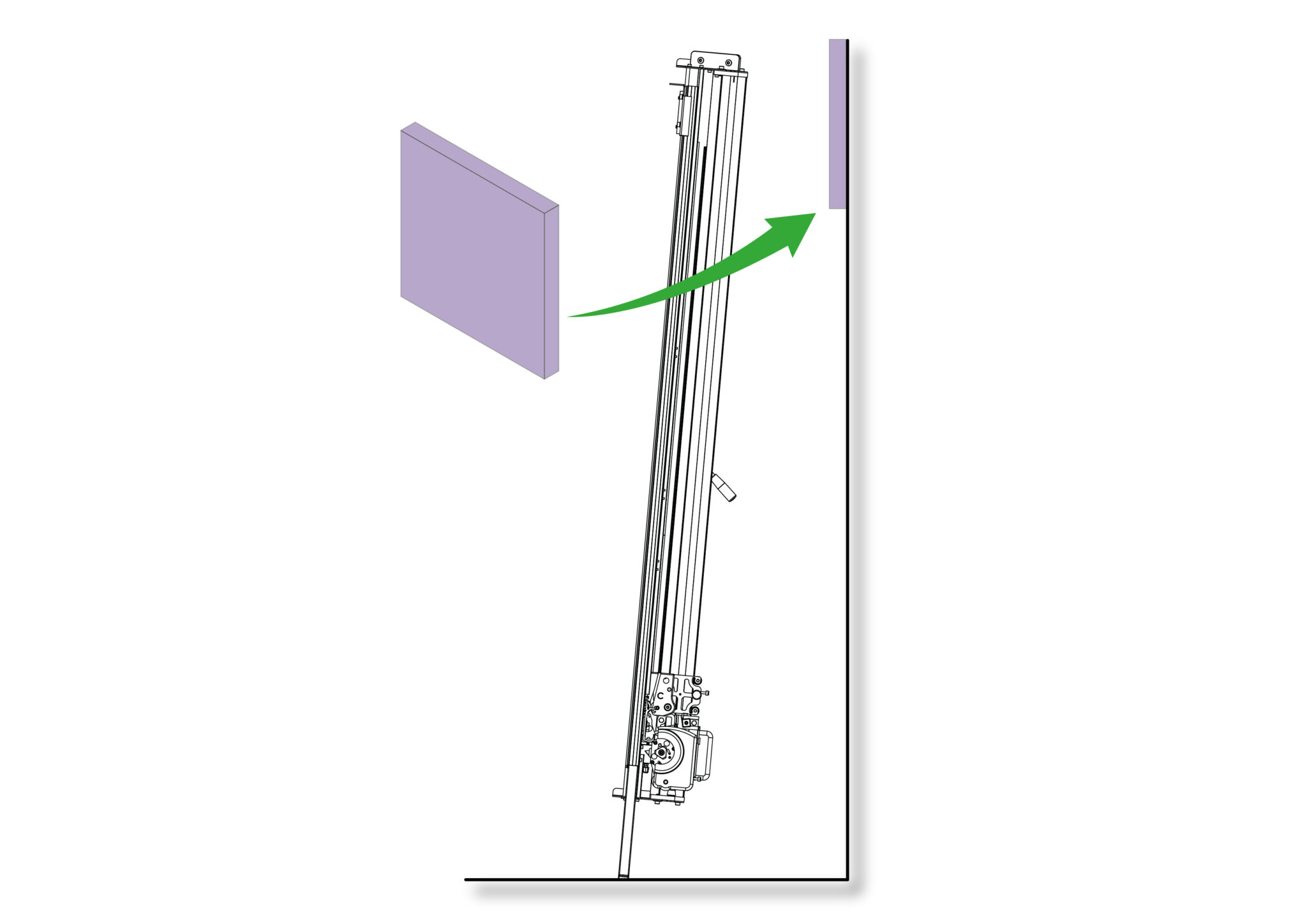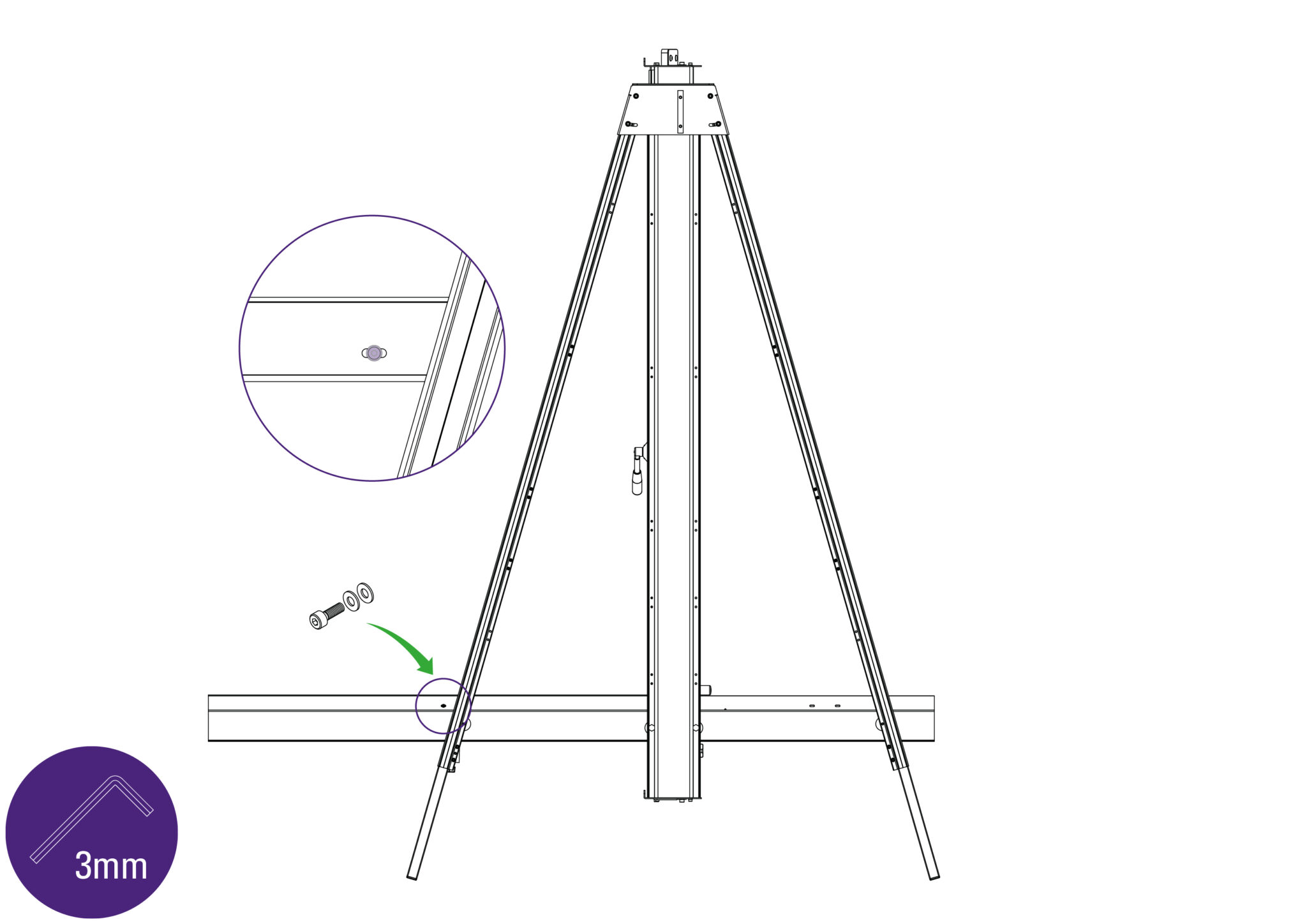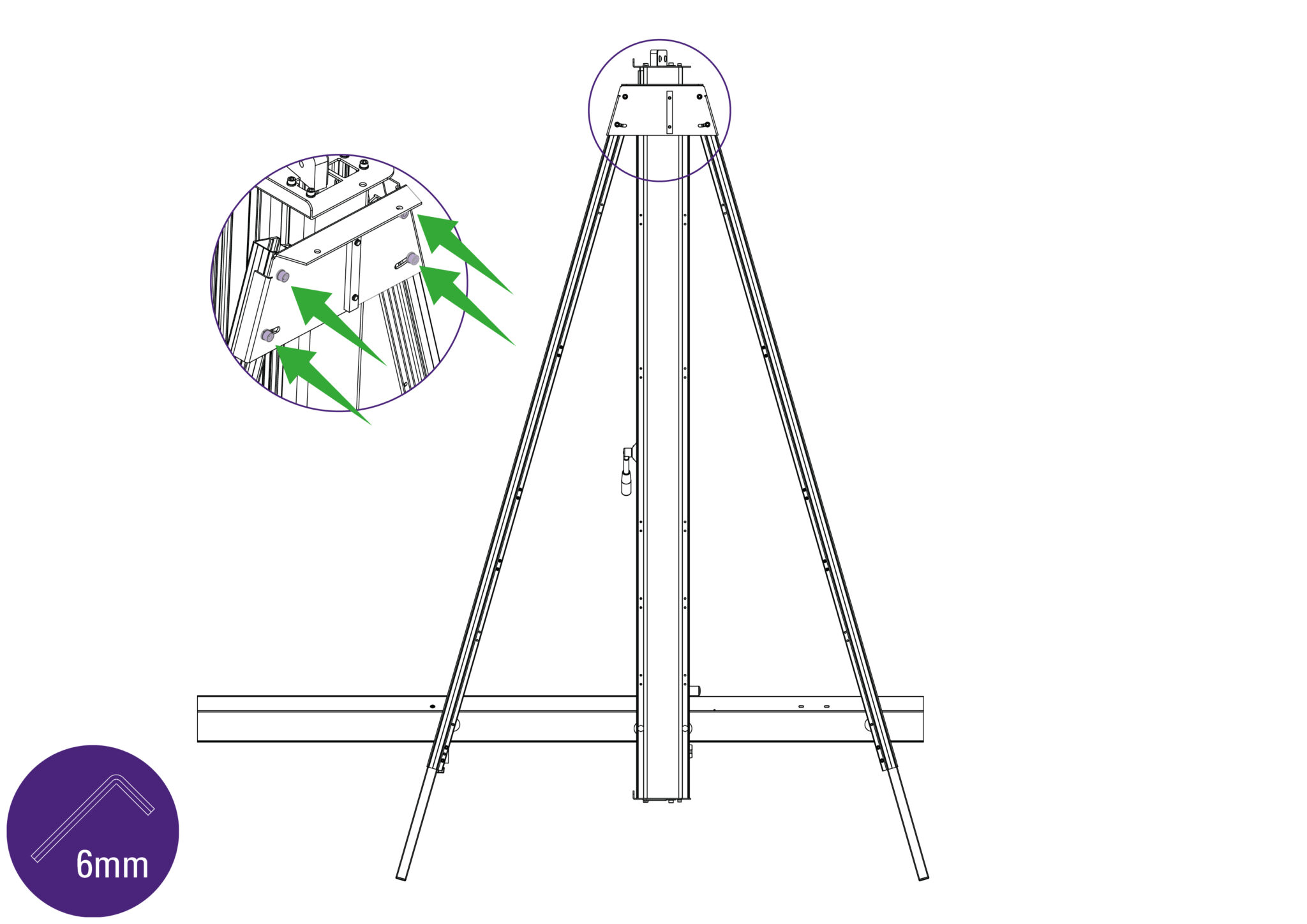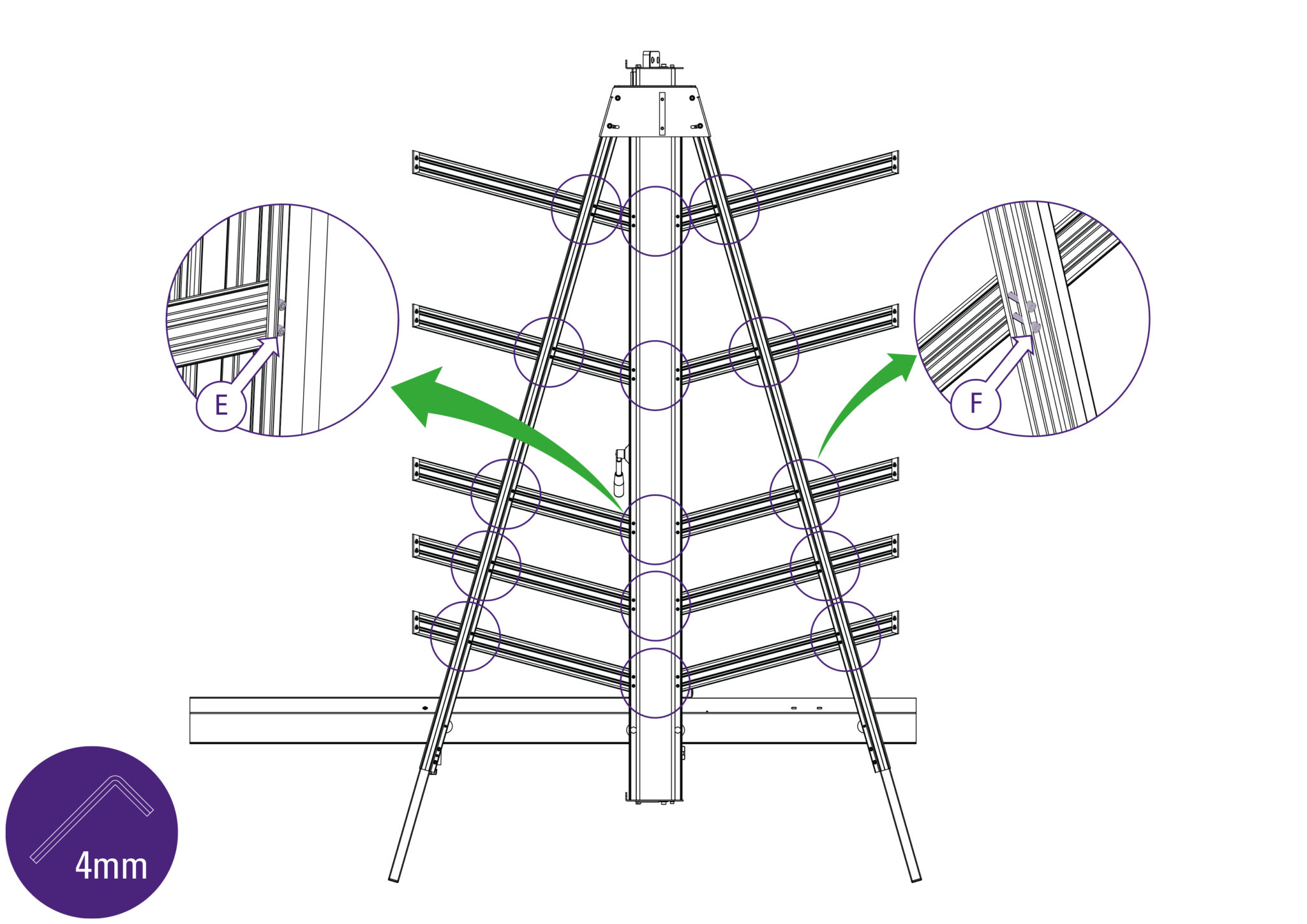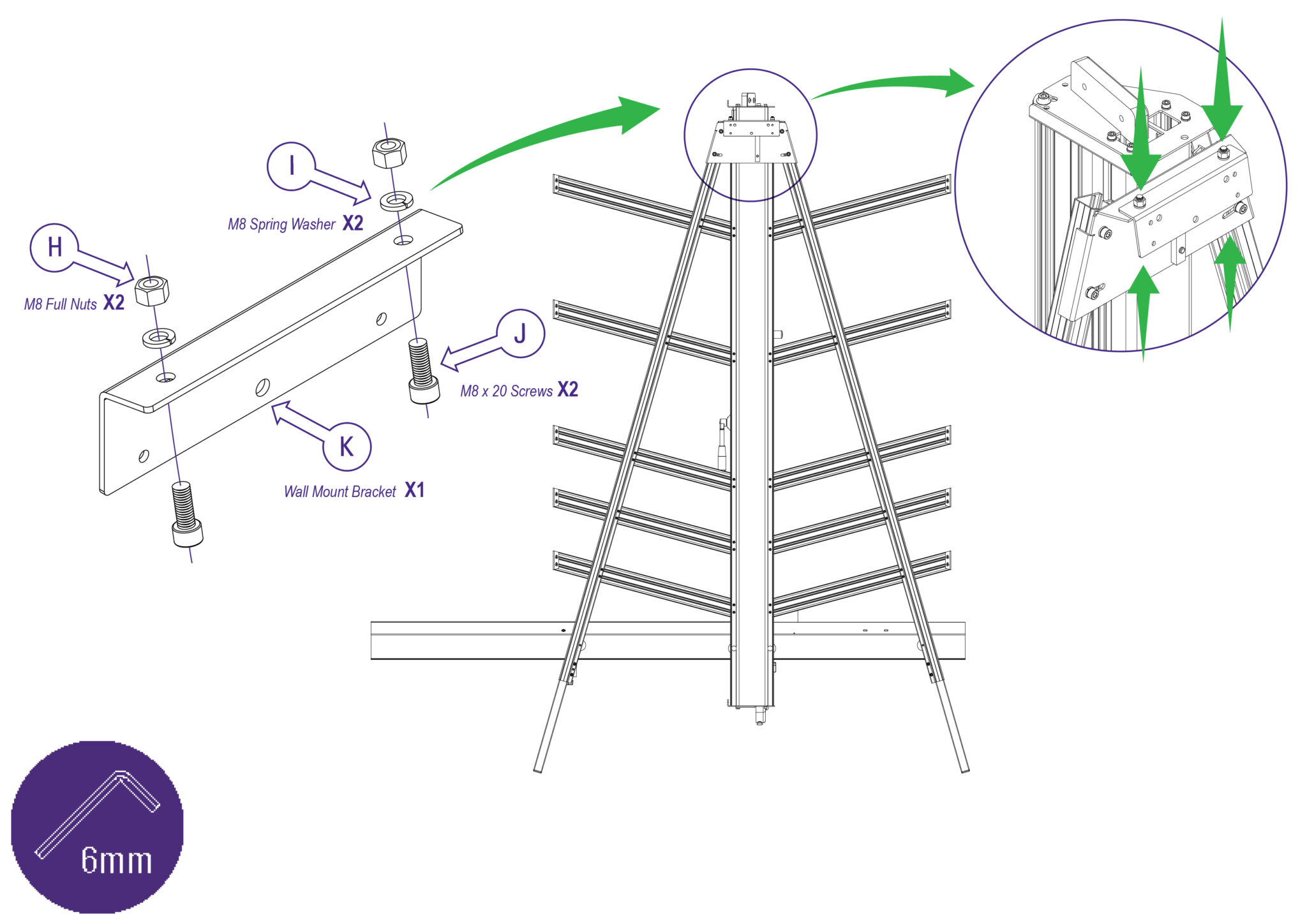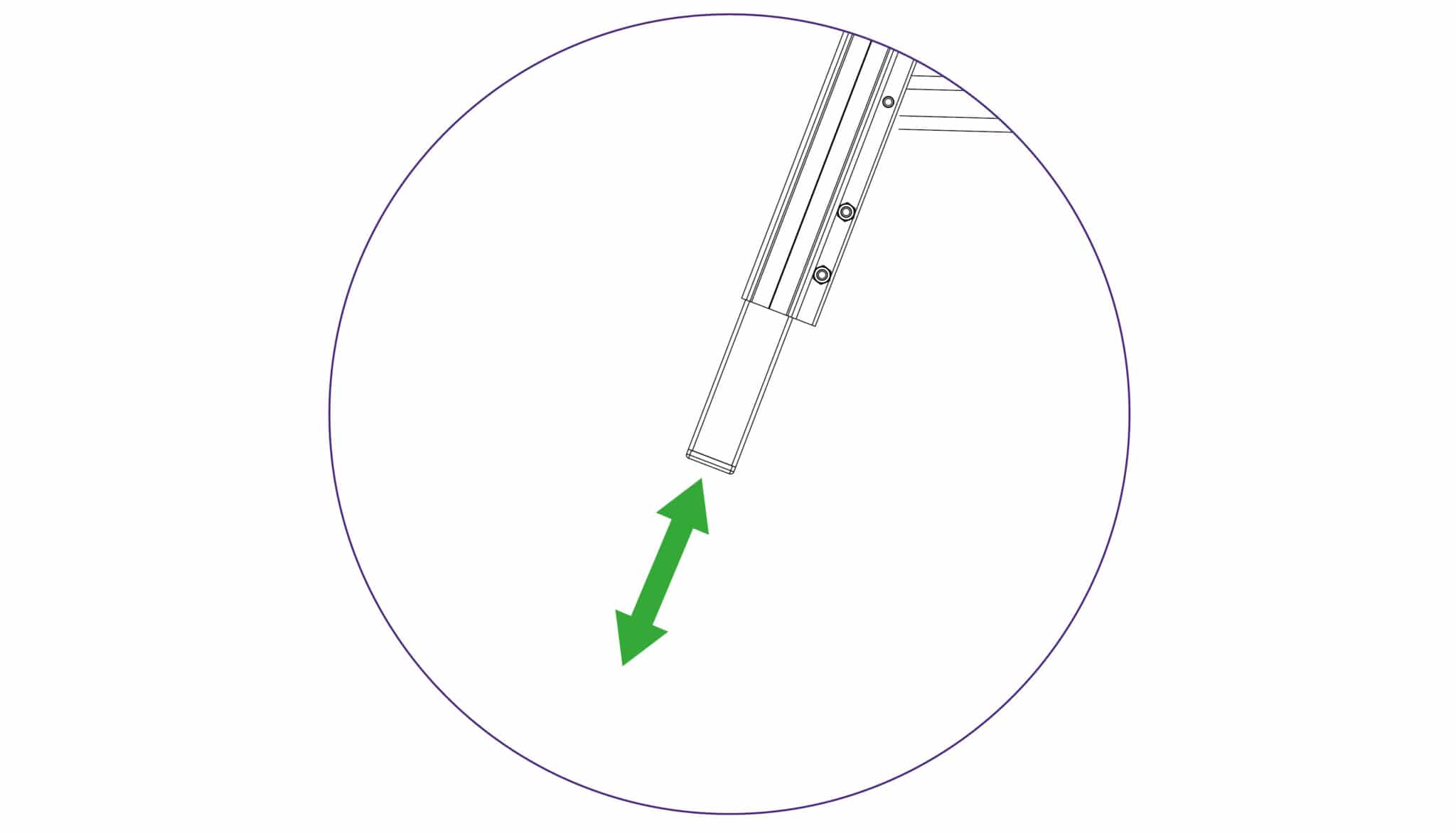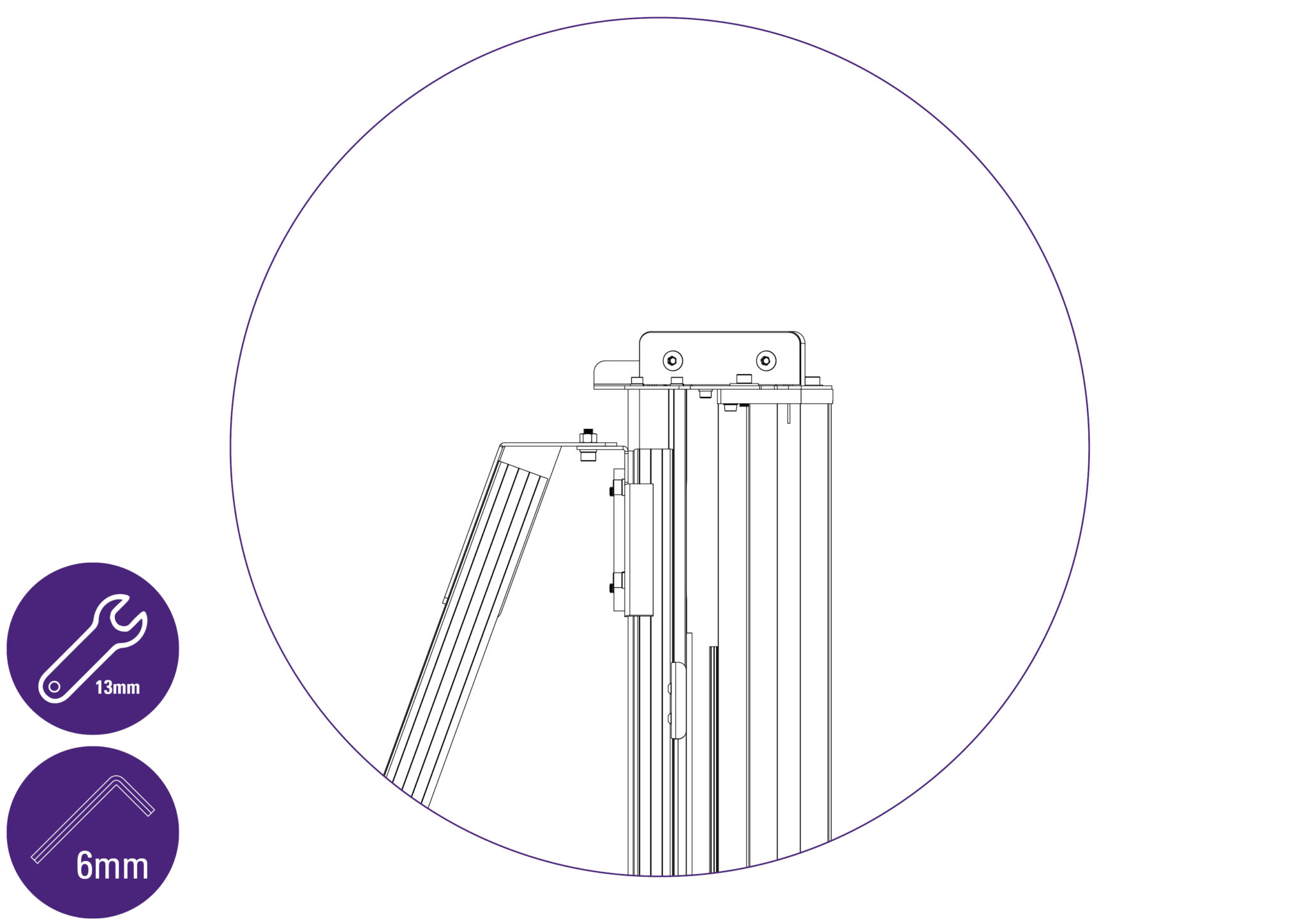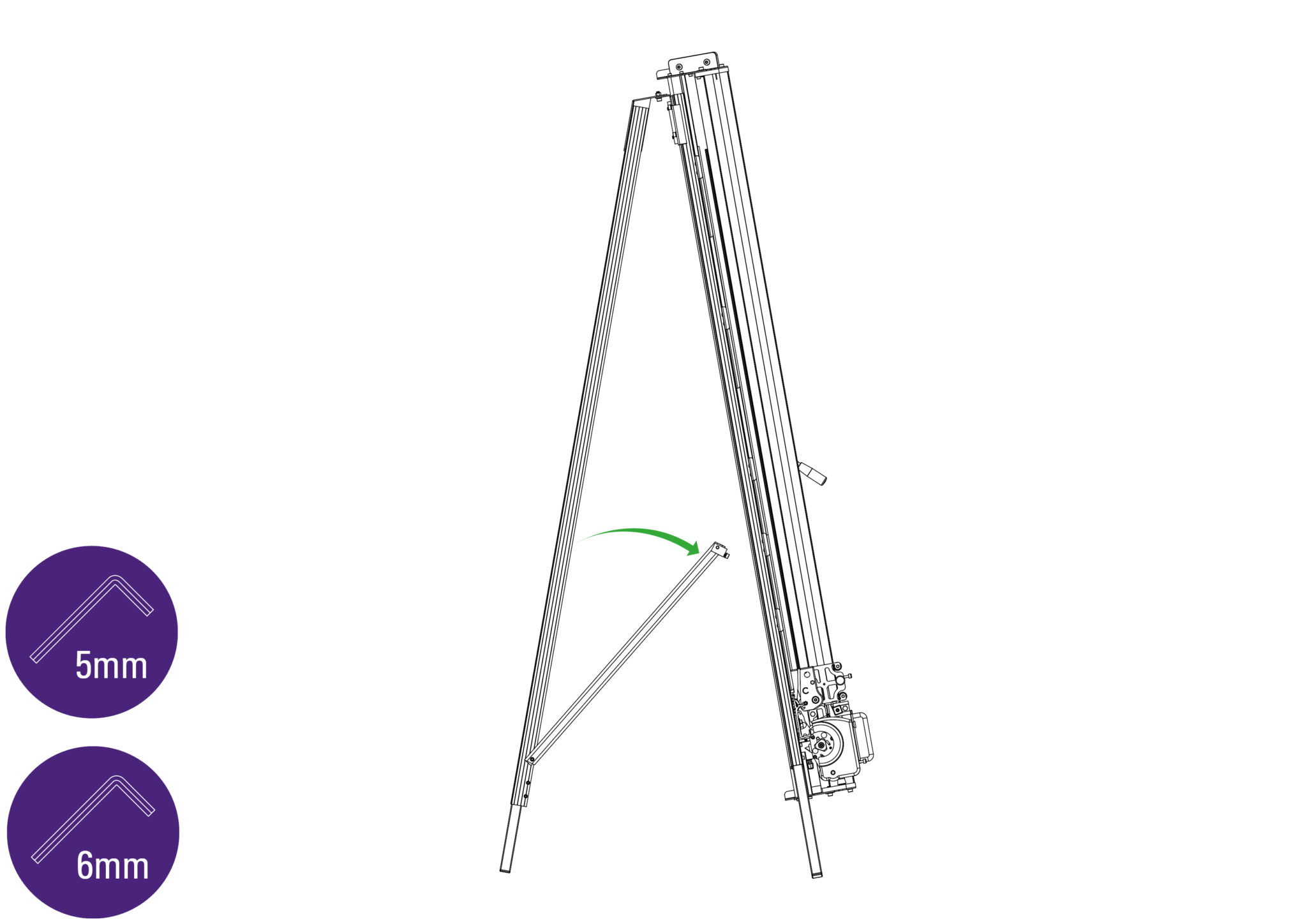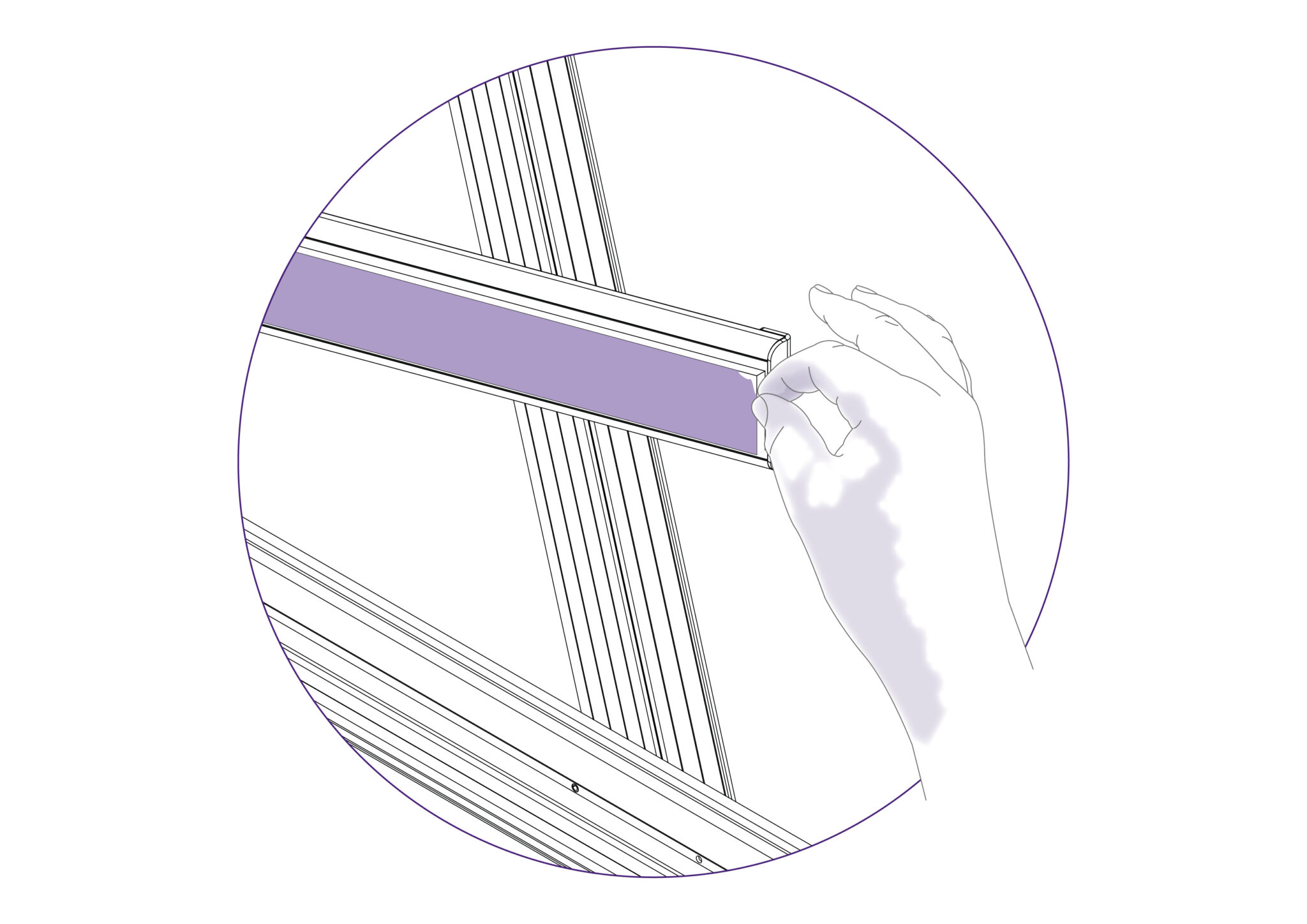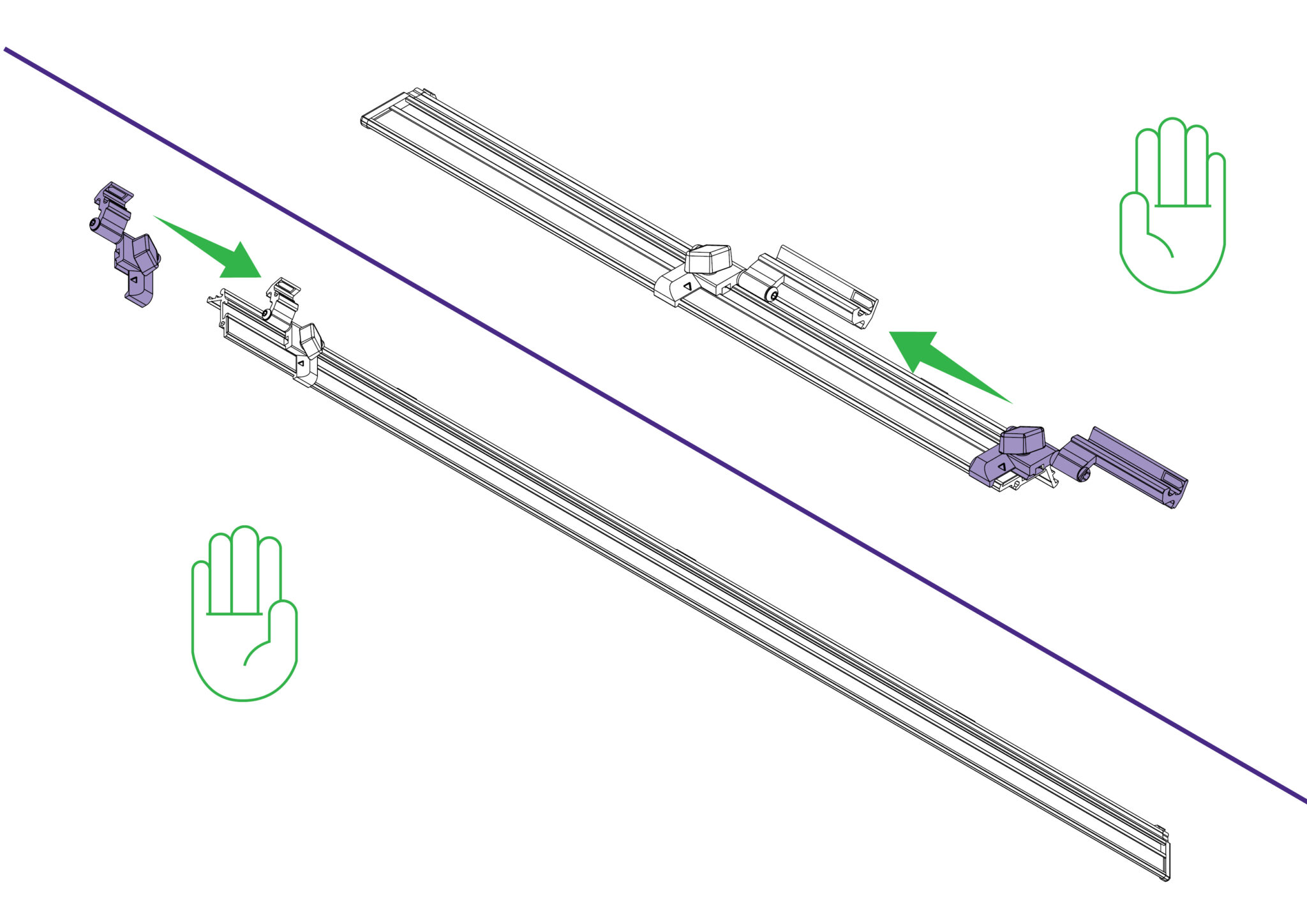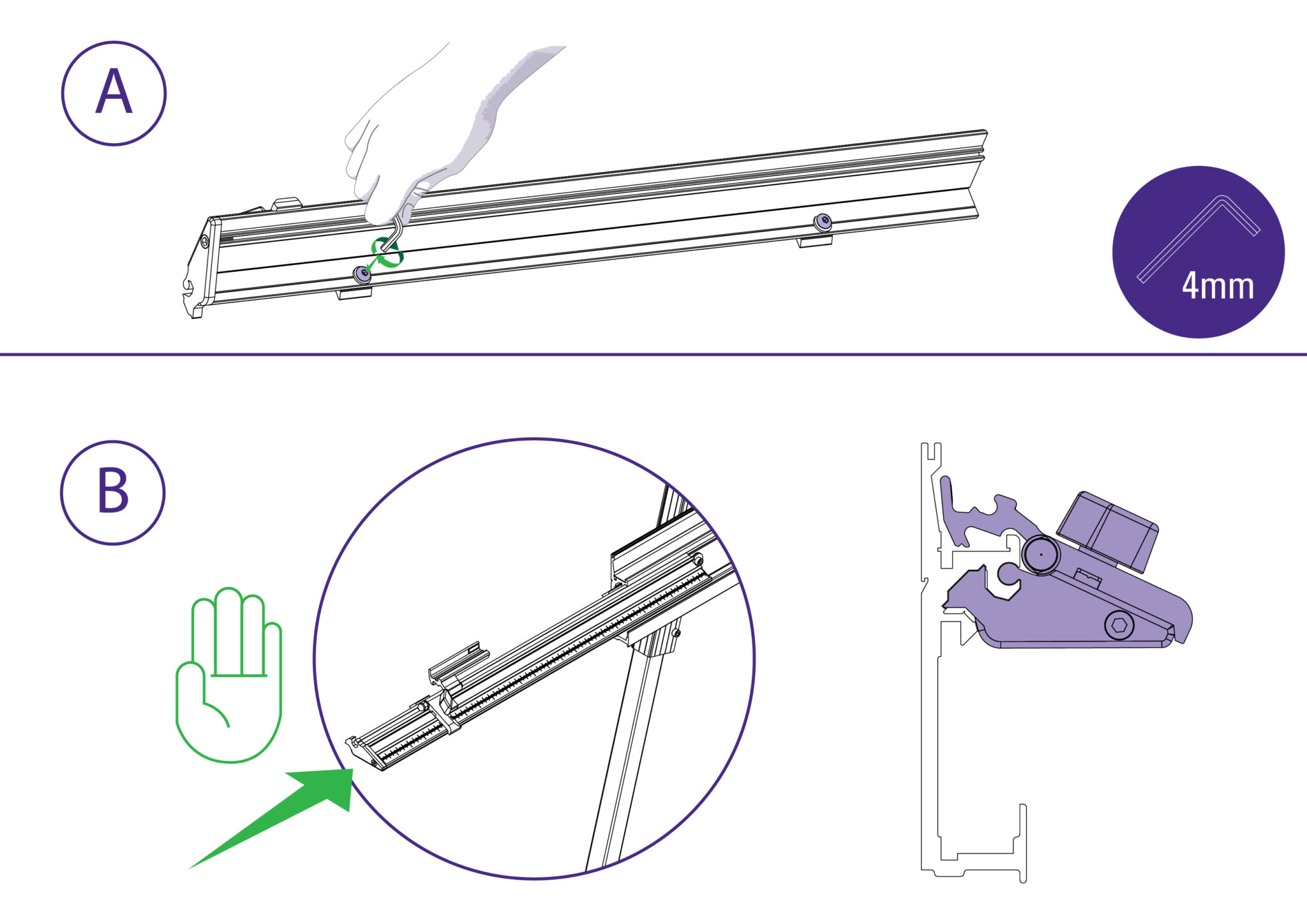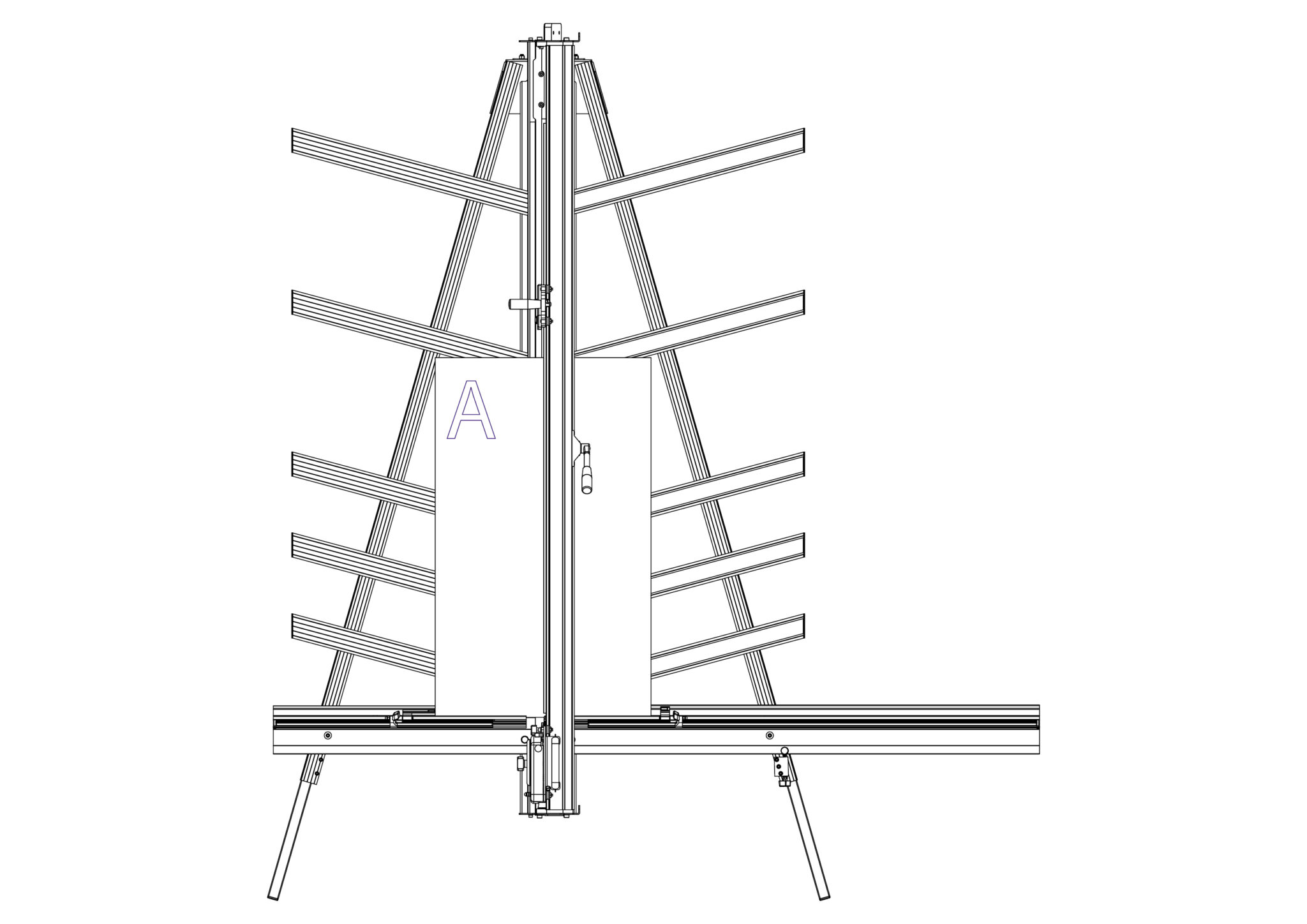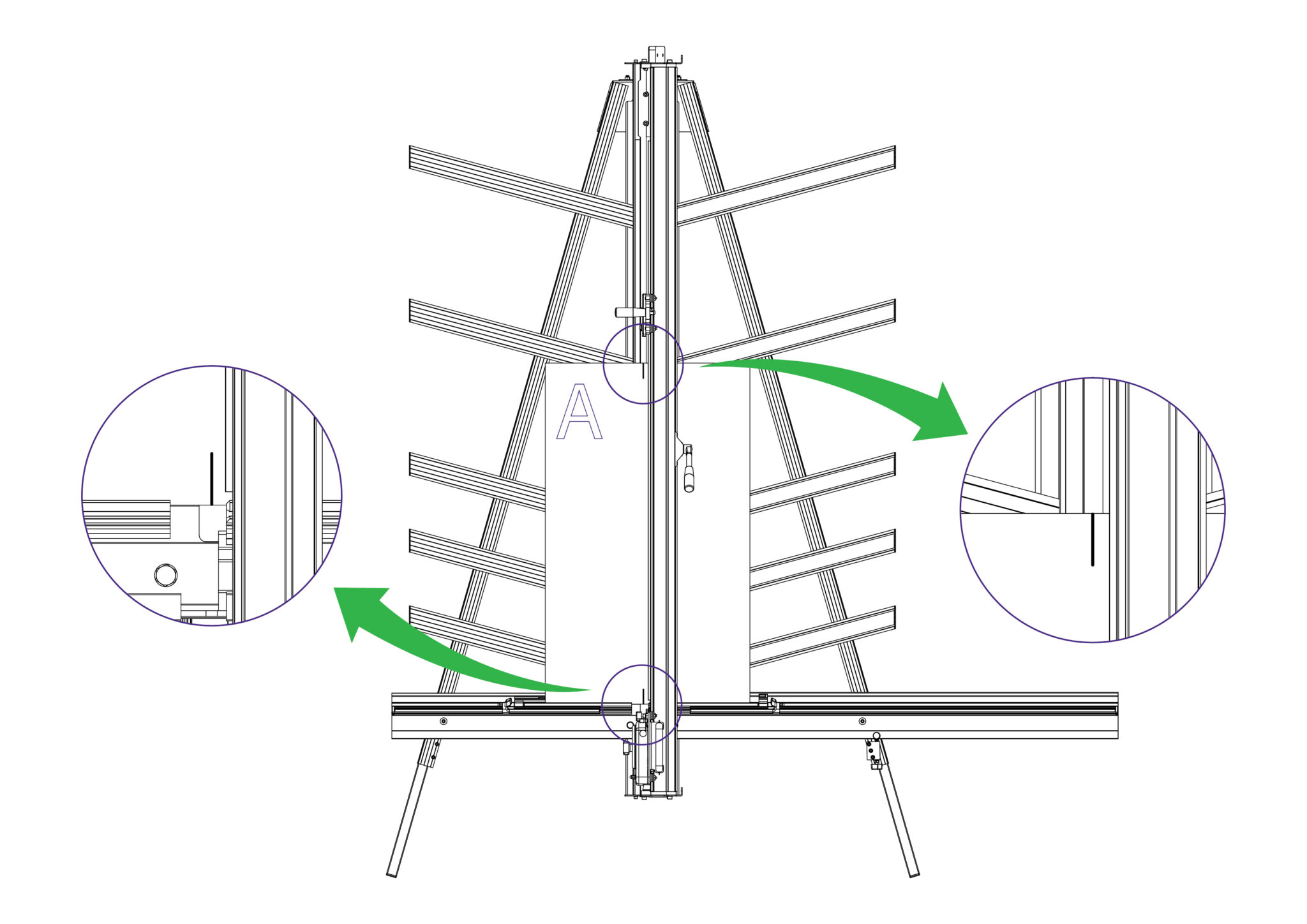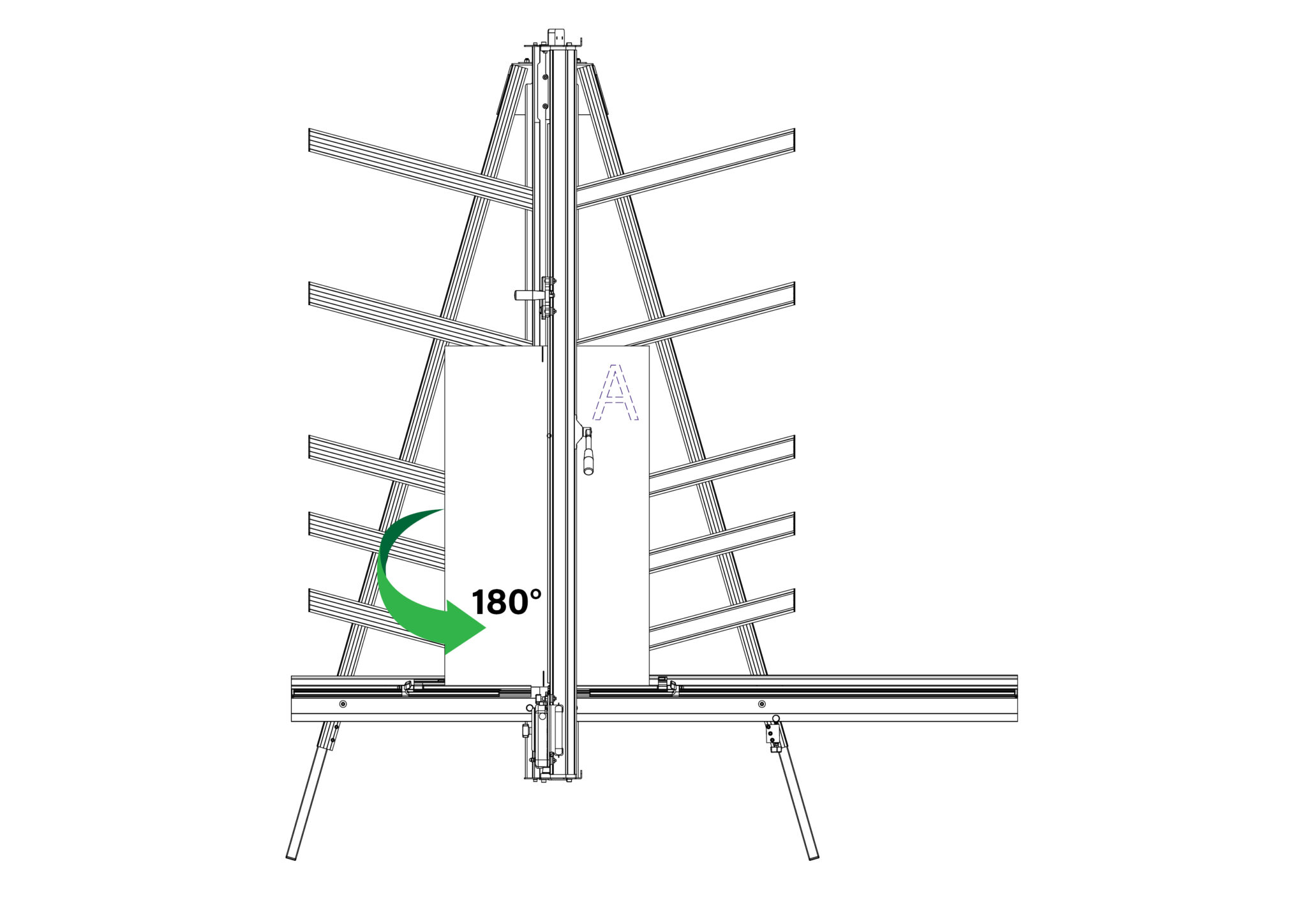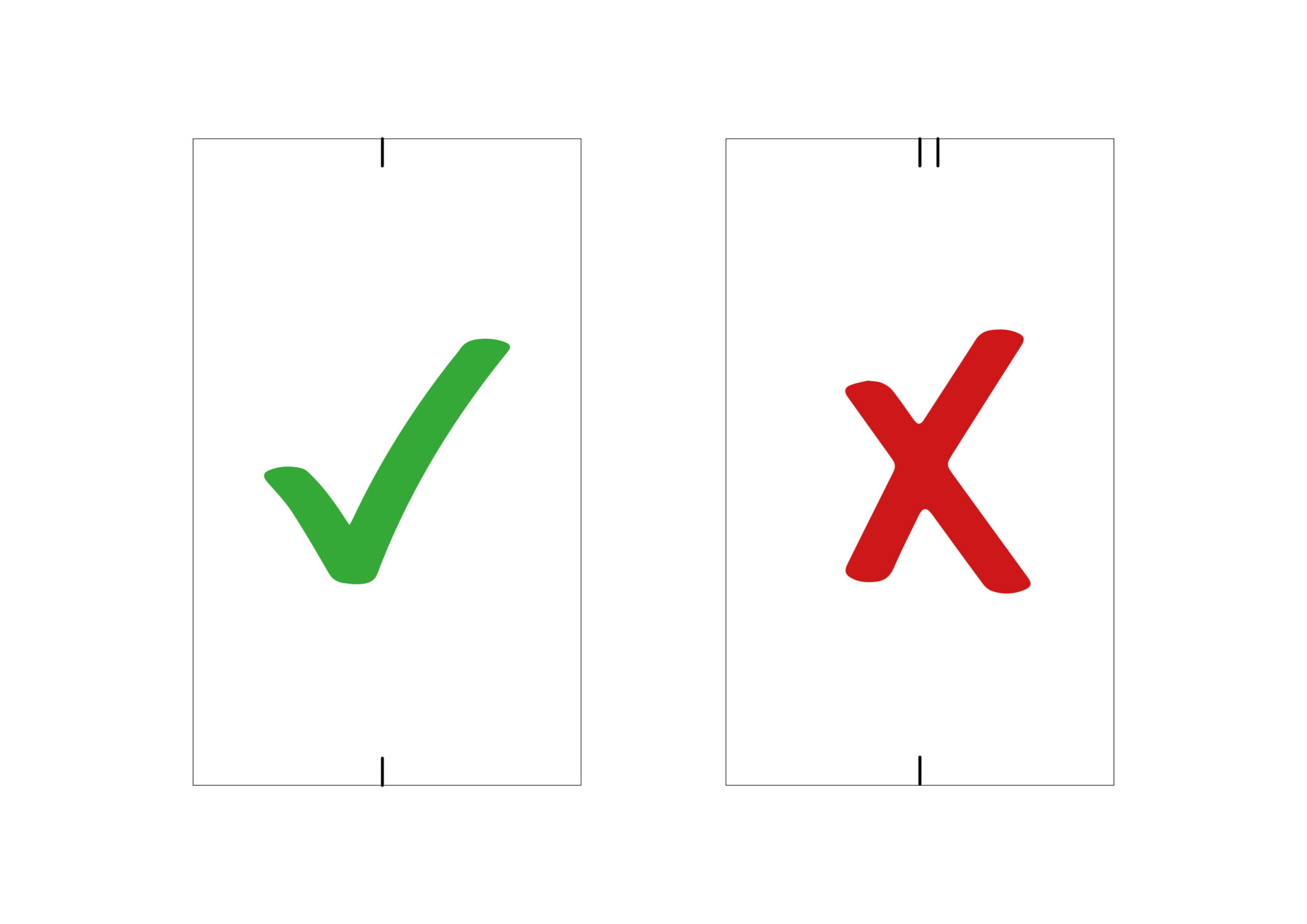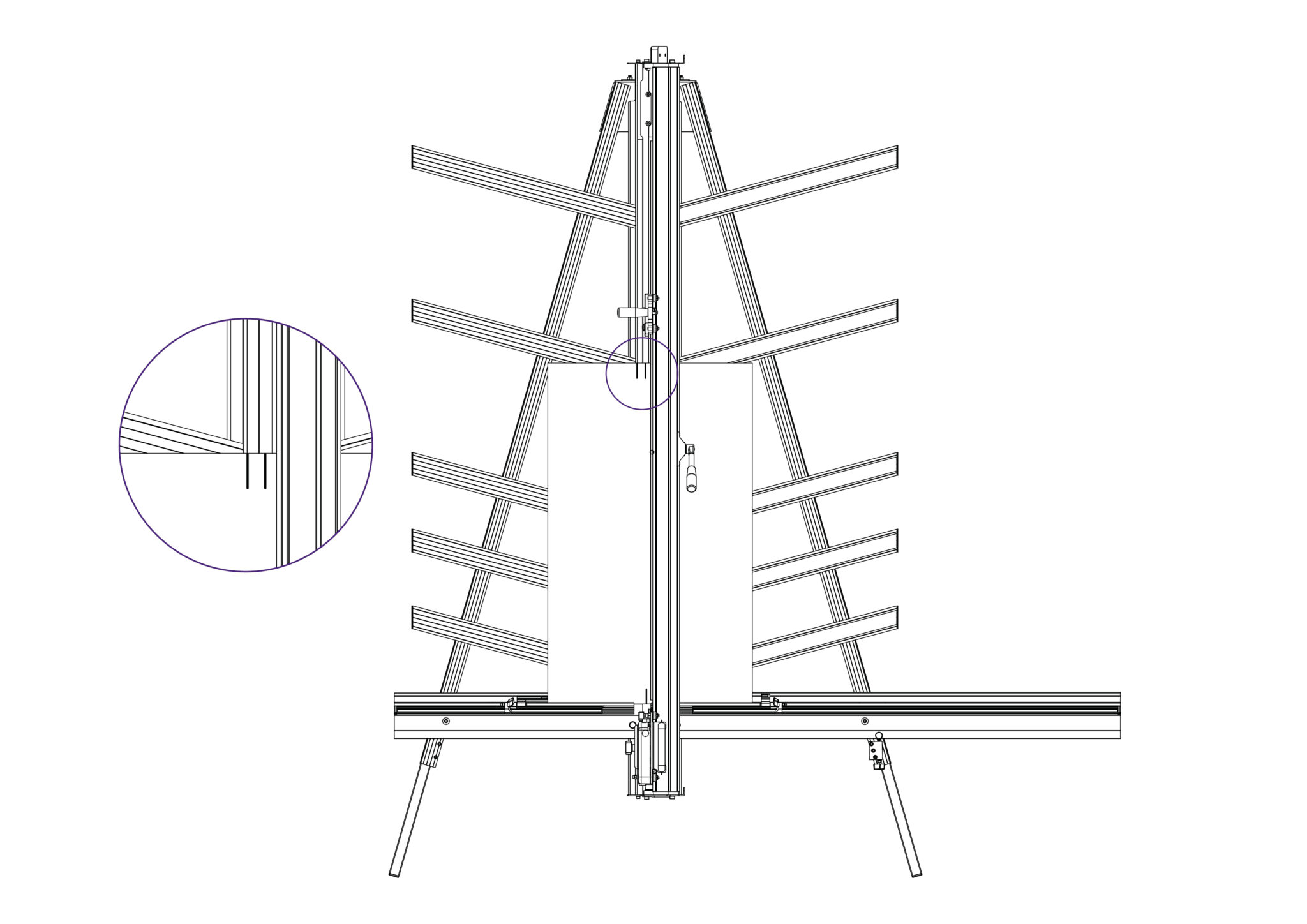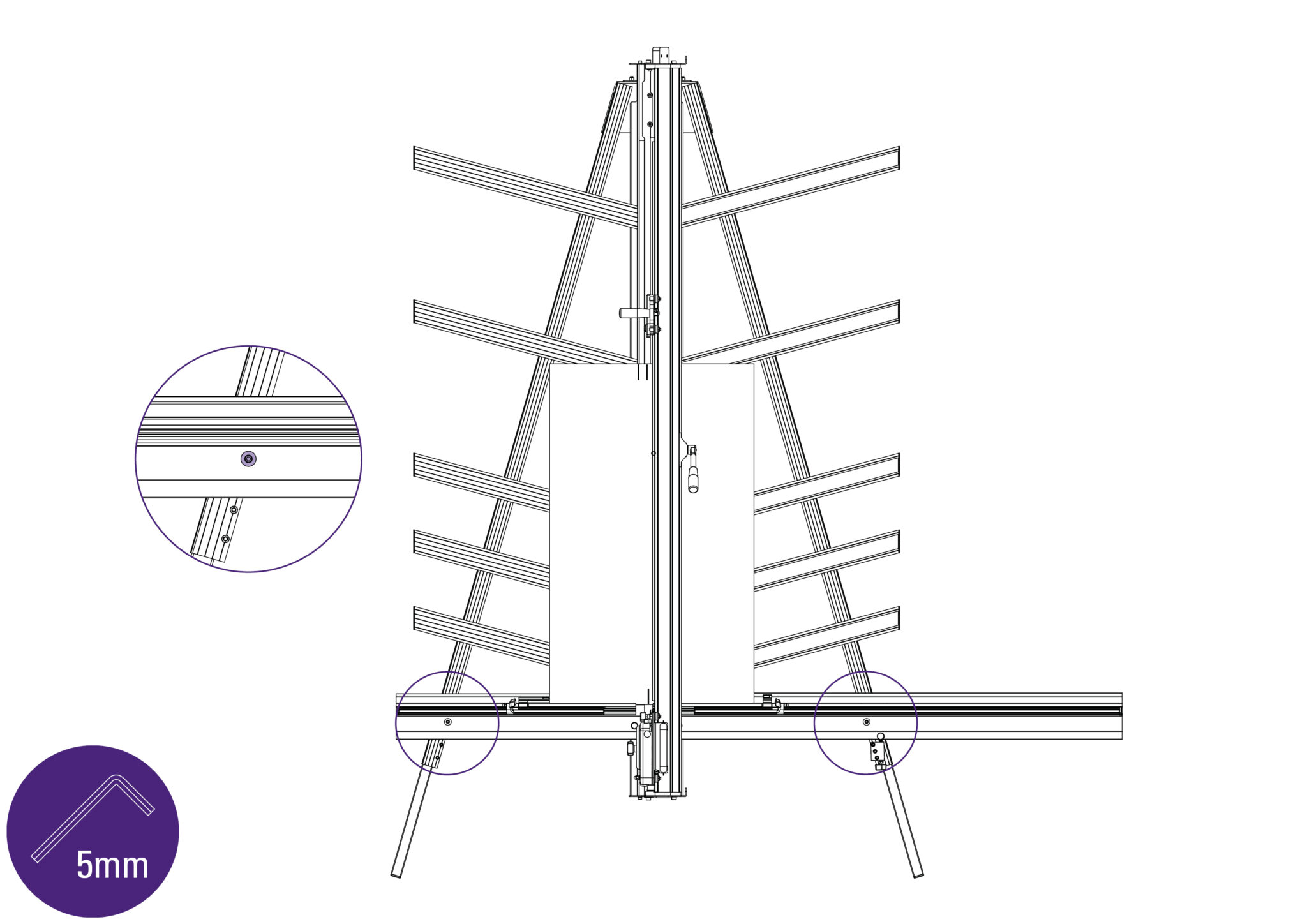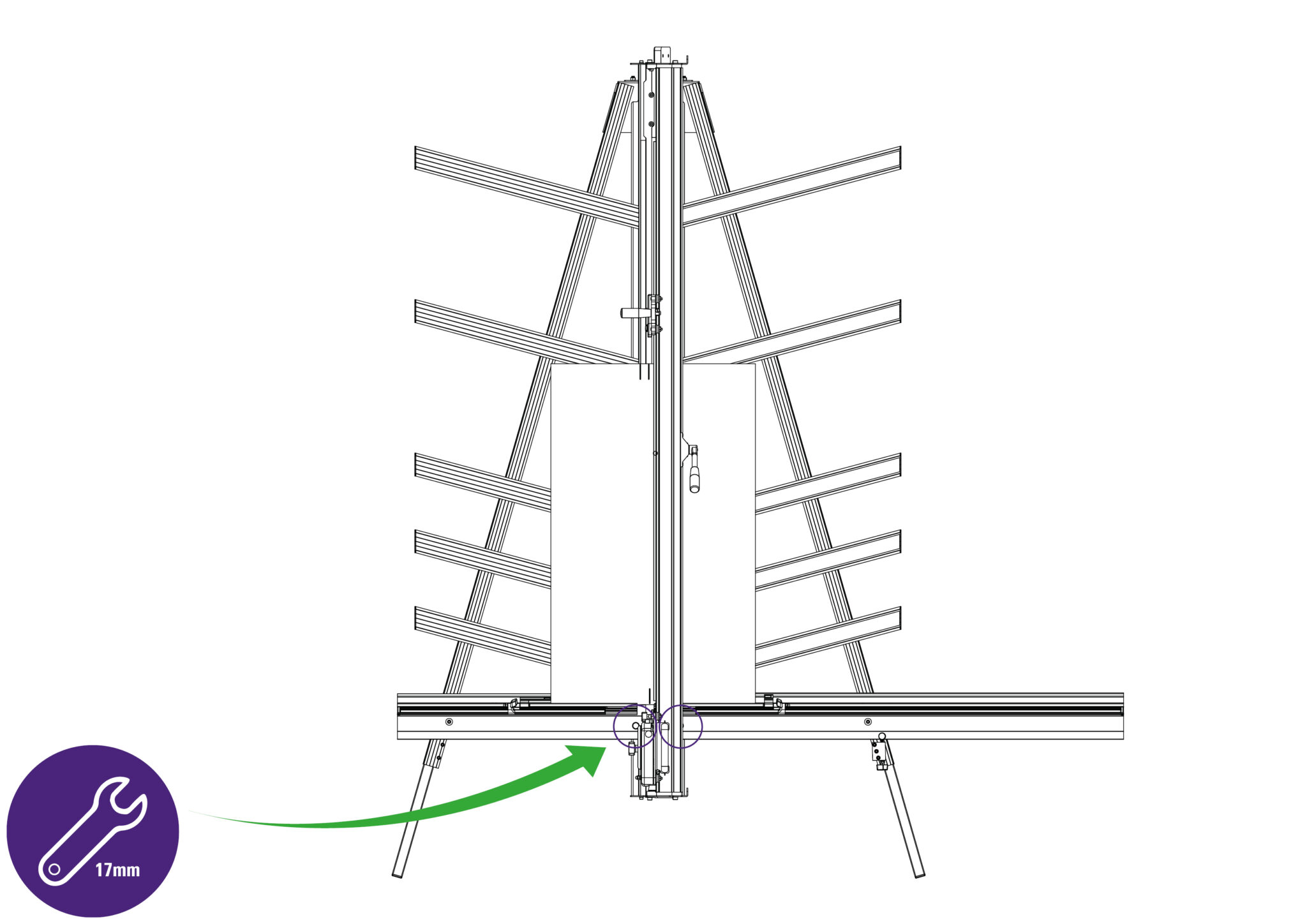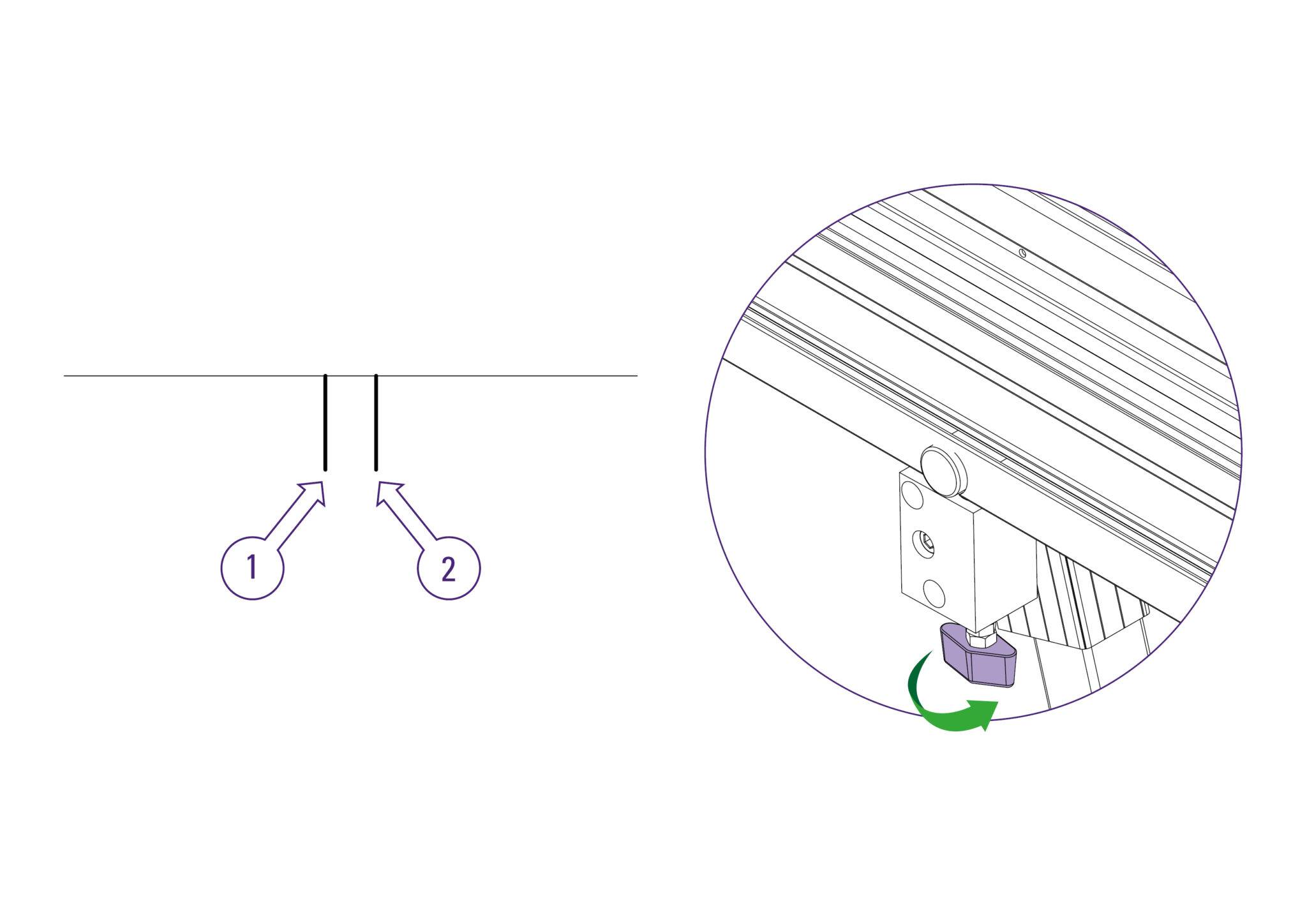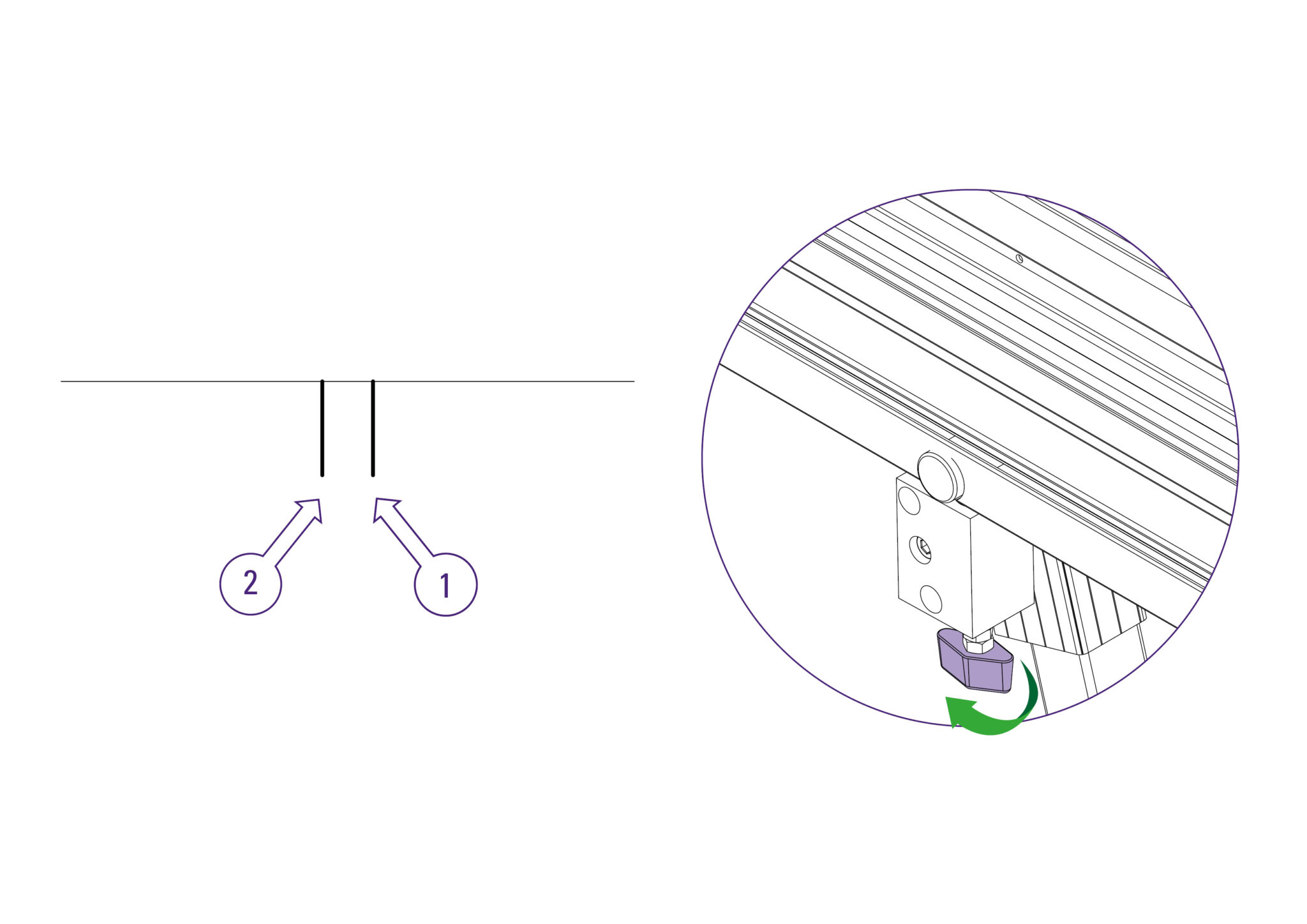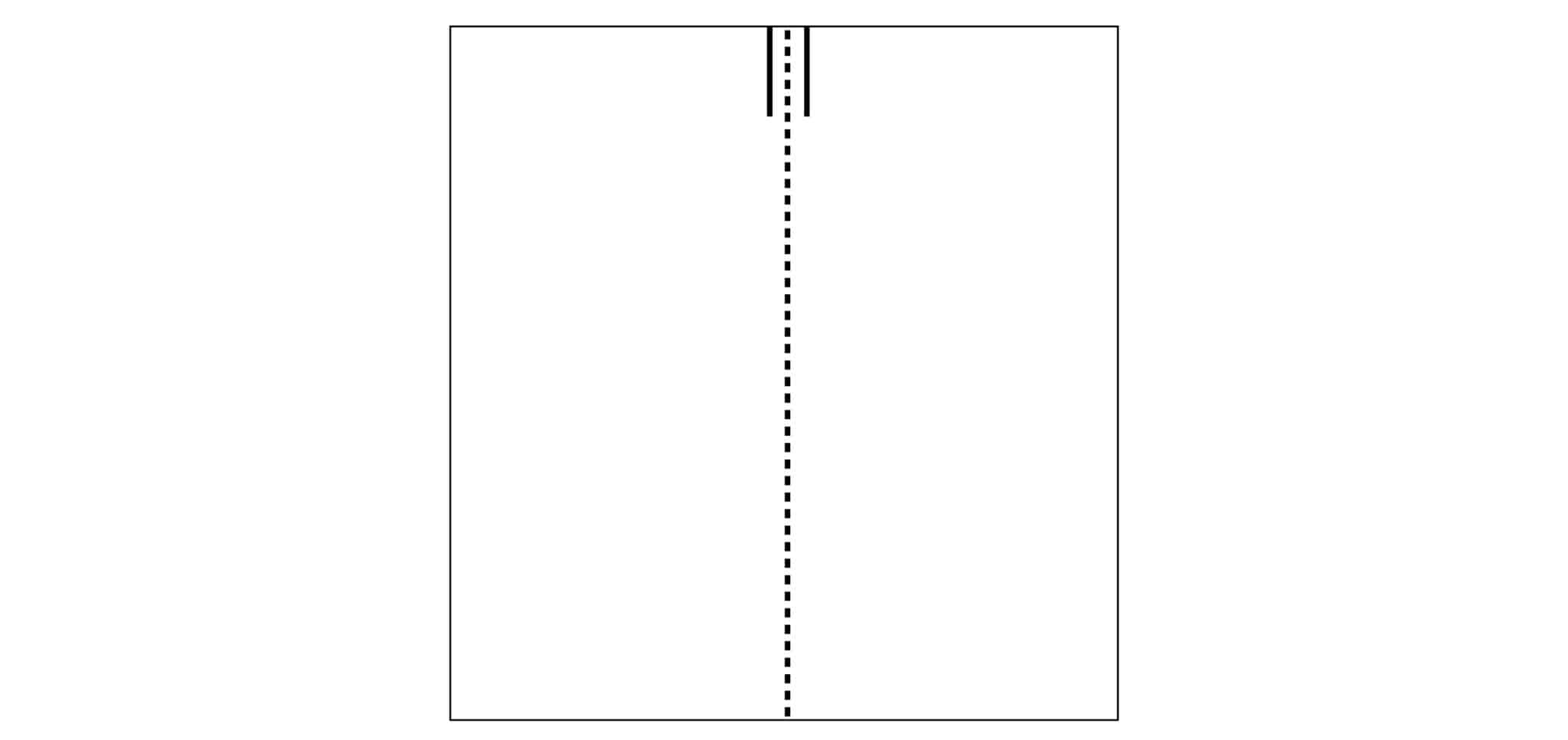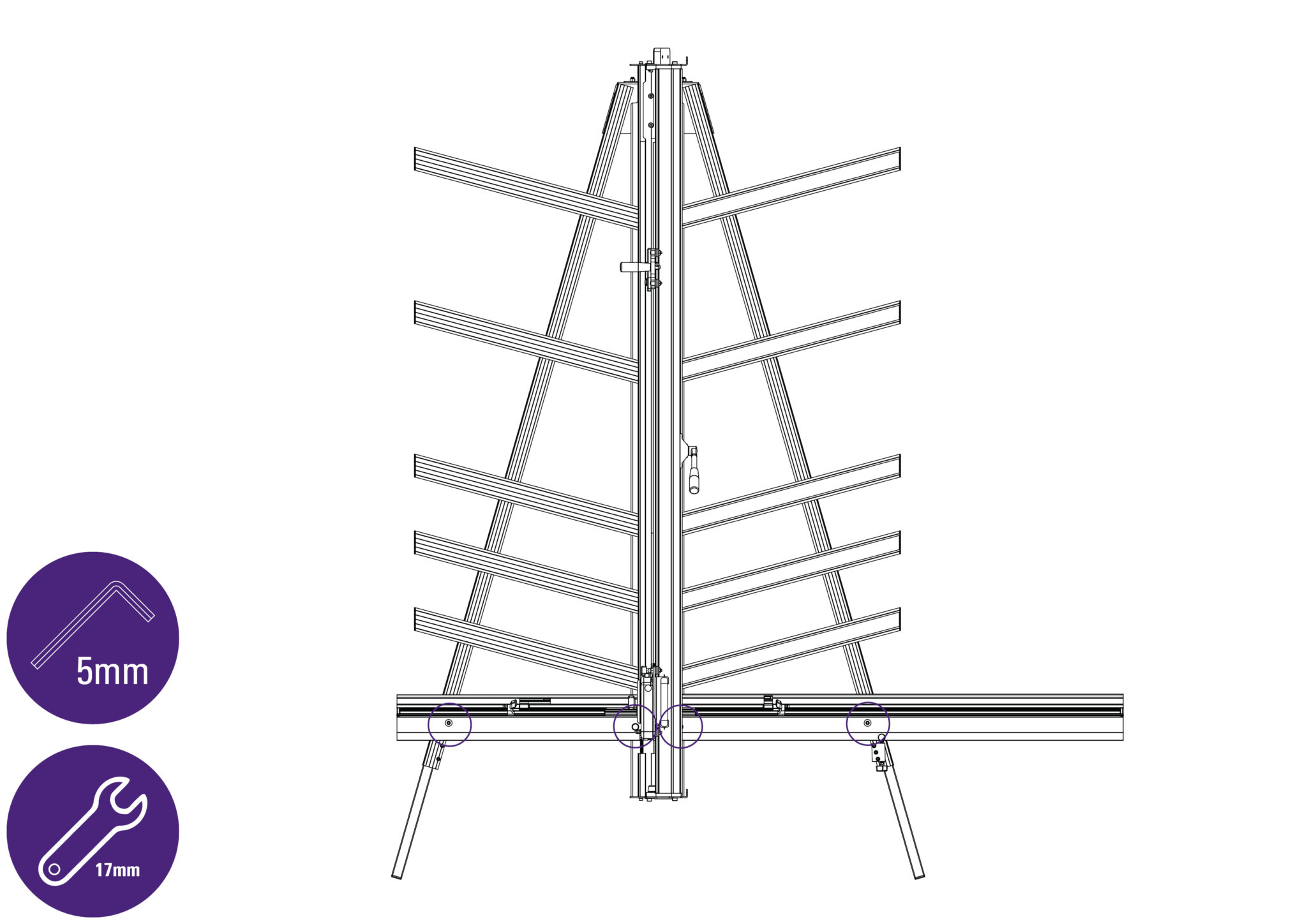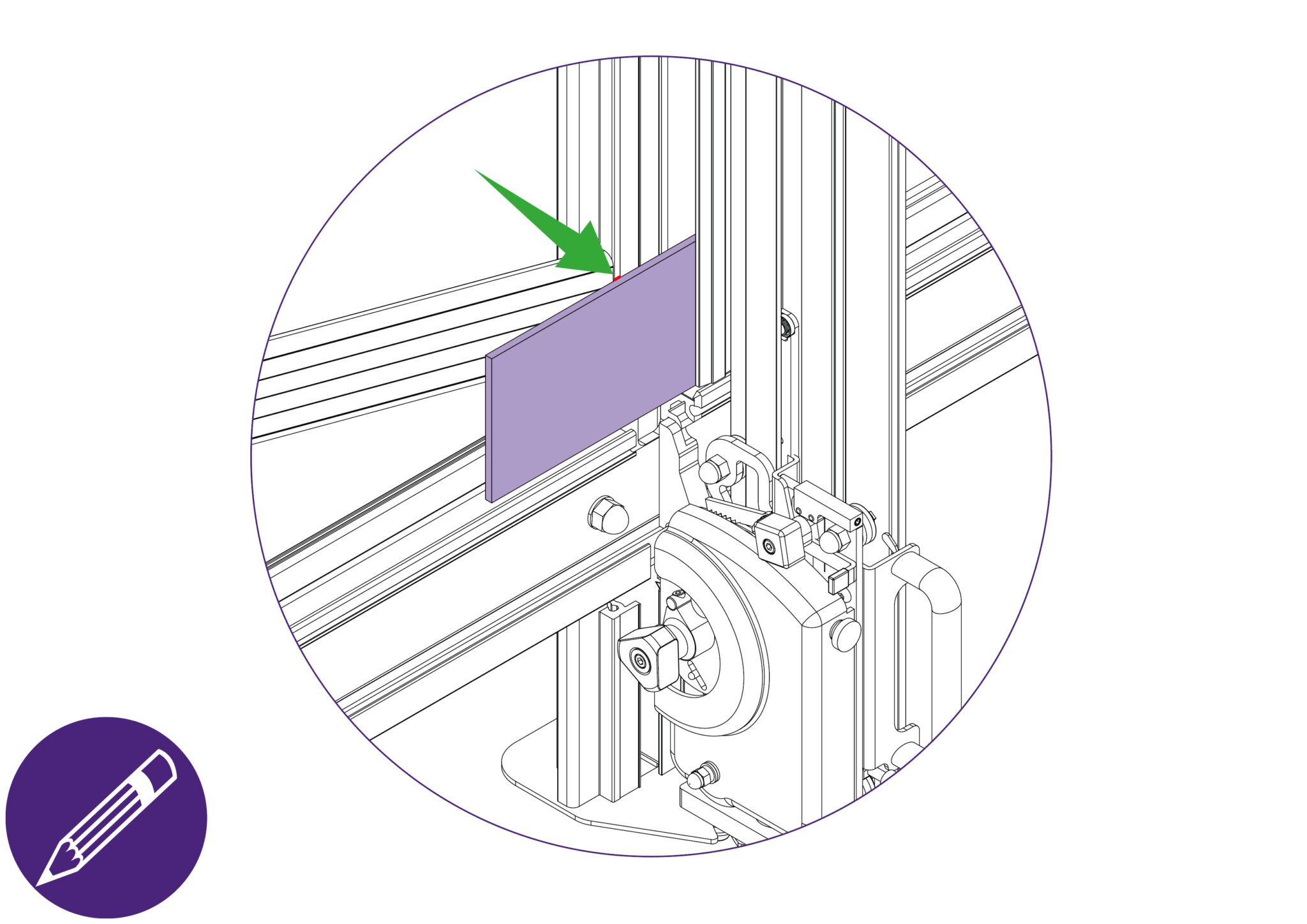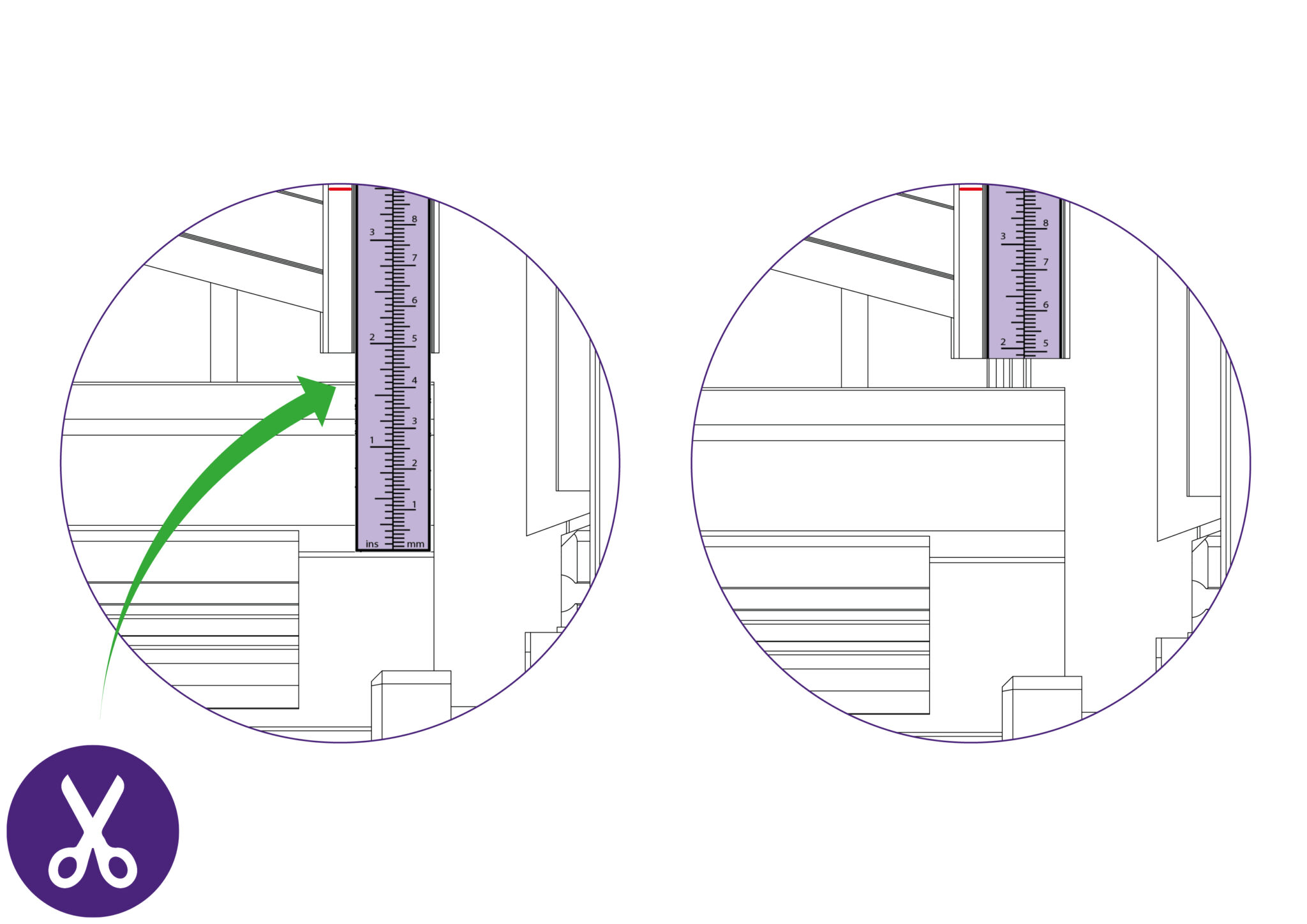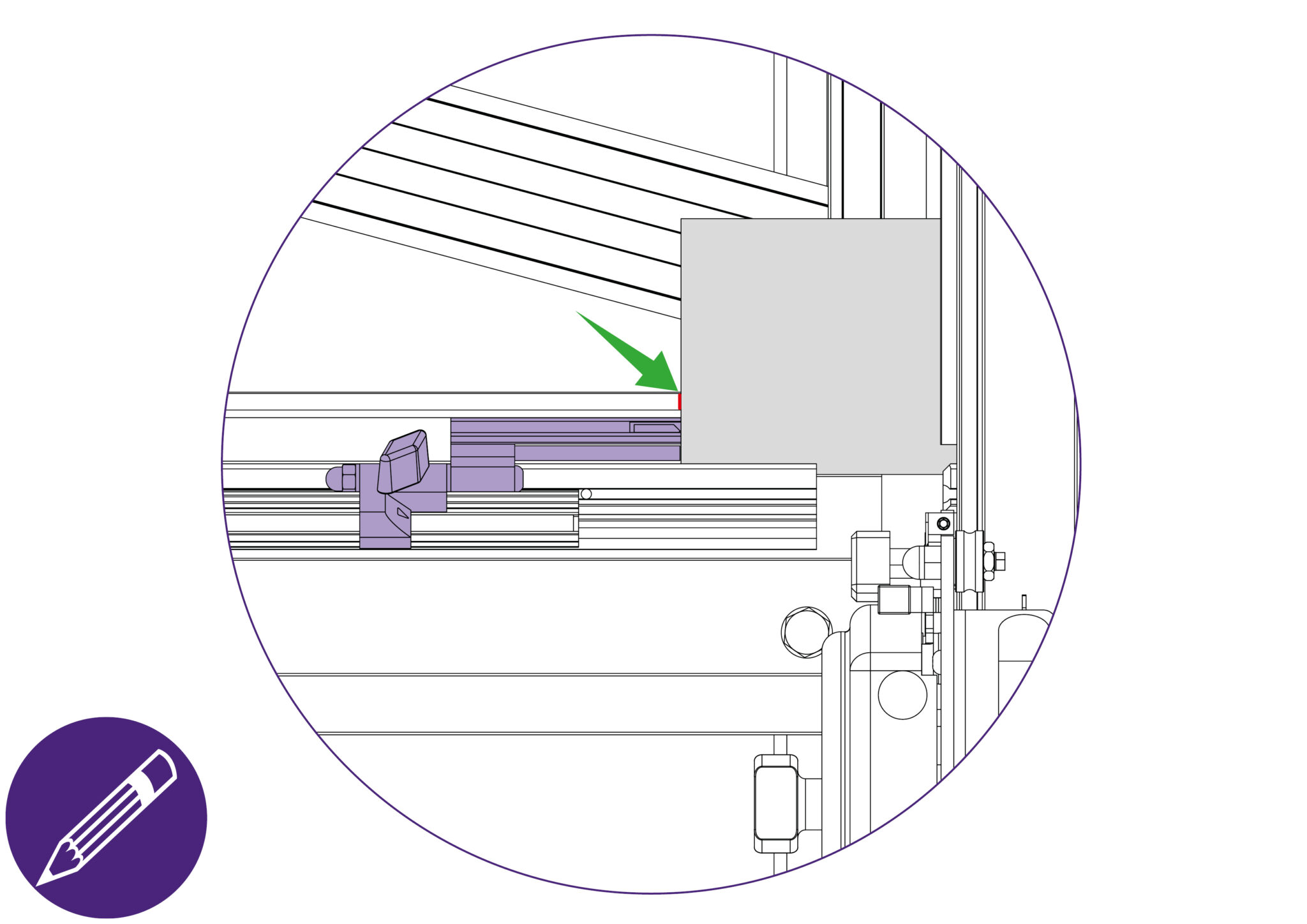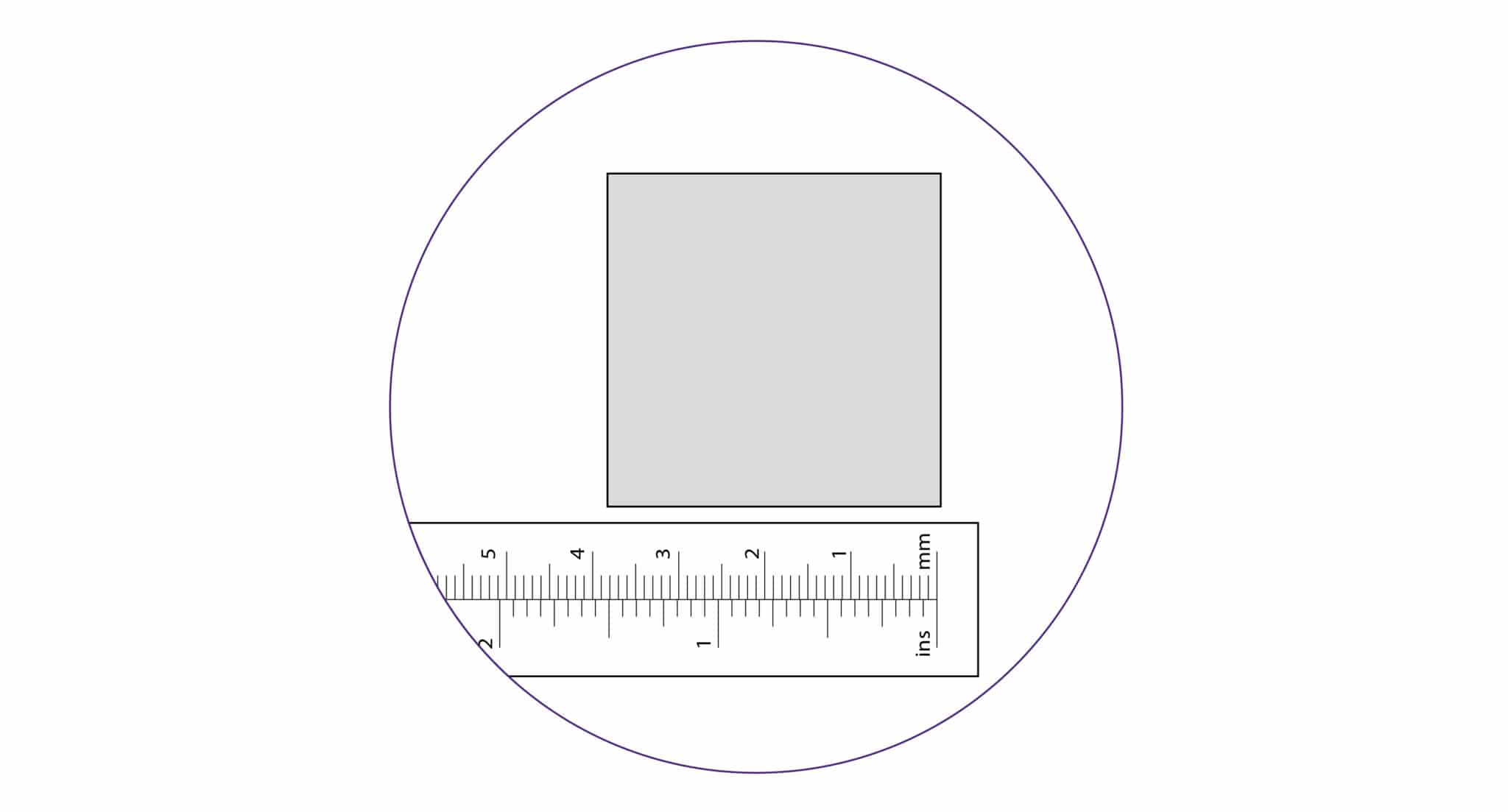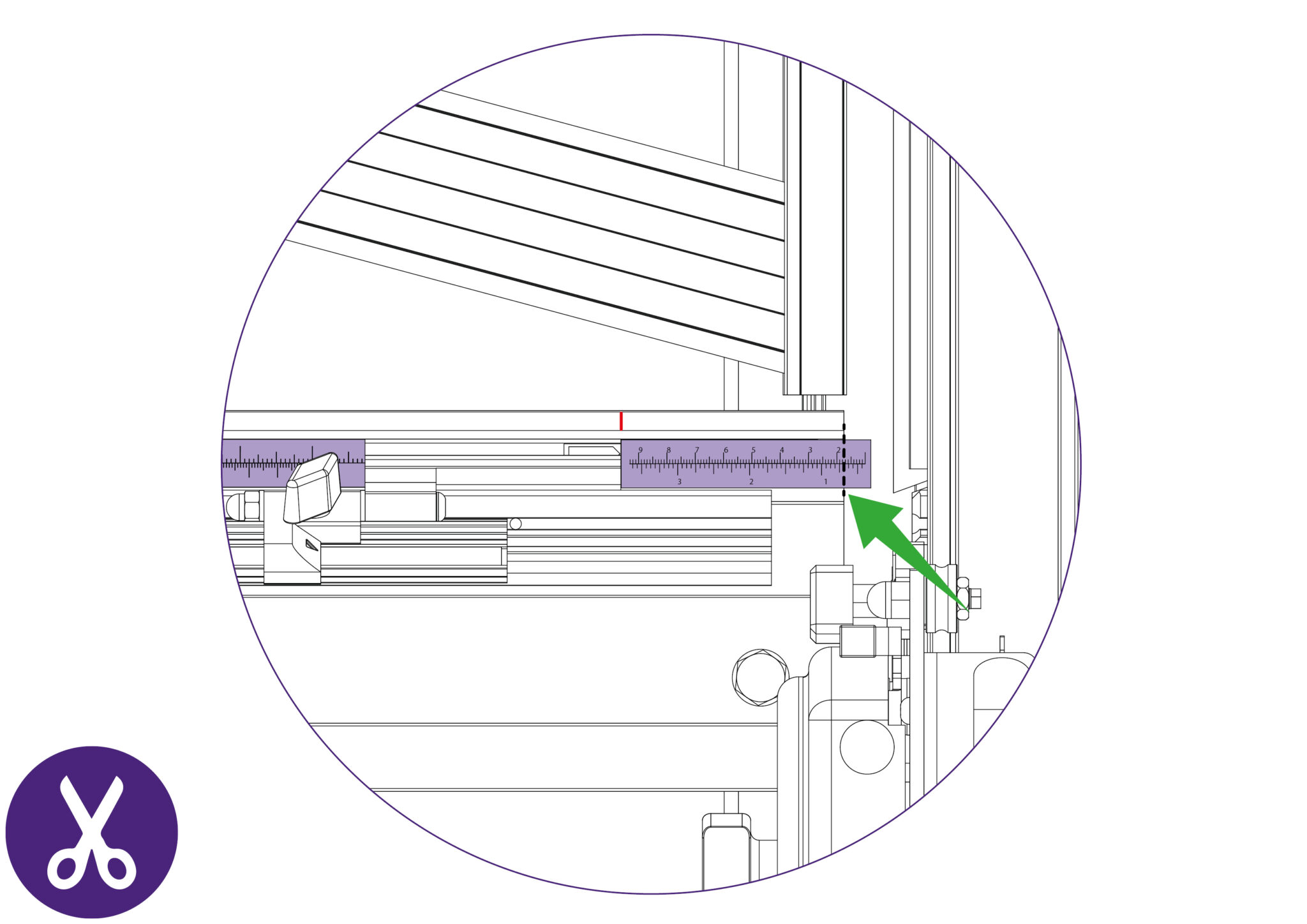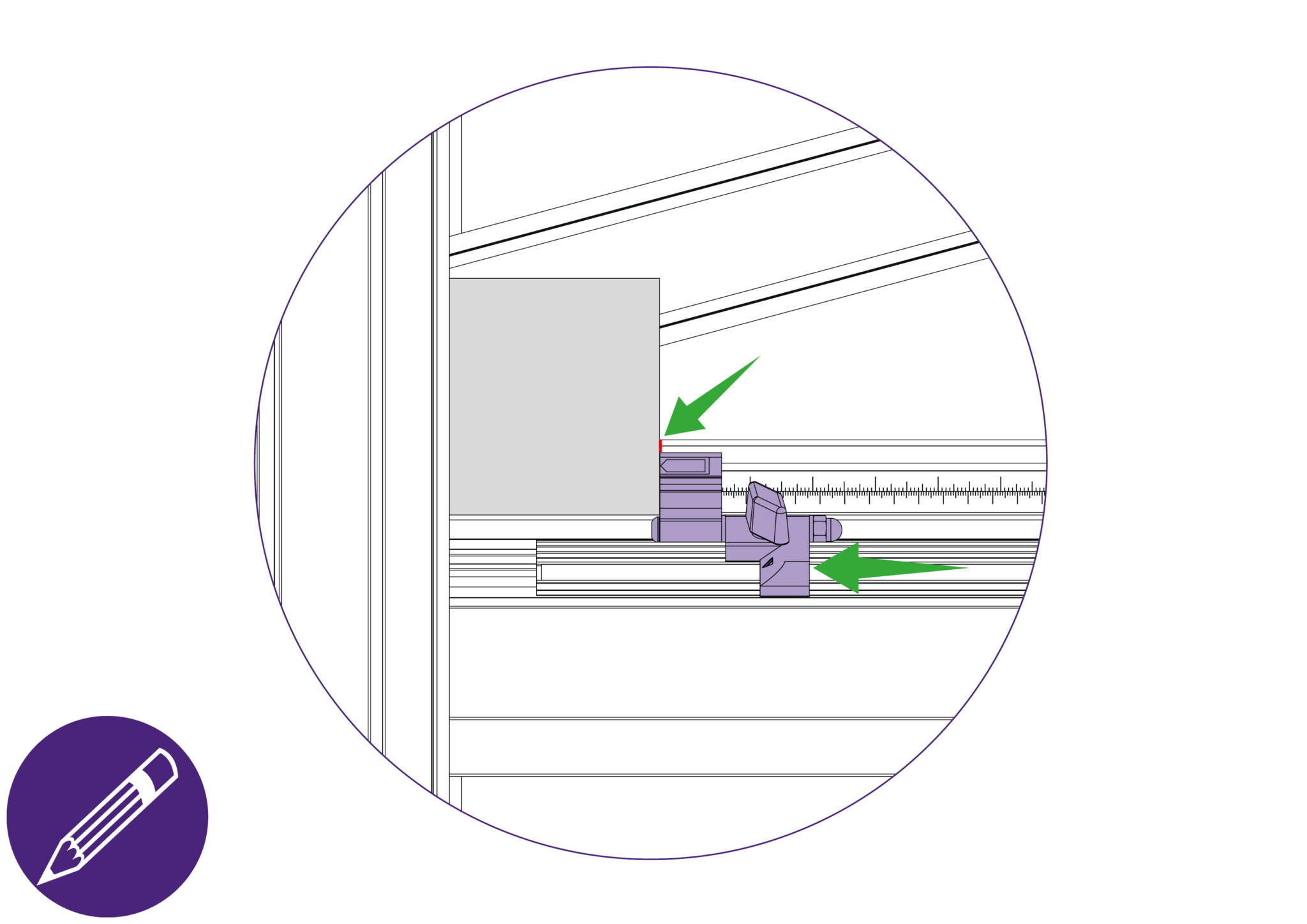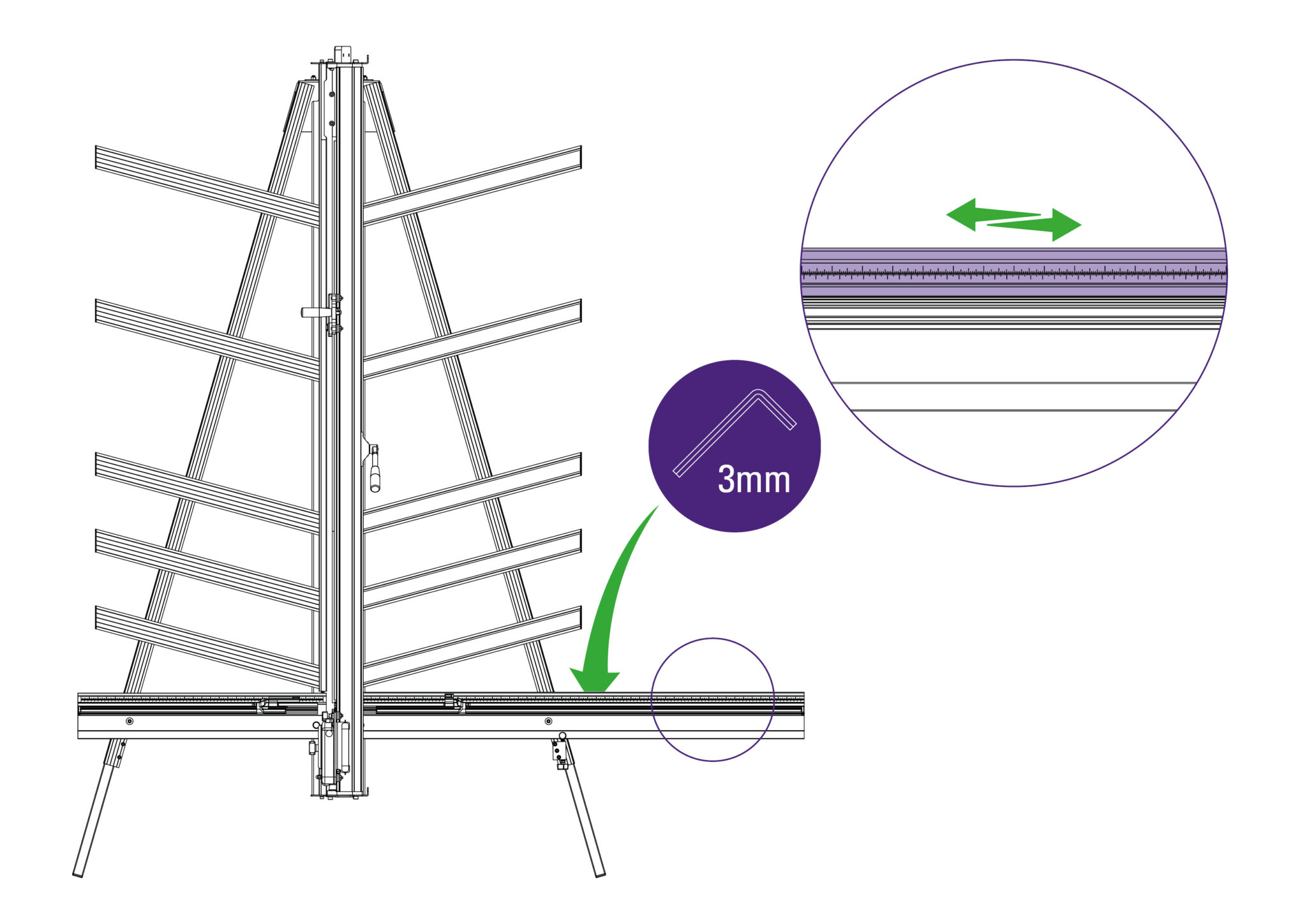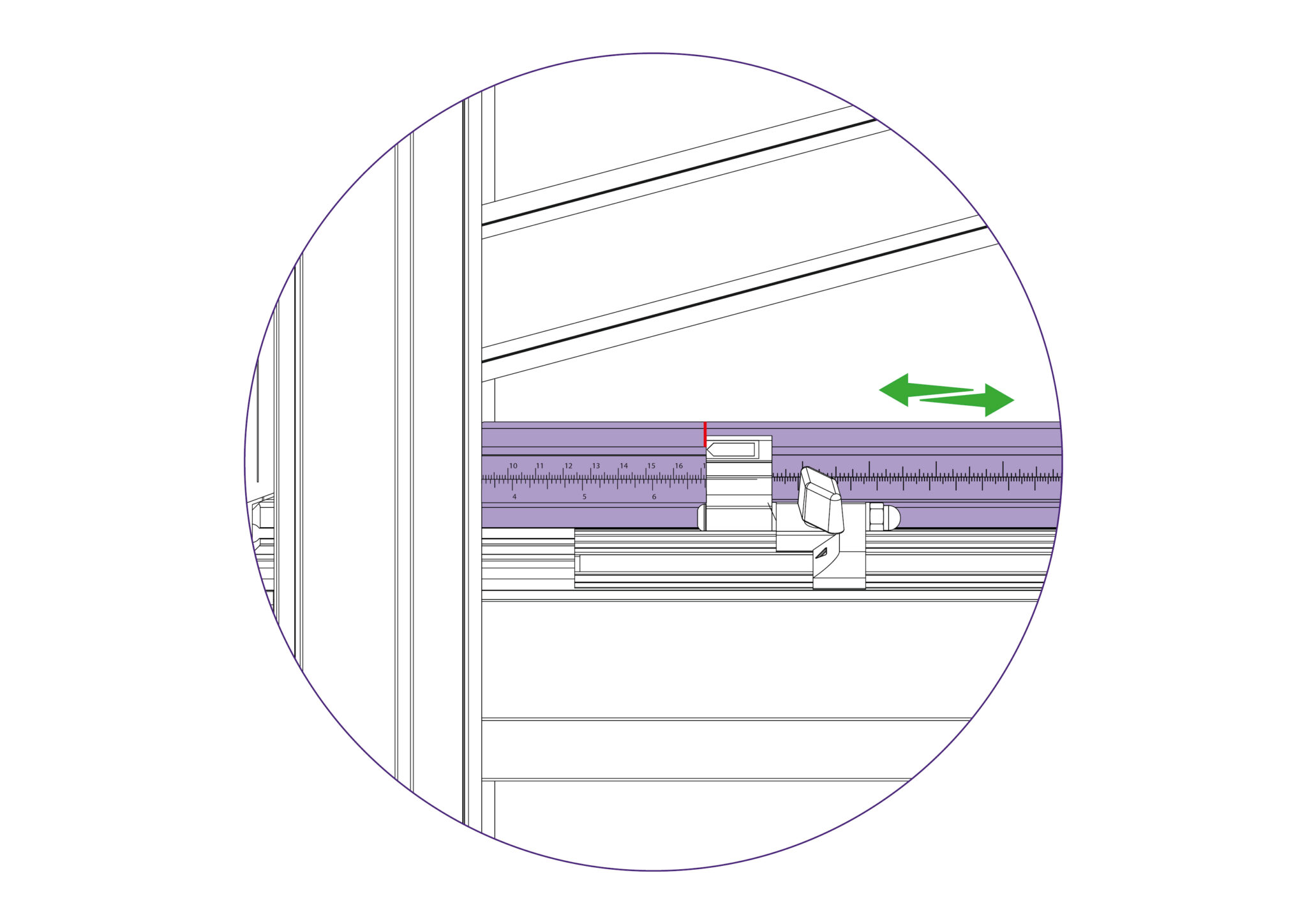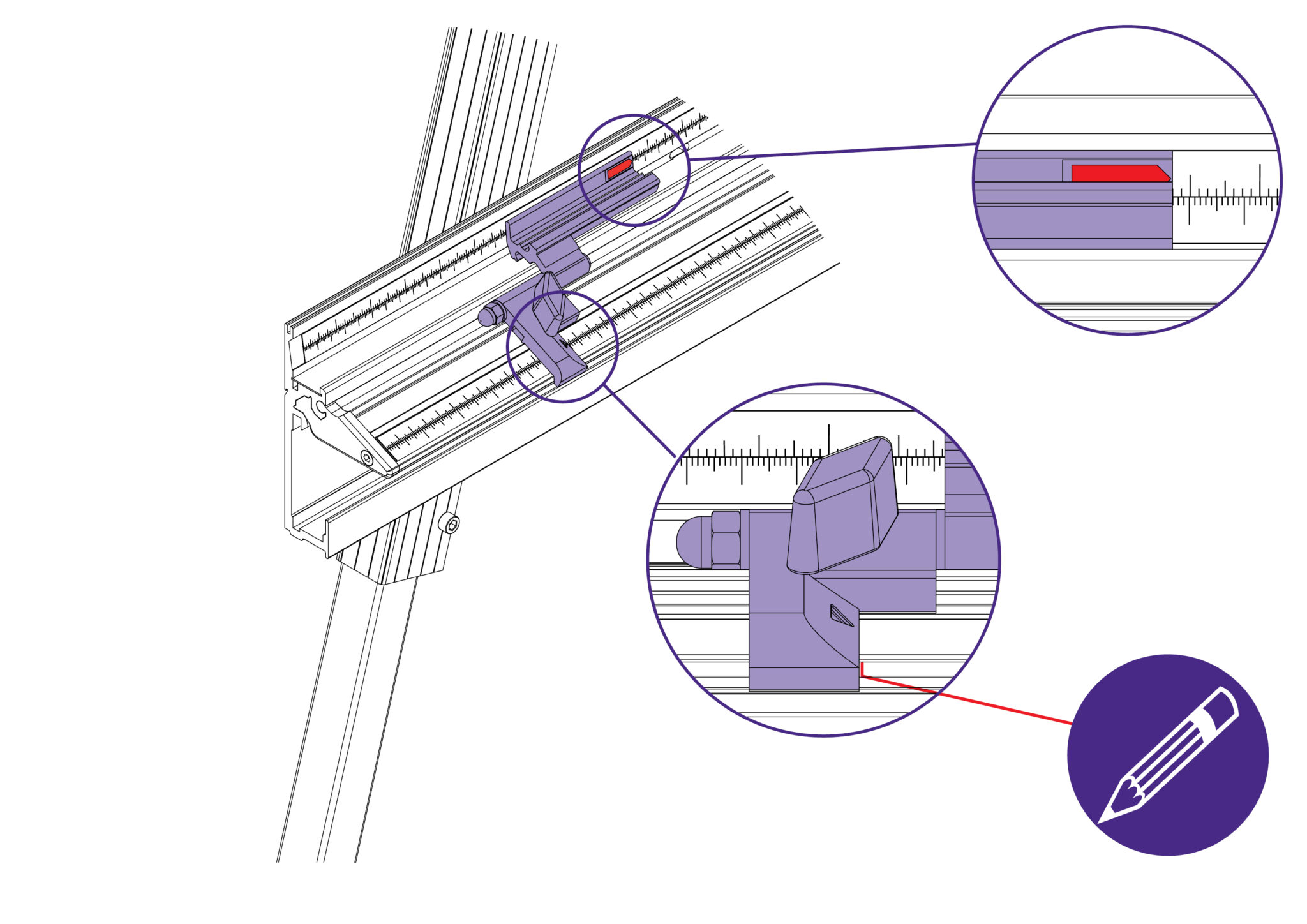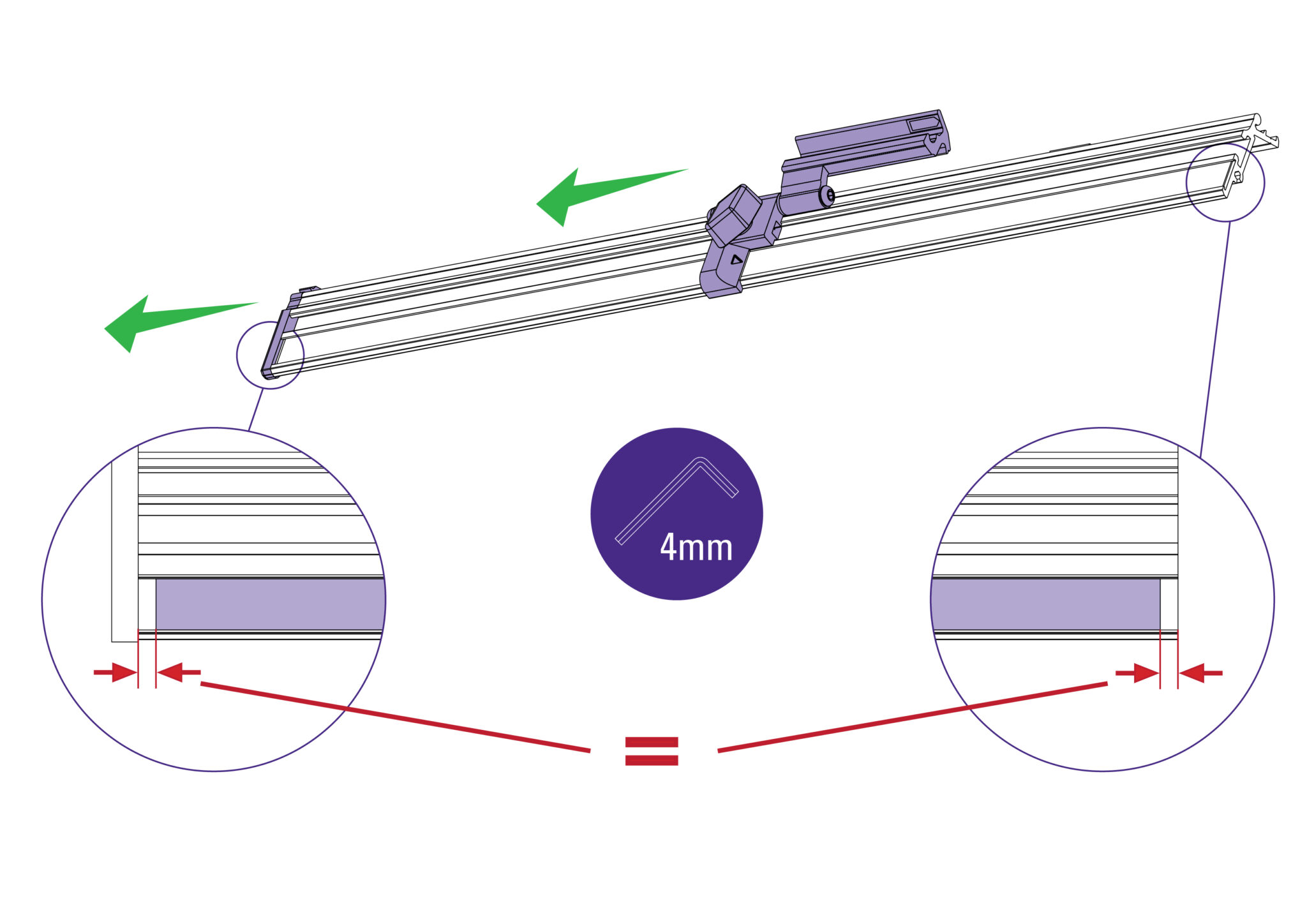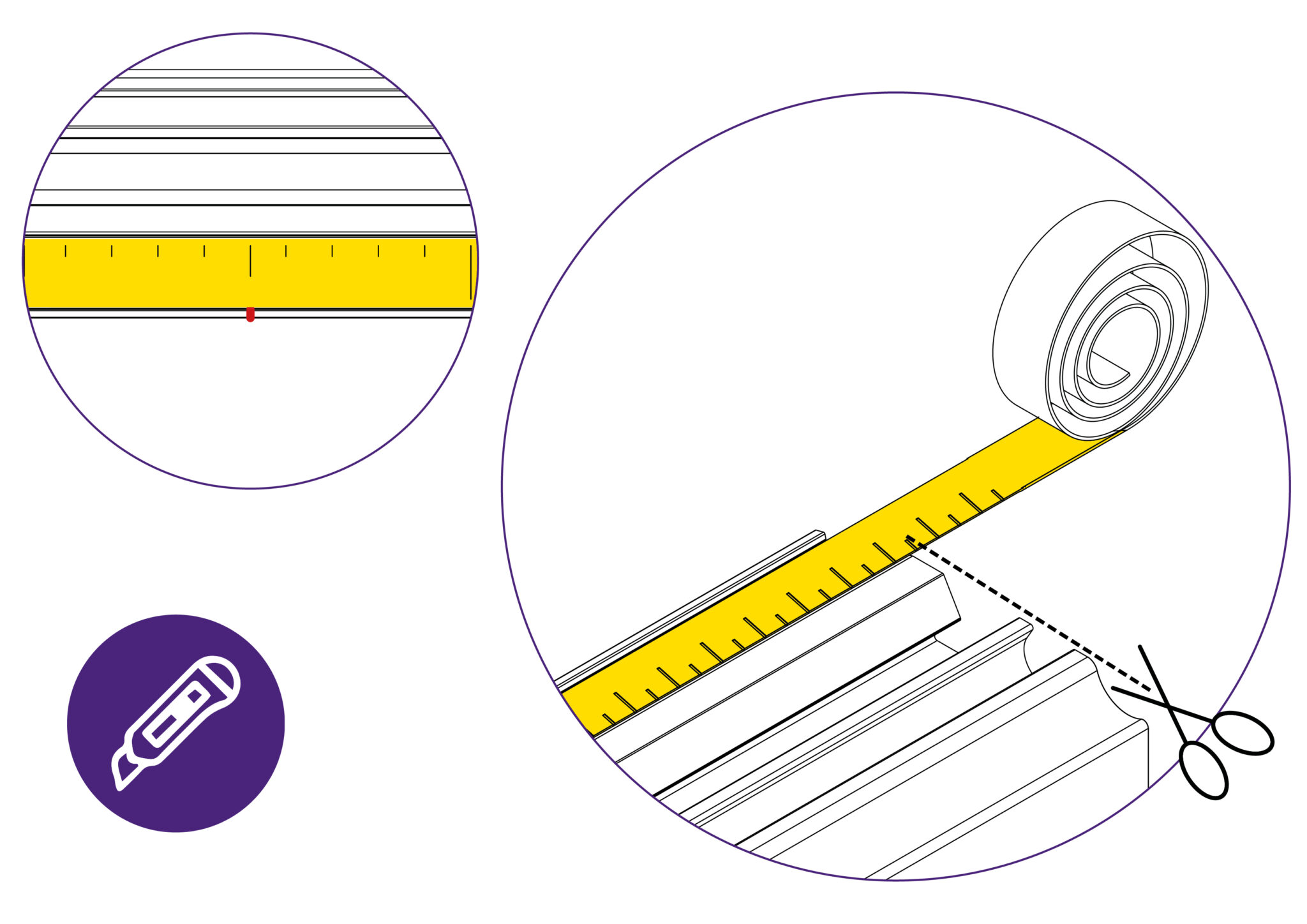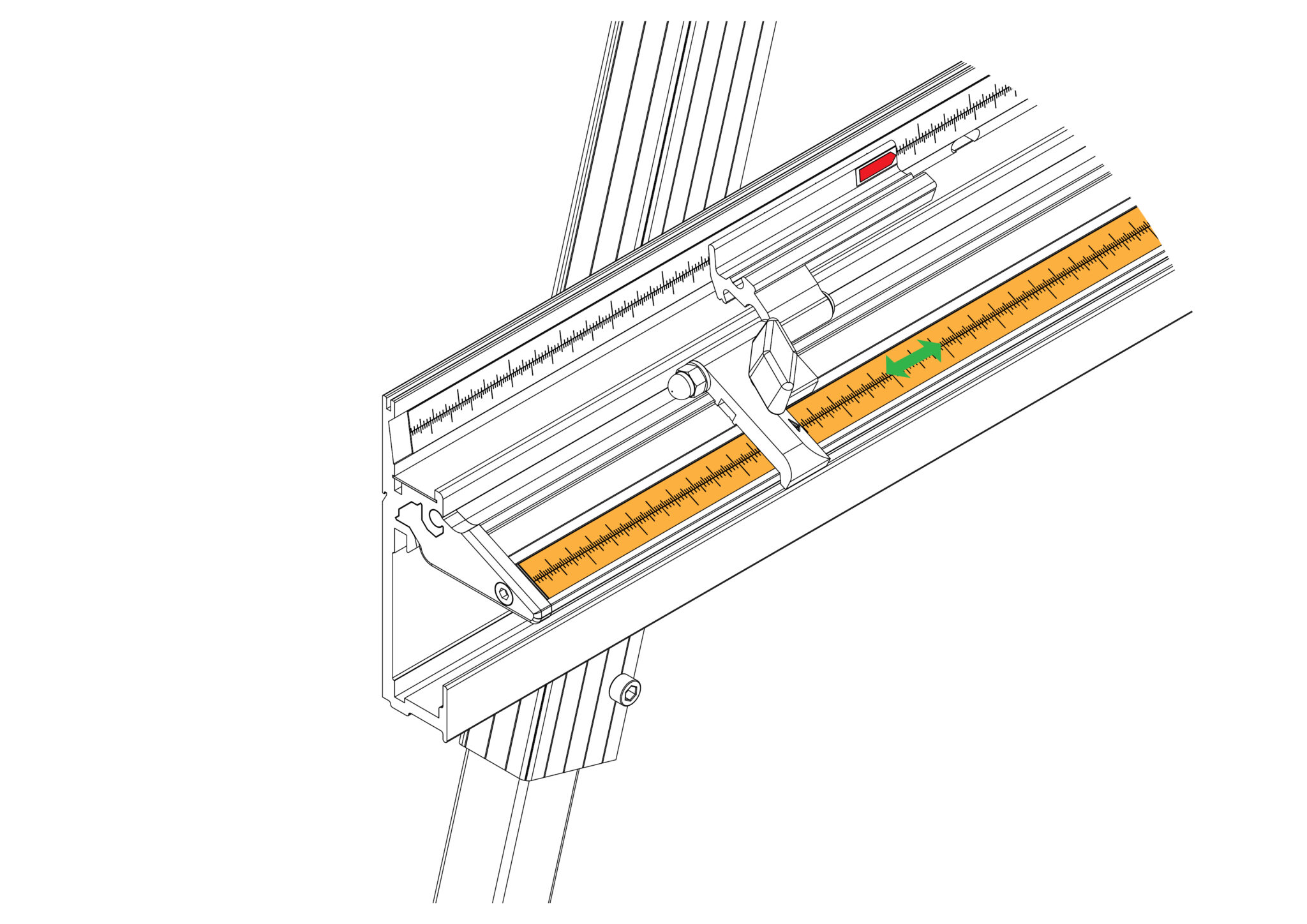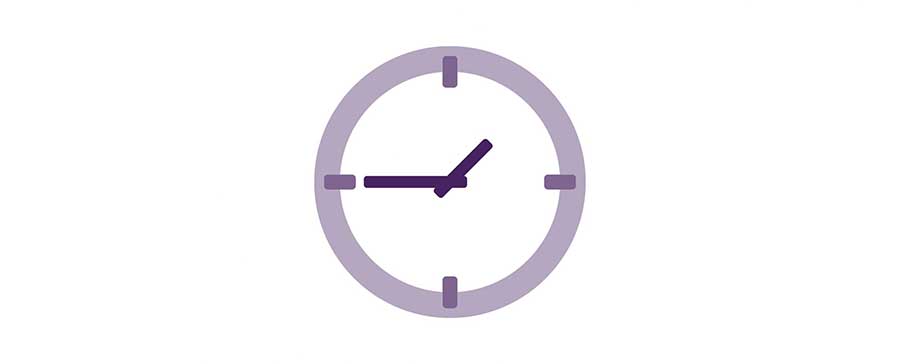
Excalibur 6000 installation manual
How to use this guide
Scroll down to view the guide.
You can expand and collapse sections using the + and – icons.
The images in this manual are expandable. Click/tap on them to enlarge.
View PDF version >
Other support resources
Register your cutter to activate your guarantee >
Visit Keencut support centre >
Visit user forum >
Installation video >
Contact Keencut >

You will need approximately 1 to 2 hours to install and calibrate your cutter.
Slacken the bottom two screws on each leg using the 5mm Allen (hex) key and extend the
telescopic parts equally to the desired length.
Re-tighten screws firmly to clamp legs in position.
Swing both legs outwards as far as they will go.
Align the handle (part P) with the cutting head’s holes and fasten the wing bolts (part Q) from the other side securely.
| Do this firmly |
Slightly fasten the two thumbscrews (part S) into the top and bottom cutting heads as shown.
Do not firmly fasten these at this point as the cutting heads would not move otherwise, as this may be required in future steps
Move the lower Cutting Head to the middle of the Main Body.
Remove the top screw (along with the washers and spacer) from each leg, using 5mm Allen (hex) key.
Remove the Squaring Adjuster Block from the right hand Leg by releasing the middle screw only.
Remove two sets of hexagon headed bolts, spacers, washers and nuts from the Main Body using a 17mm spanner (wrench).
Remove small screw and two washers from the back of the Squaring Arm (part B) using the 3mm Allen (hex) key.
Slide the Squaring Arm in from the right hand side through the gap in the Main Body and align the corresponding screw holes between the Squaring Arm and the Main Body.
Slightly raise the Squaring Arm to place one spacer in between the Main Body and the Squaring Arm on each central hole.
Fit the two hexagon bolts from the back of the Main Body through the spacer and Squaring Arm.
Fit the washers and nuts from the front, but finger tight only.
| Do this gently |
Place one spacer in between each leg and the Squaring Arm.
Fit the screws through the Squaring Arm and into each leg using the 5mm Allen (hex) key, but do not tighten fully.
| Do this gently |
Refit the squaring adjuster block by firstly sliding the steel bar into the opening in the Squaring Arm, then align the heads of the two screws in the leg to fit the top and bottom holes in the adjuster block.
The screws fixing the Squaring Arm to the machine should still be loose and allow it some movement to help alignment.
Insert and tighten the screw in the middle hole.
Move the Cutting Head to its lowest position.
Get help to slowly lift the machine and lean it so that the front faces towards the wall. If the machine is too high or too low, bring the machine back down and refer back to Adjusting the legs> to adjust the machine height.
If the height is satisfactory, carefully place a scrap of card or board in between the top end of the machine and the wall to prevent any damage.
| Be careful when lifting |
Re-fasten the screw and two washers in the Squaring Arm using the 3mm Allen (hex) key.
Tighten the four screws fully using the 6mm Allen (hex) key to secure the legs at the top of the Main Body.
| Do this firmly |
Use one of the short screws (part F) to fix the support arm to the main body, and one of the long screws (part E) in each of the holes along the legs of the machine. Ensure the ends of the supports are firmly against the Main Body and the screws are aligned with the special grooves as explained above.
If a free standing kit is to be fitted to the machine, proceed directly to Fitting the optional free standing kit >
Fit the Wall Mounting Bracket to the top of the Main Body, and fasten the screws finger tight only.
| Do this gently |
NOTE: If a free standing kit is to be fitted to the machine, proceed directly to Fitting the optional free standing kit >
Stand the machine vertical and turn it around so that the machine is now facing away from the wall.
| Be careful when lifting |
The Wall Mounting Bracket should lay flush against the wall. Mark the position of the wall fixings with a short pencil.
Move the machine away and remove the Wall Mounting Bracket.
| Be careful when lifting |
Attach the Bracket to the wall in the marked position with appropriate fixings then reposition and fasten the machine to the bracket.
Proceed to Checking the machine for squareness >
Extend the telescopic leg to the desired length such that it levels with the extension of the front two legs.
Assistance will be needed for the following stages
Get help to stand the machine up and hold it while the free standing leg is fixed to the bracket using the 6mm Allen (hex) key and 13mm spanner (wrench). The nuts and screws (Parts H, I, and J) are provided with the main machine.
| Do this firmly |
Swing down the stay and attach the fixing block to the back of the main body. Tighten all three screws on the stay (using the 5mm & 6mm Allen (hex) keys).
Extend the telescopic leg so the machine stands evenly.
Remove the protective film from all the blue support strips. This is to be done on all the five Support Arm strips.
Slide the measuring stops on to the left and right hand Easy Measuring Scales.
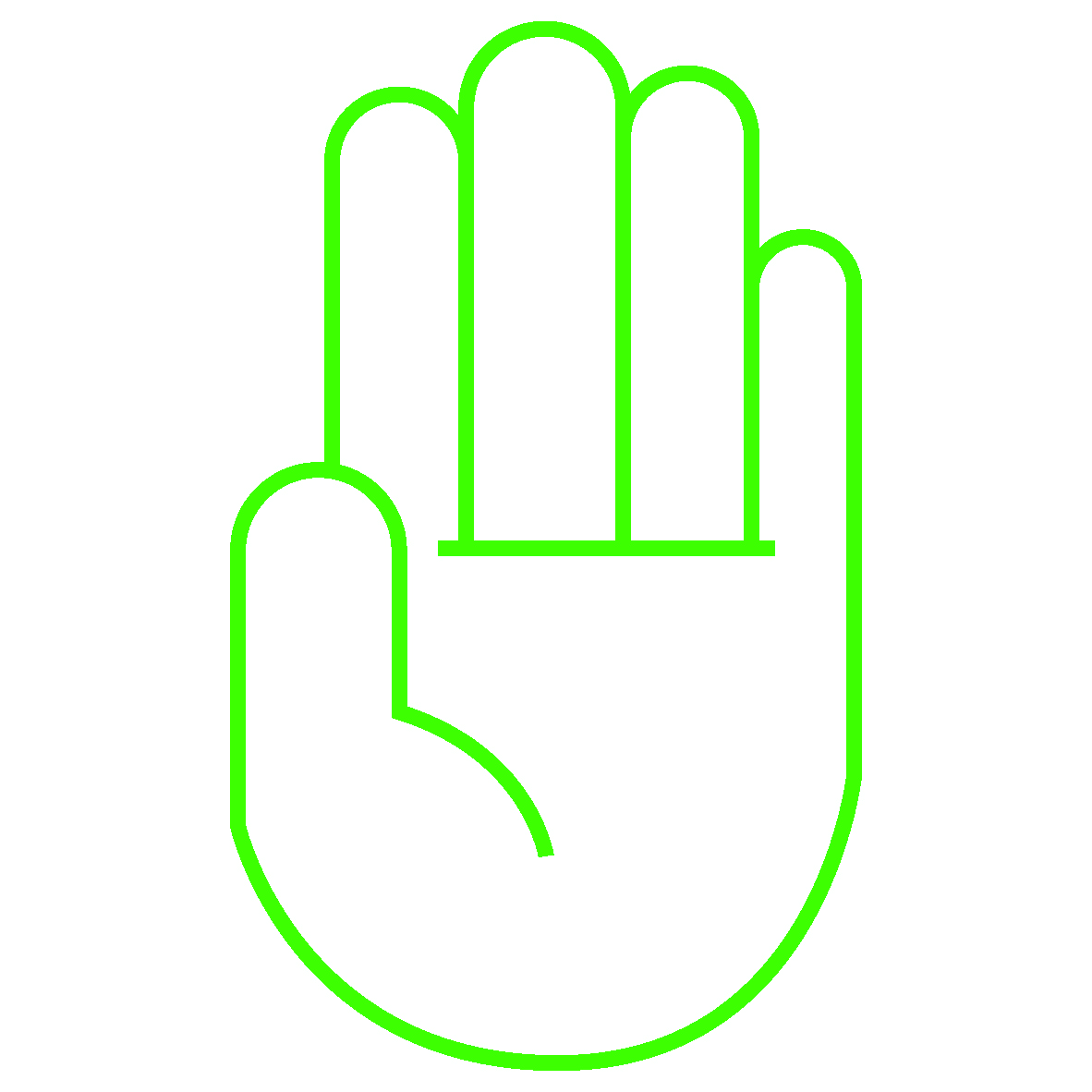 |
Left hand side |
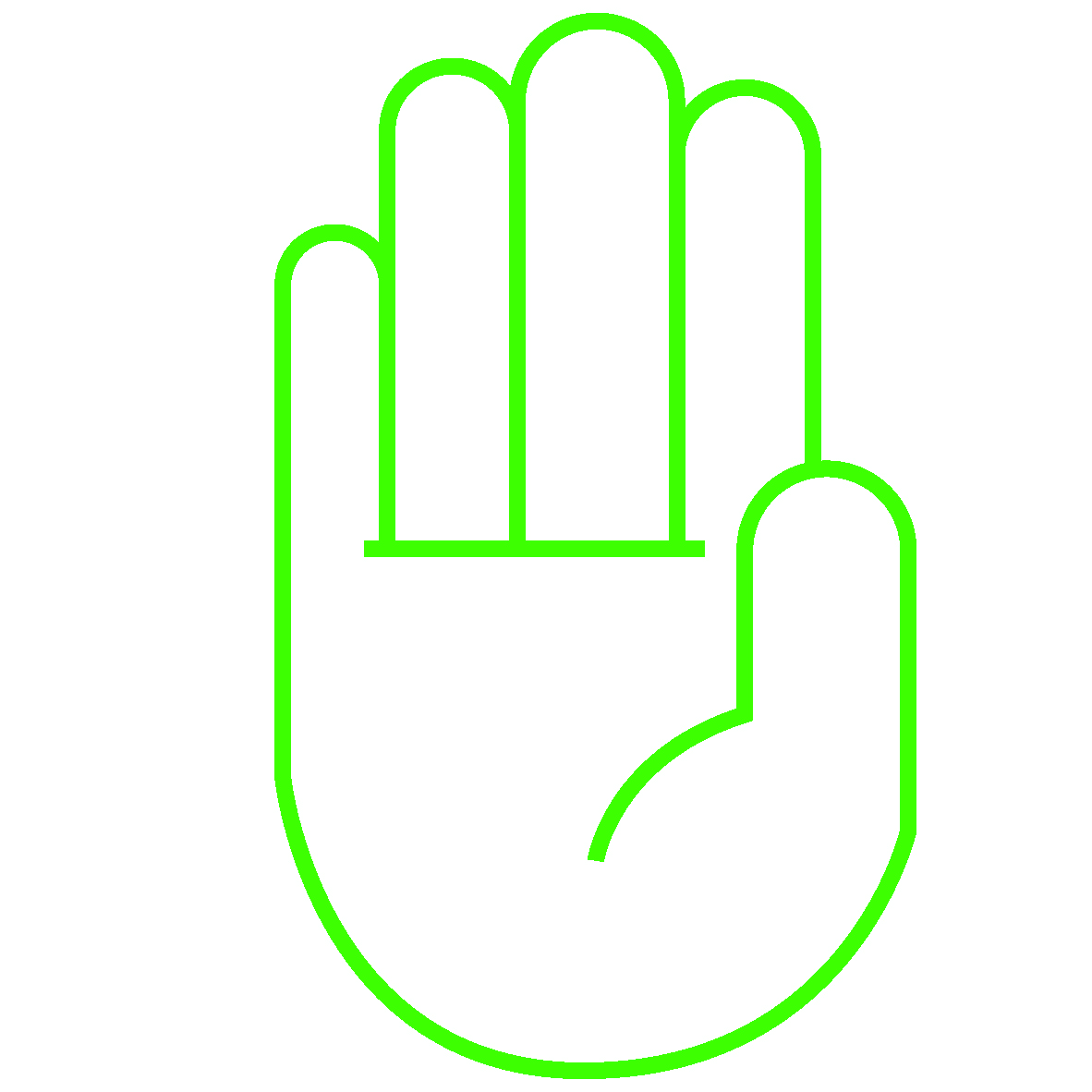 |
Right hand side |
A) Loosen the two screws so the fixing blocks allow the Easy Measuring Scale to slide onto the squaring arm.
B) Ensure the end cap is flush with end of the squaring arm and tighten the two fixing screws using a 4mm Allen (Hex) key.
| Do this firmly |
 |
Left hand side |
Repeat the process on the right hand side.
Note: It would be useful to cover the “Get to know your cutter”> sections in the User Manual before proceeding with the following steps.
Place the board on the machine vertically as shown and apply the clamp ensuring the bottom edge is in firm contact with the Squaring Arm.
Select the cutting blade on the Multi-Tool Cutting Head.
Cut into the top board to produce a cut approximately 3cm (1”) long. Disengage the cutter using the cutter release lever.
Lower the cutter and make a similar cut at the bottom of the board by pressing the blade through the board about 3cm (1″) from the bottom edge of the board.
Unclamp and turn the board around laterally (like the page in a book) and place it back in the machine so the same edge is still on the Squaring Arm, but do not clamp it.
Align and engage the blade so it enters the previous made cut at the bottom edge of the board. Now apply the clamp.
Raise the cutter to the top of the board, and if the machine is square the blade should enter the same cut as made previously. If not refer to Adjusting the squareness> to make the necessary
adjustment.
If it is square, continue to Calibrating the vertical scale>.
NOTE: Before making any adjustments carry out the squareness check as described in Checking the machine for squareness>
It is assumed that the board used for the test is still clamped in the machine. From the test results, determine if the last cut made in the top of the board is to the left or right of the previous cut.
Use a 5mm Allen (Hex) key to slacken the two screws joining the squaring arm to the two legs.
Use a 17mm spanner to slacken the left hand nut joining the Squaring Arm to the Main Body, and make sure the right hand nut is tight.
Release the clamp and position the board such that the blade is held in the cut on the bottom edge of the board. Press down on the board to make sure it is in good contact with the Squaring Arm.
Turn the squaring adjustment knob on the right hand leg in the direction described next, dependent upon the position of the top two cuts.
If the second cut is to the right of the first cut, turn the adjustment screw clockwise when viewed from underneath.
If the second cut is to the left of the first cut turn the adjustment screw counter-clockwise when viewed from underneath.
The adjustment screw should be incrementally turned so that when the blade is moved to the top of the board it cuts between two existing cuts. Make sure that when assessing the location of the cut the Squaring Arm has good contact with the material being used.
Tighten the four screws/nuts joining the Squaring Arm to the legs and the Main Body respectively, using a 5mm Allen (hex) key and a 17mm spanner once the squareness has been adjusted.
Take a small piece of board and accurately measure its’ height. Place the board on to the material channel of the Squaring Arm such that it lays over the groove where the scale is to be applied.
With a pencil, mark a fine line level with the top edge of the board adjacent to the groove.
Remove the release paper from the Vertical scale and stick it in place within the groove, such that the pencil mark lines up with the measured dimension of the board. Trim any excess from the ends.
Place a piece of board in the machine and apply the clamp. Mark the top edge of the Squaring Arm with a pencil (this can be removed with an eraser later) adjacent to the left hand edge of the board.
Cut the board and measure the width of the cut.
Peel the backing tape from the scale (part N) and place it in its groove so the pencil mark lines up with the measured dimension of the board. Trim the right and left hand end of the scale accordingly.
Clamp another piece of board in the machine and move the production stop up to it.
Cut the board and measure the width of the cut.
If the width of the cut board does not match the scale measurement that aligns with production stop, calibration would be required.
Otherwise, proceed to “Calibrating the Easy Measuring Scale”>.
The top edge of the Squaring Arm slides left to right to enable calibration. Use the 3mm Allen (hex) key to remove the screw in the back of the Squaring Arm.
Adjust the sliding scale so that the production stop indicates the measured size of the board.
Align the material stop with a measurement on the squaring arm and make note of this measurement. Make a pencil mark on the aluminium as shown.
Remove end cap using 4mm Allen (hex) key. Remove the measuring stop. Check the steel strip for the measuring tape is centered along its length.
Apply the scale to the steel strip so the recorded measurement on the tape aligns with the pencil mark. Carefully trim the excess tape at each end of the steel strip.
Replace the measuring stop and the end cap.
Fine adjustments can be made by sliding the steel measuring strip.
Repeat process on right hand side.
Registering your Excalibur 6000 machine will activate your 5 year guarantee.
See the Excalibur 6000 User Guide for advice on cutting techniques, using the different cutting heads and care and maintenance of your machine.


